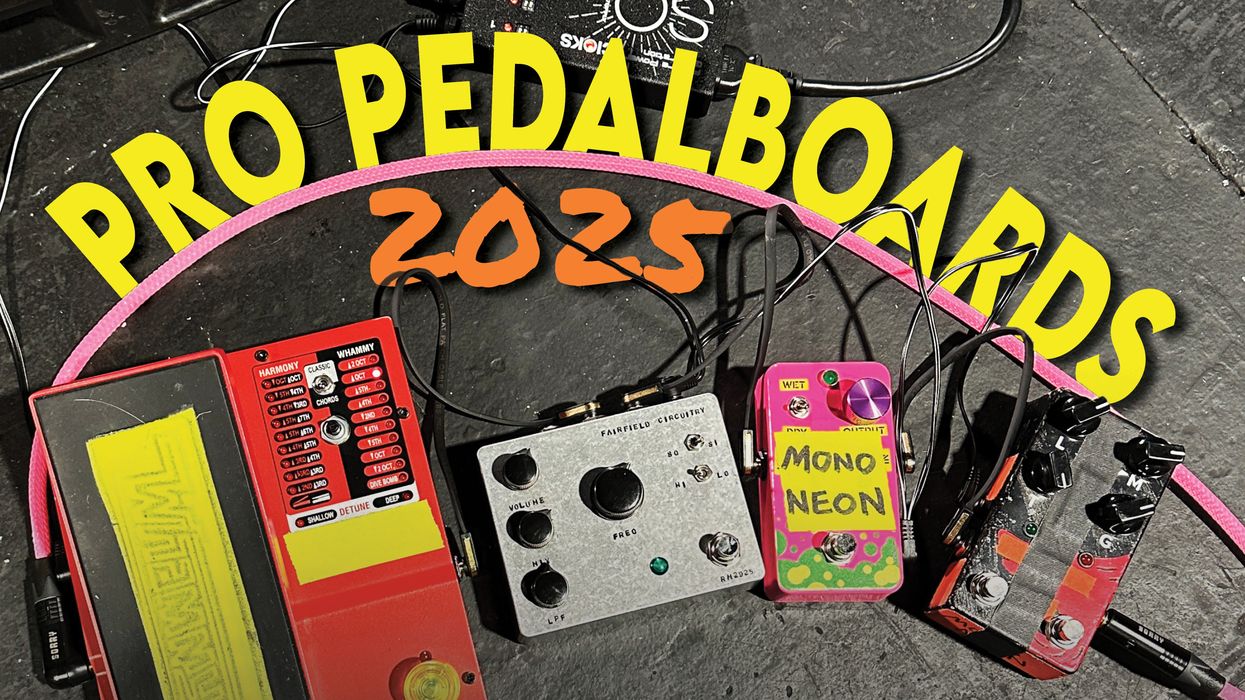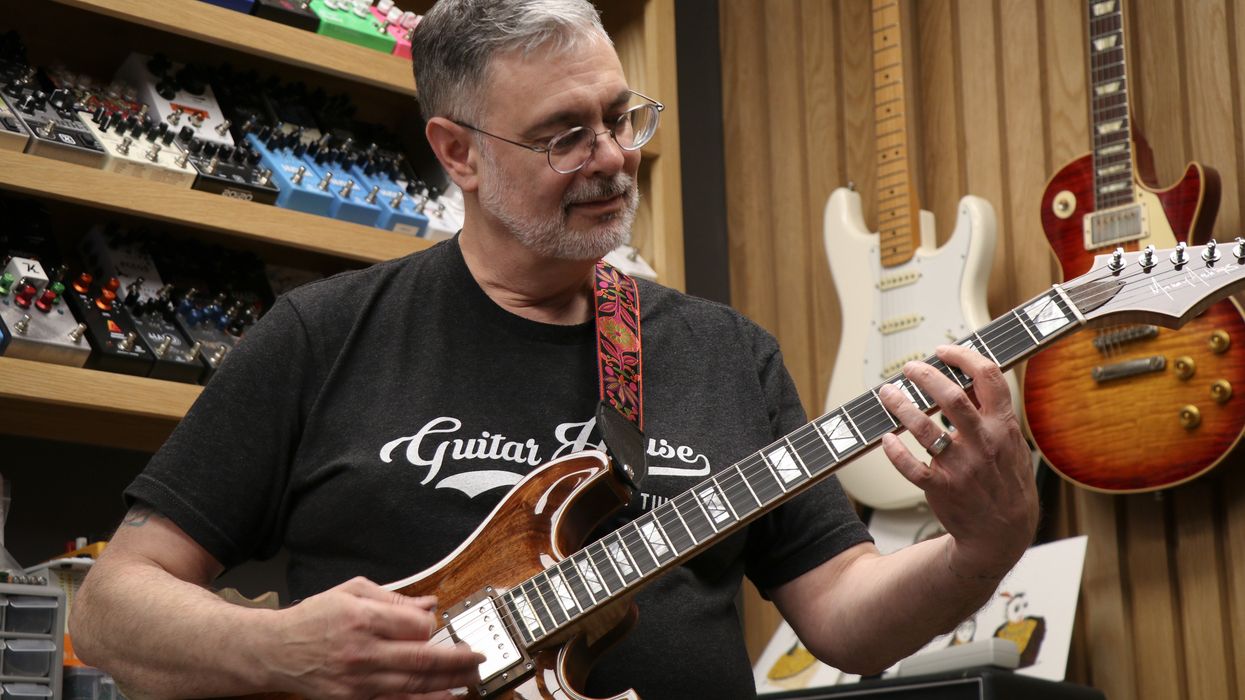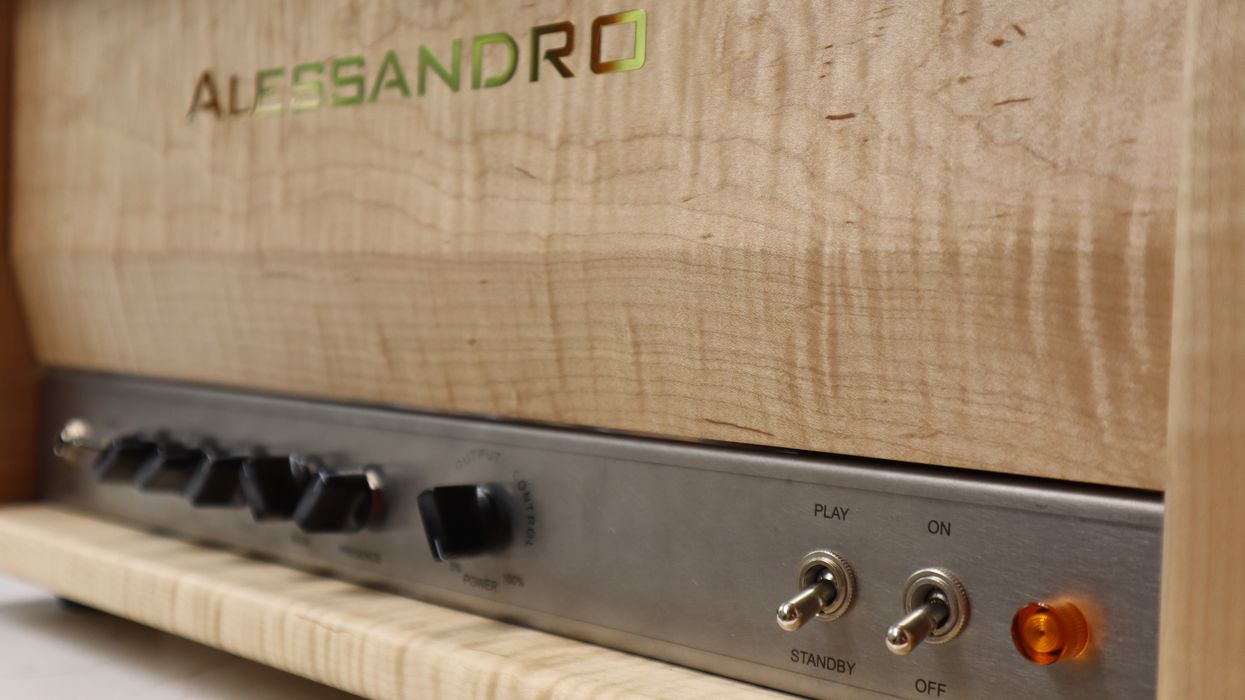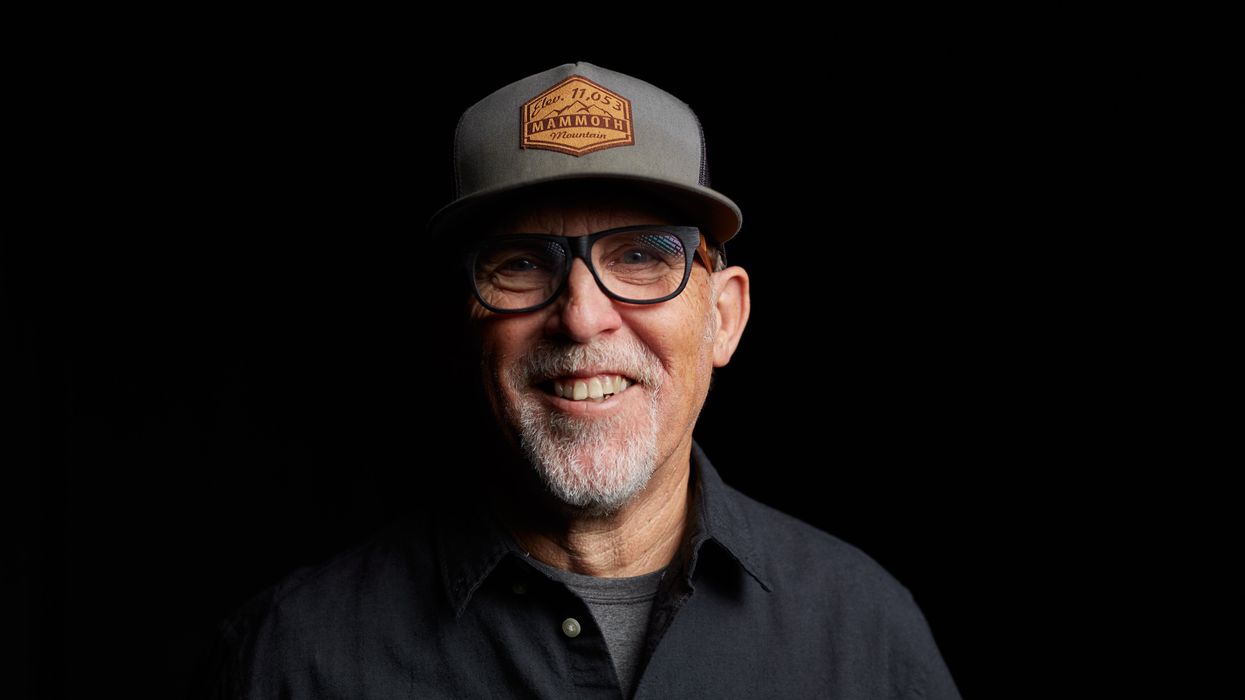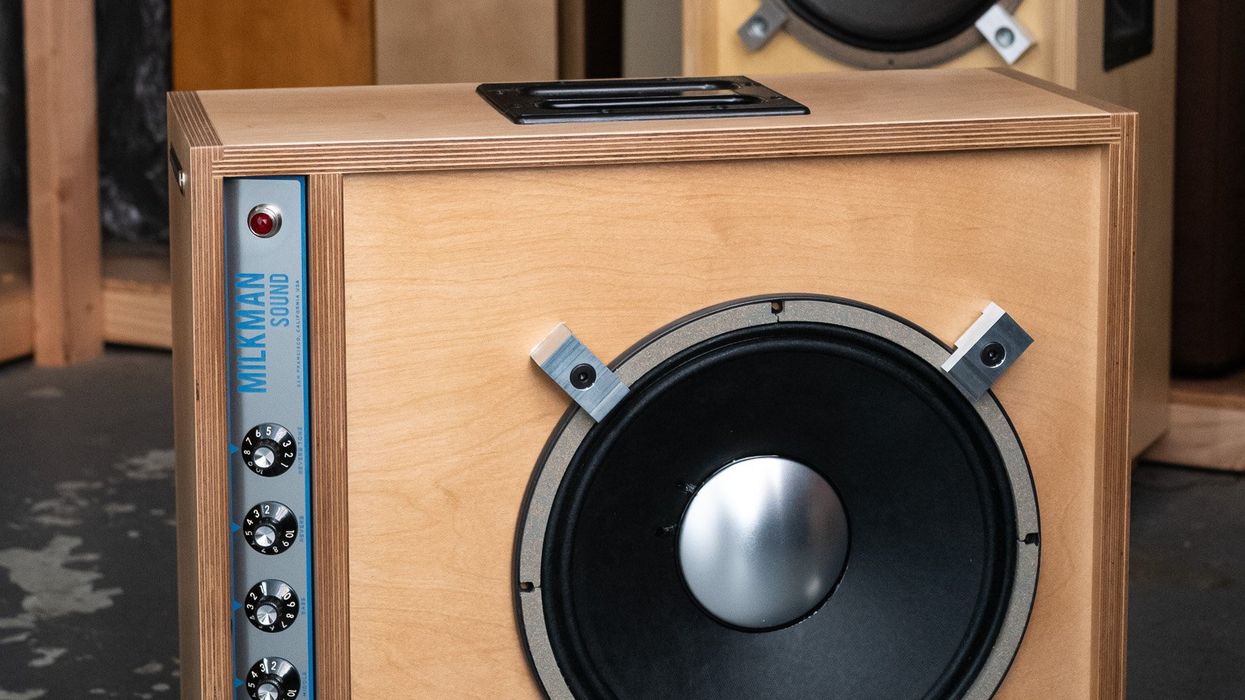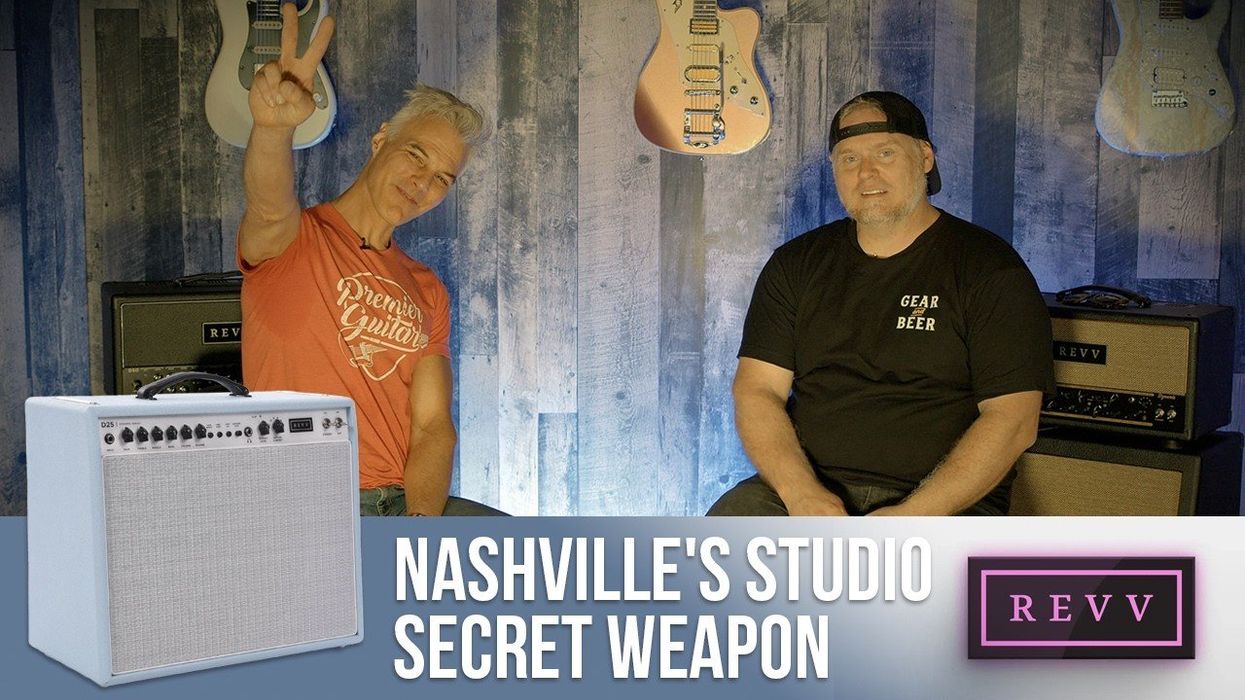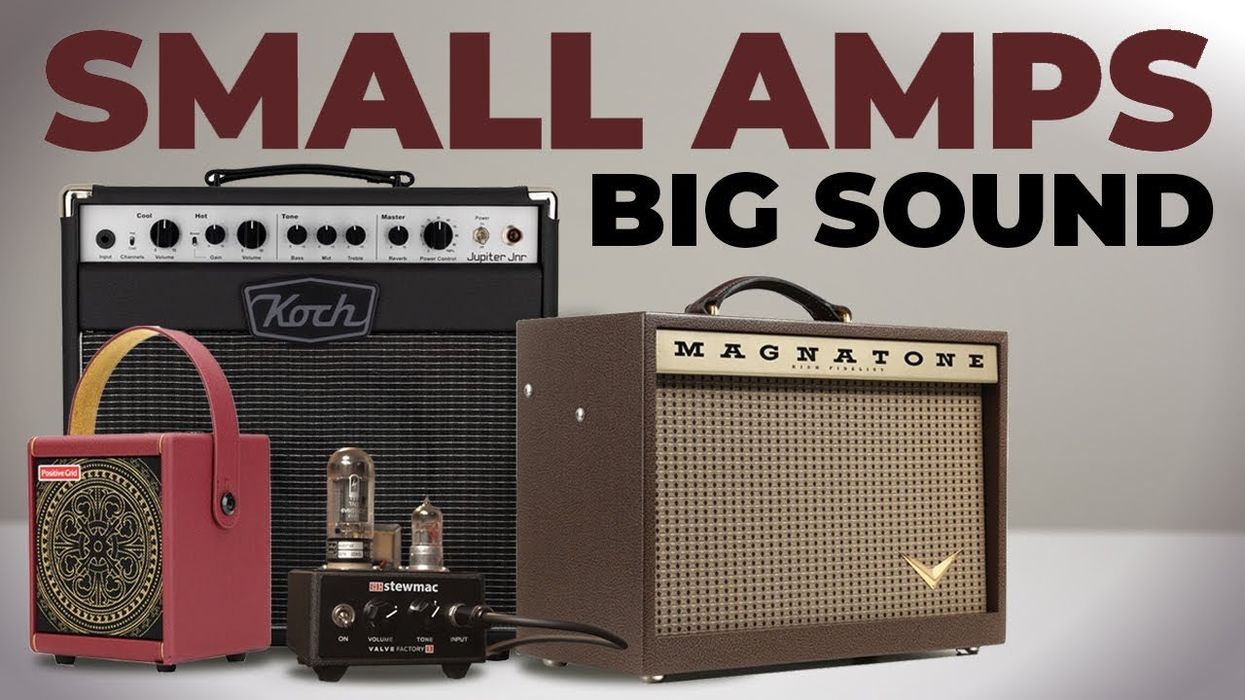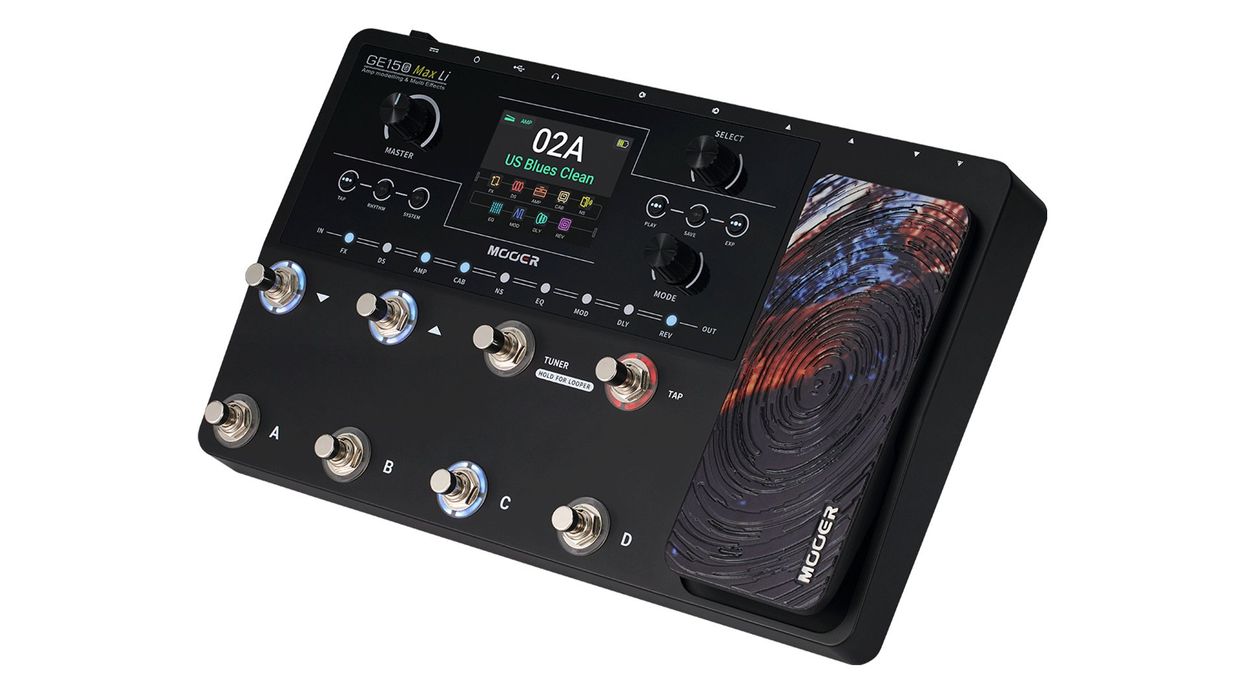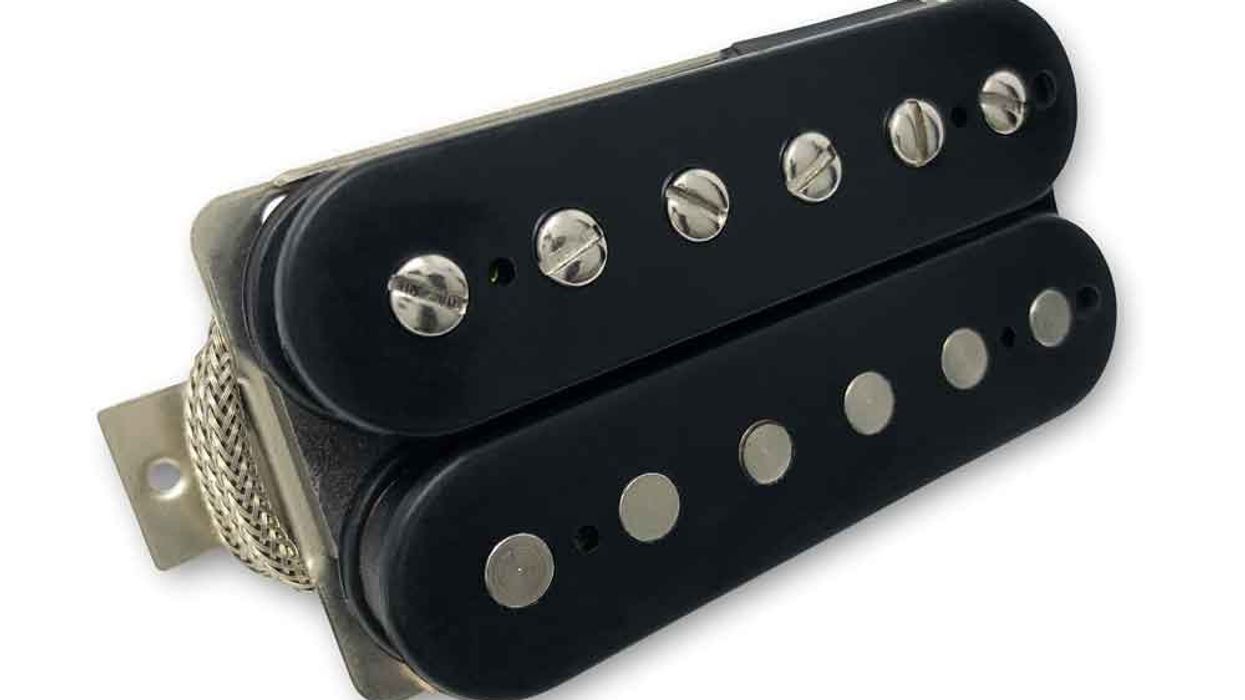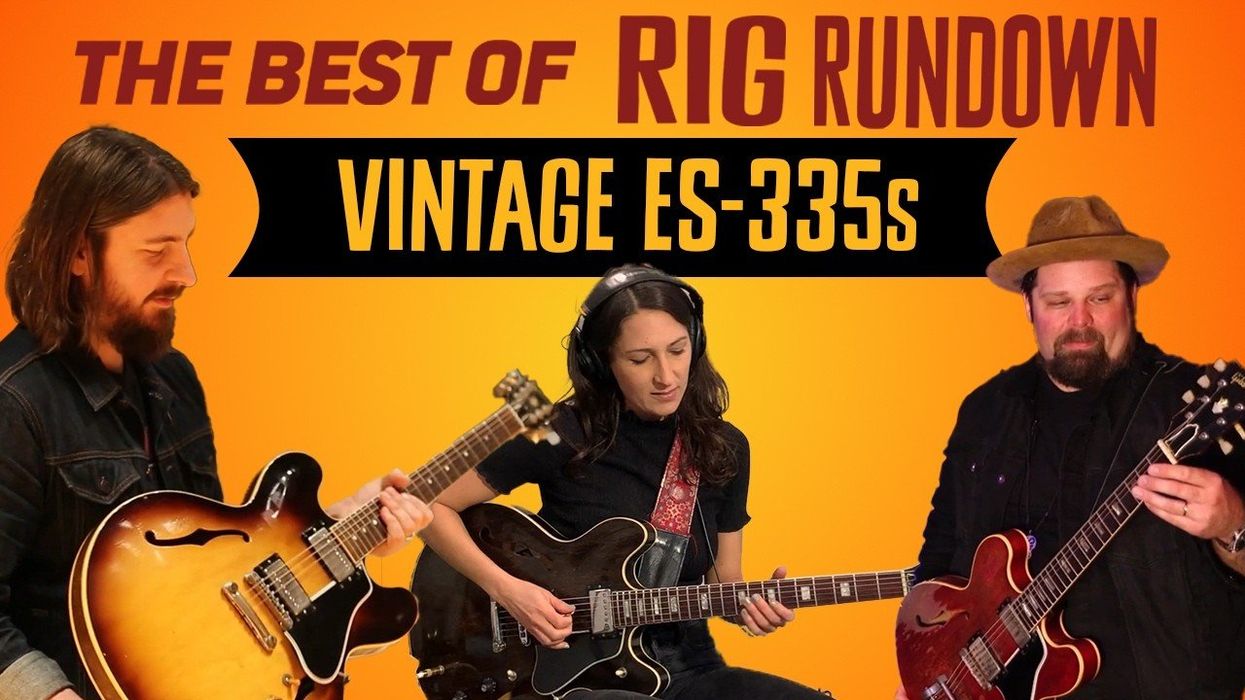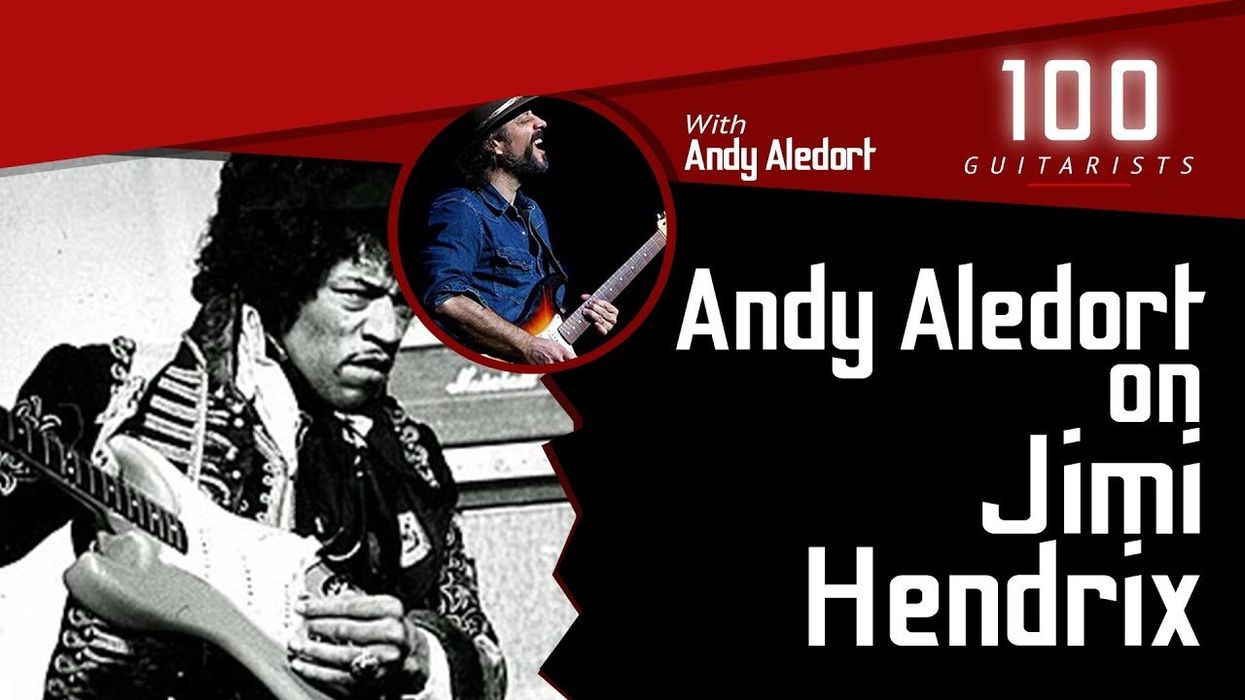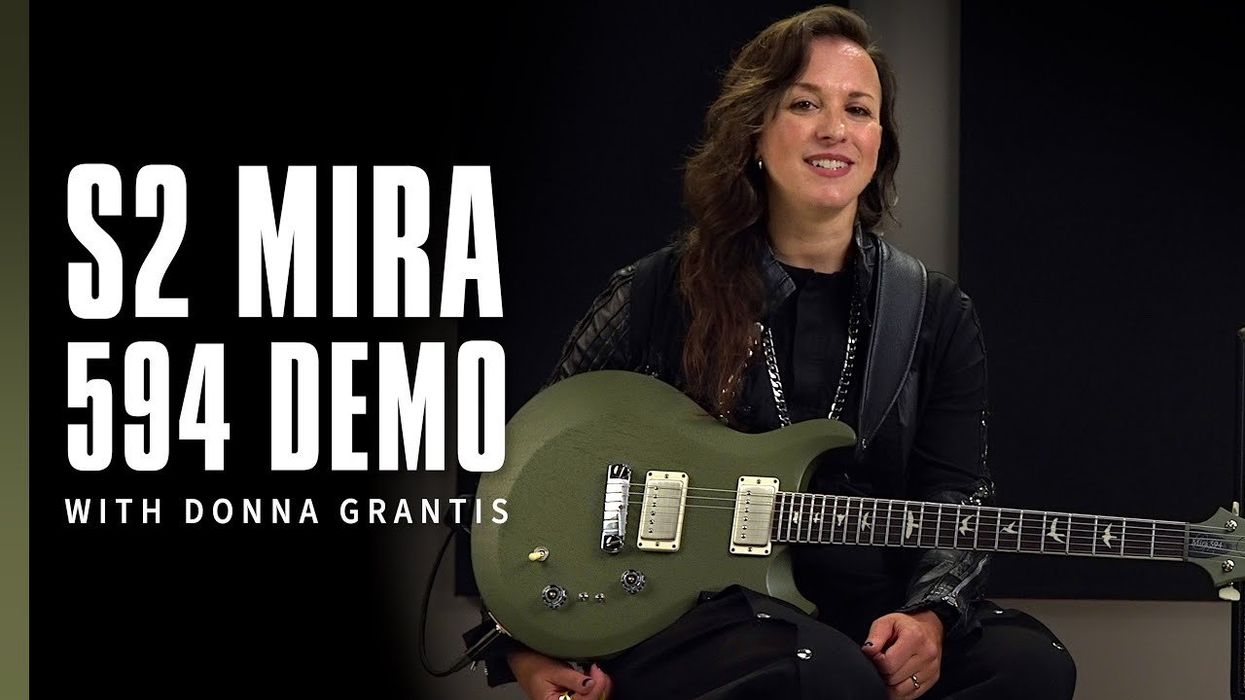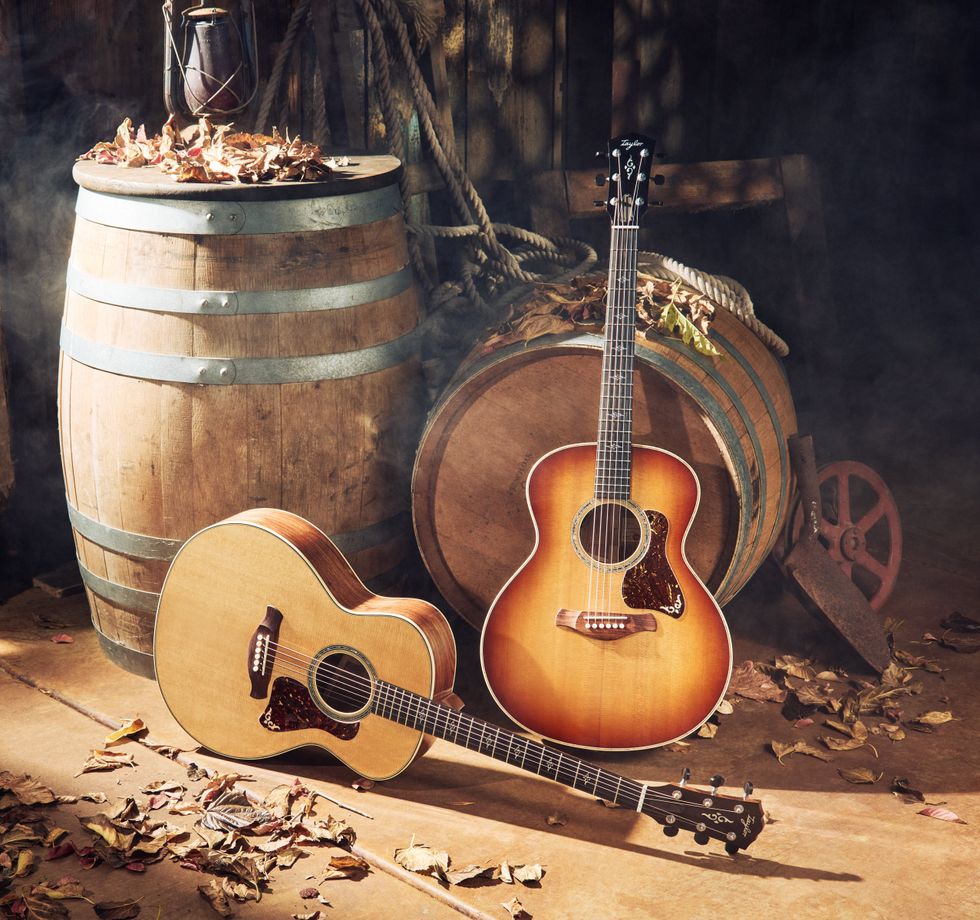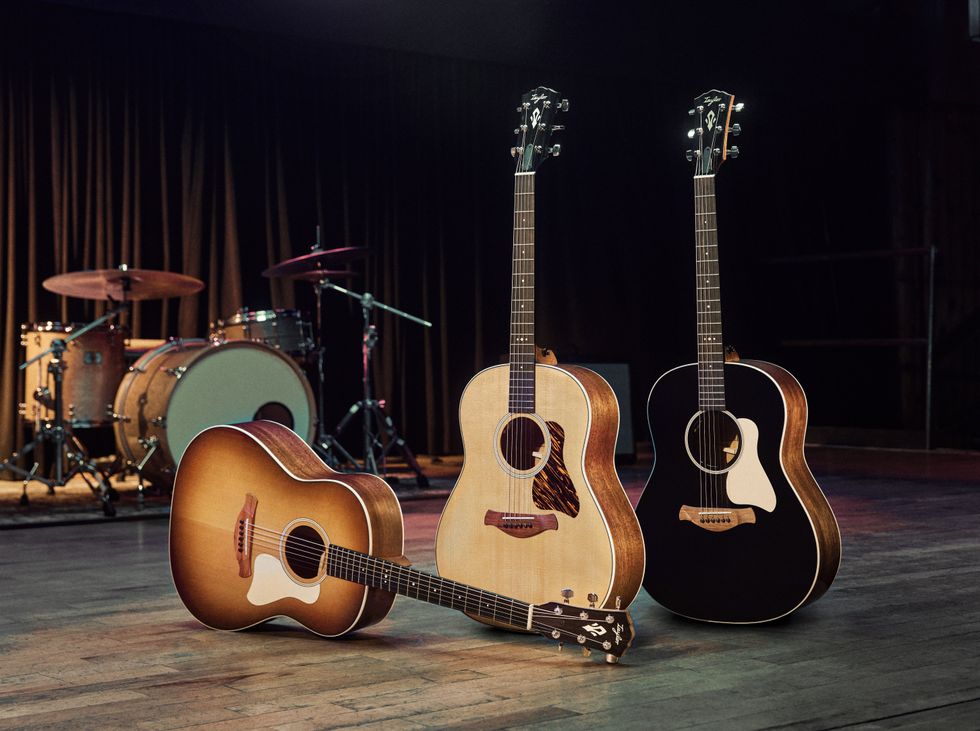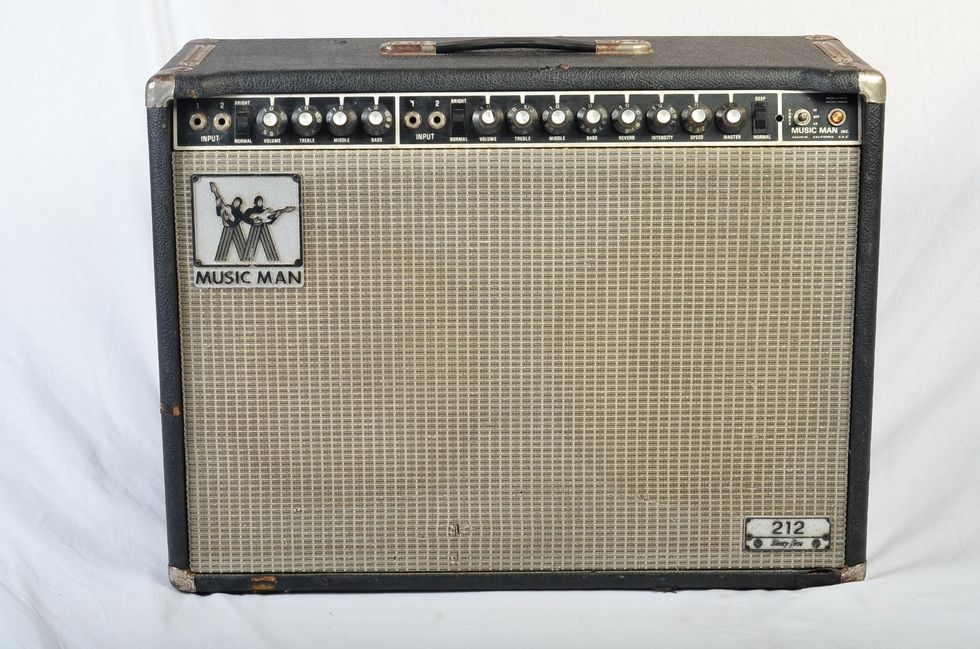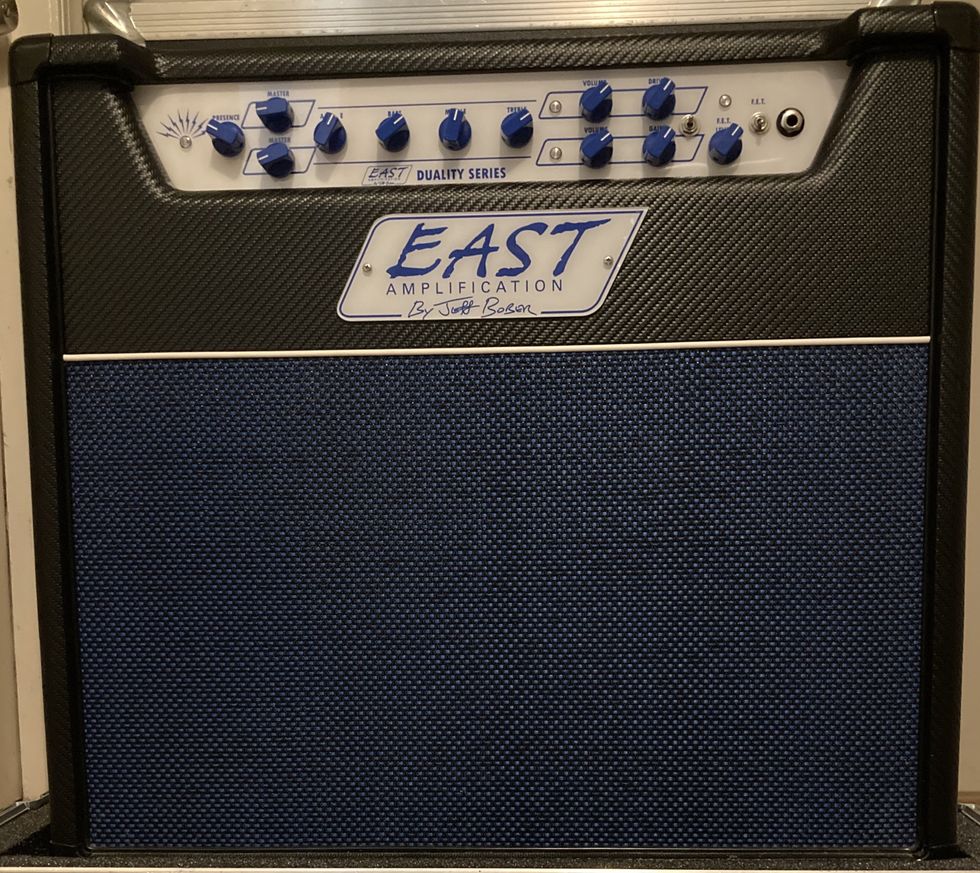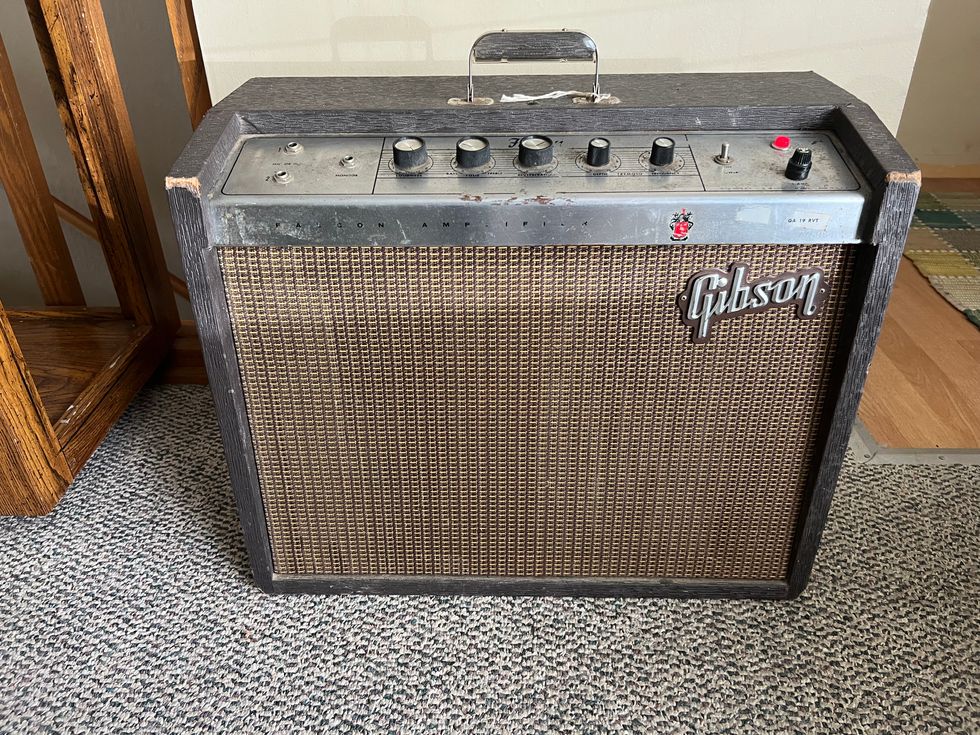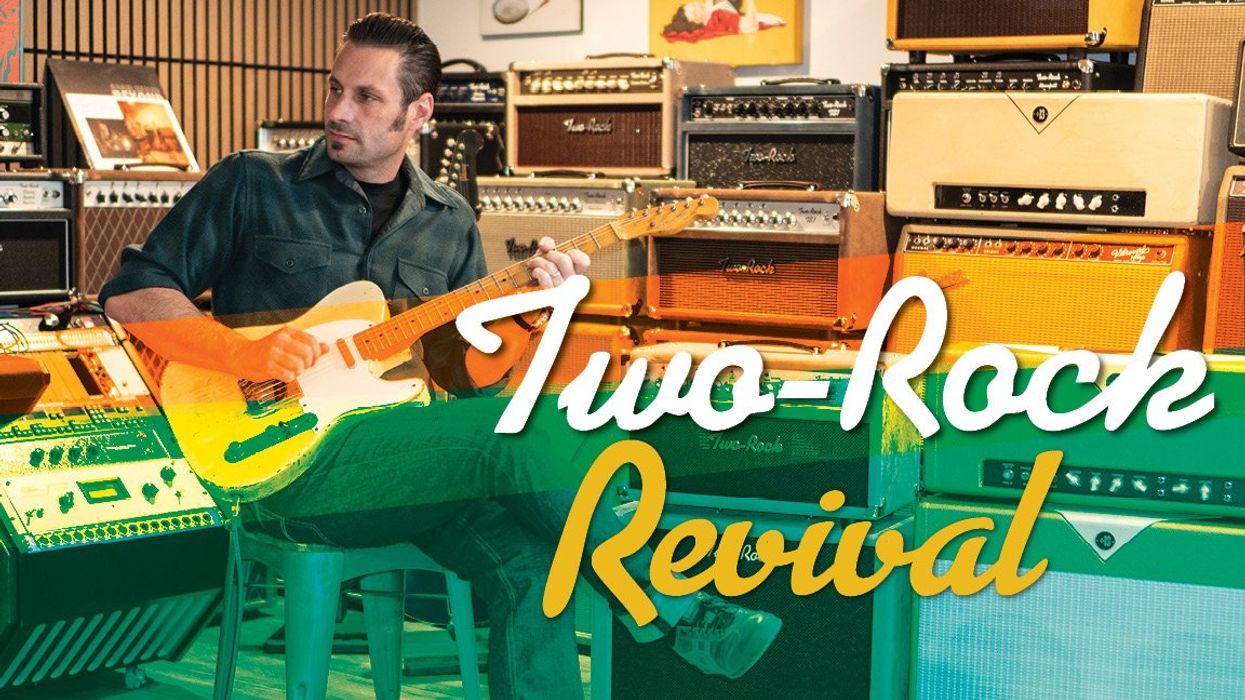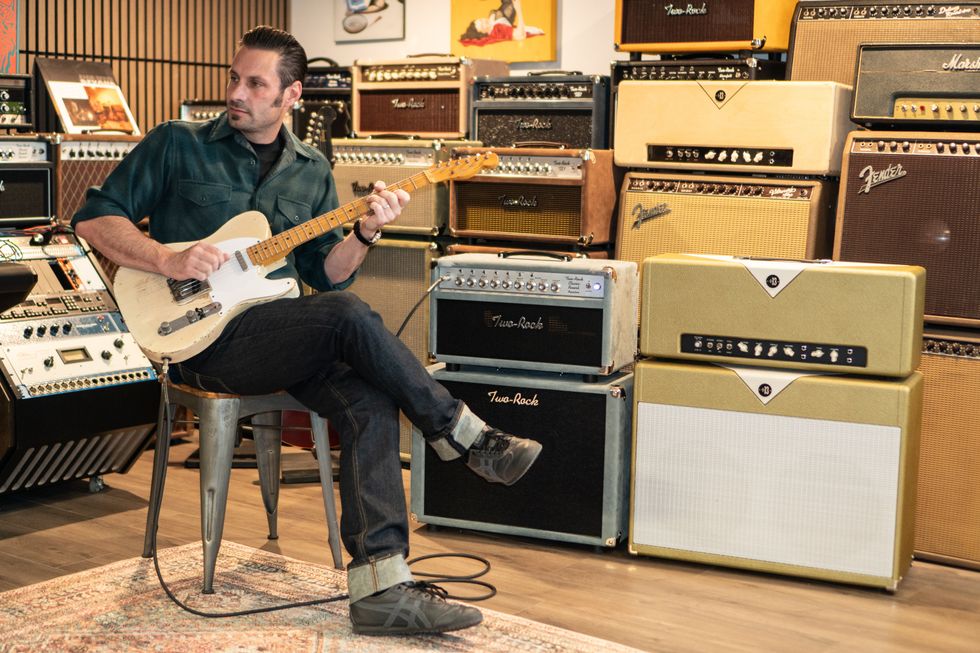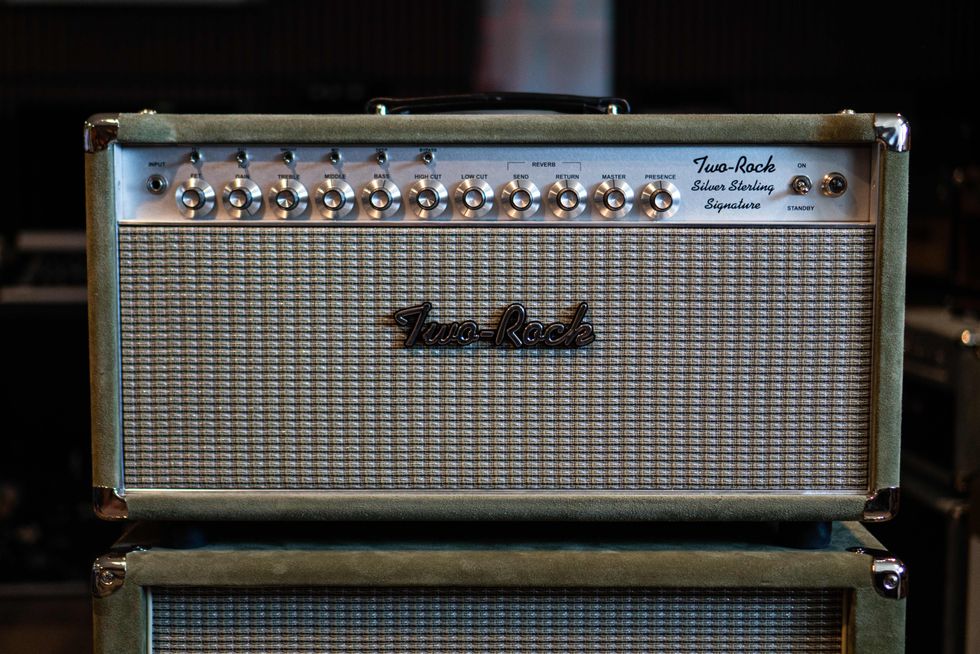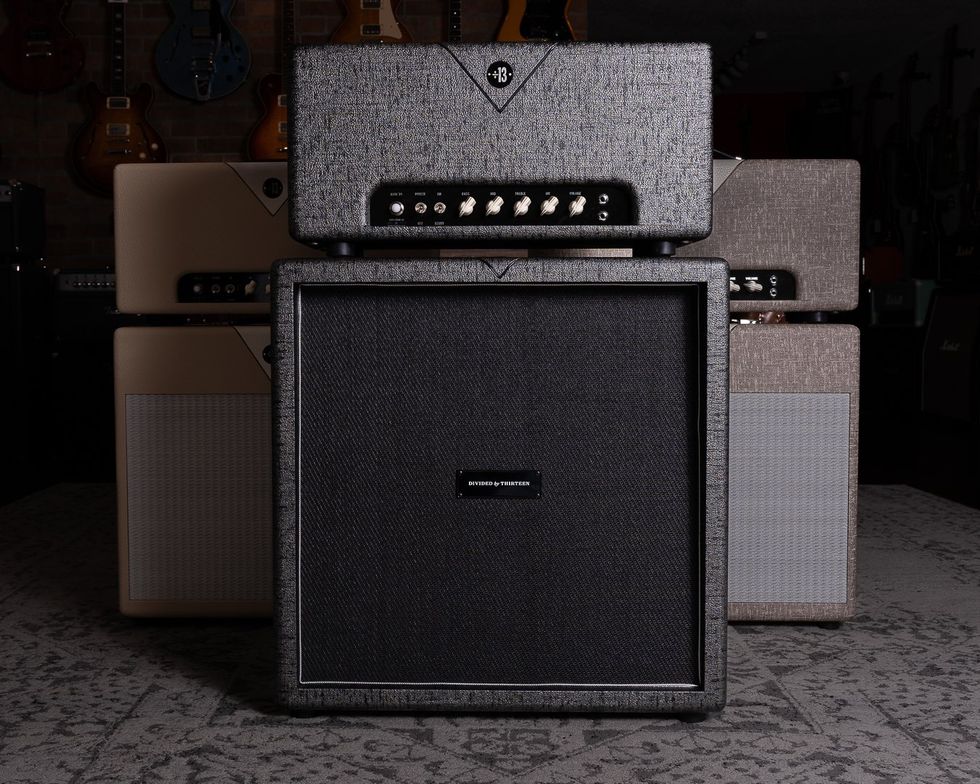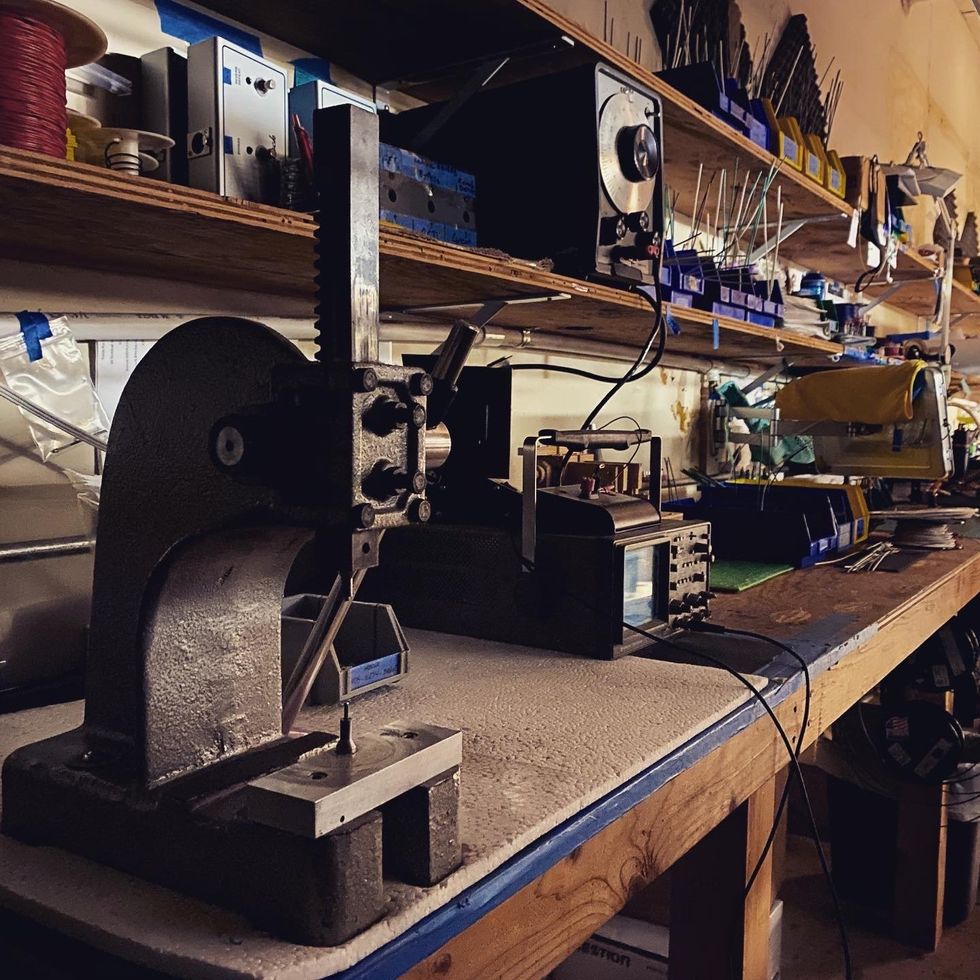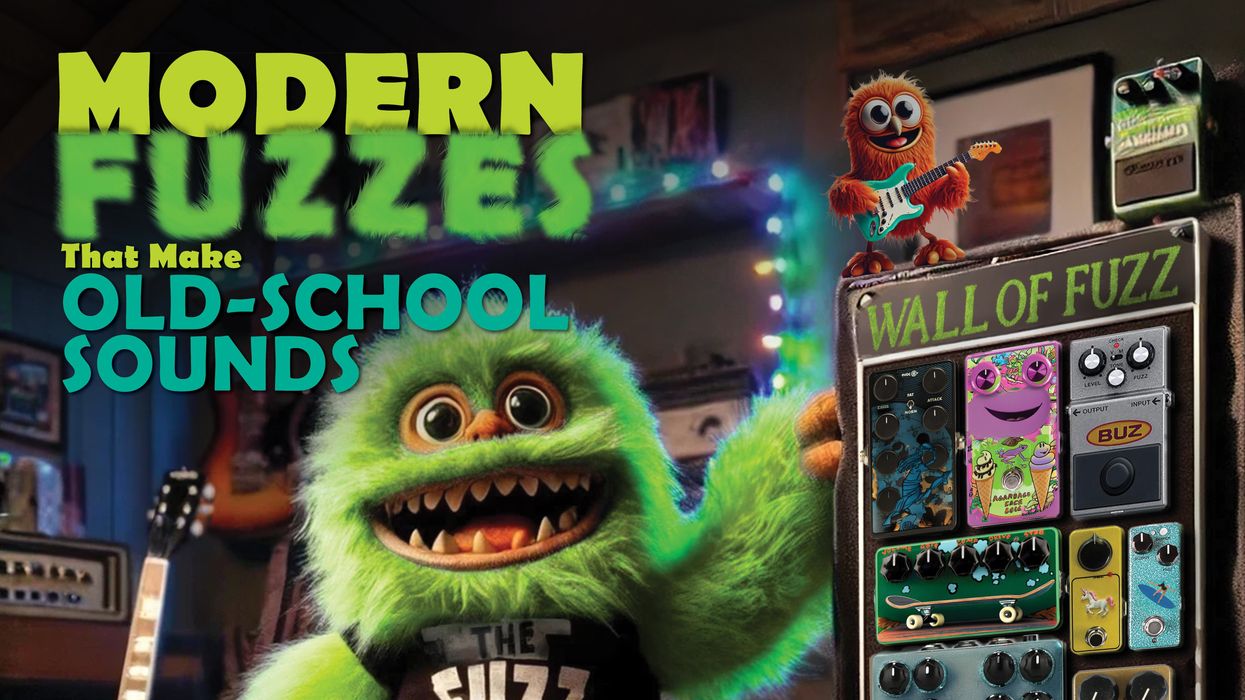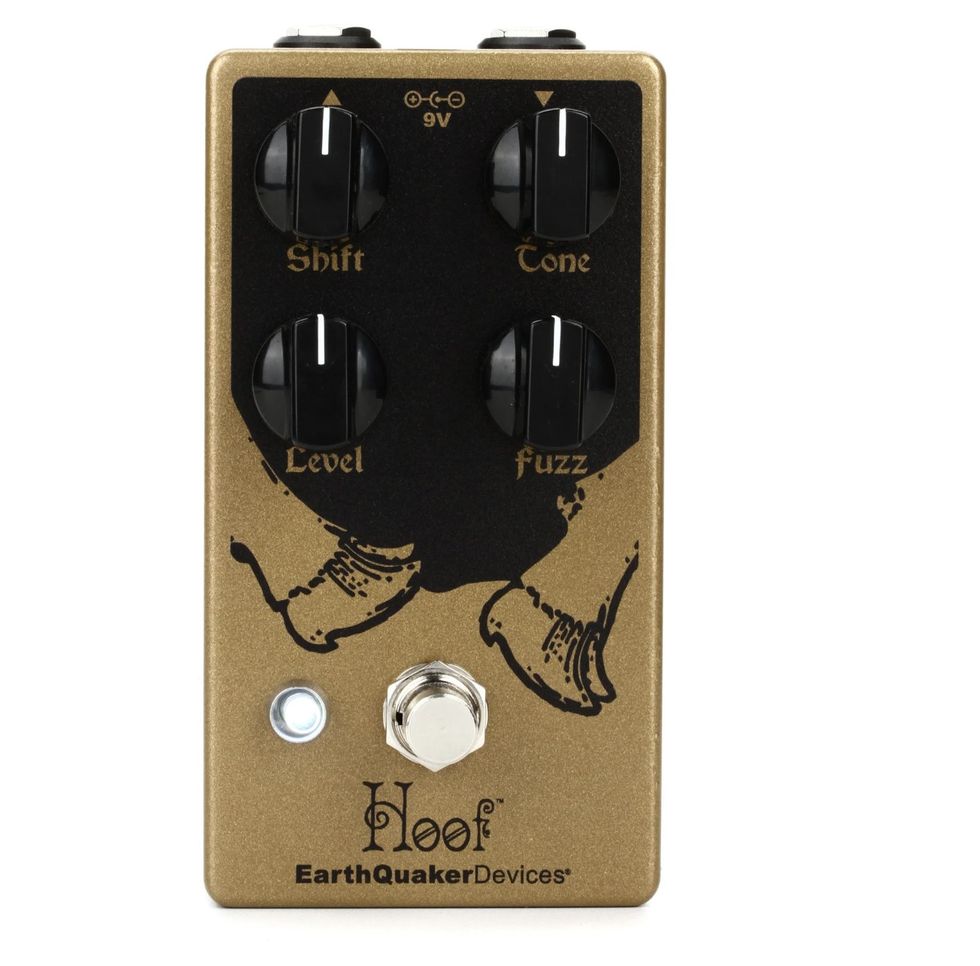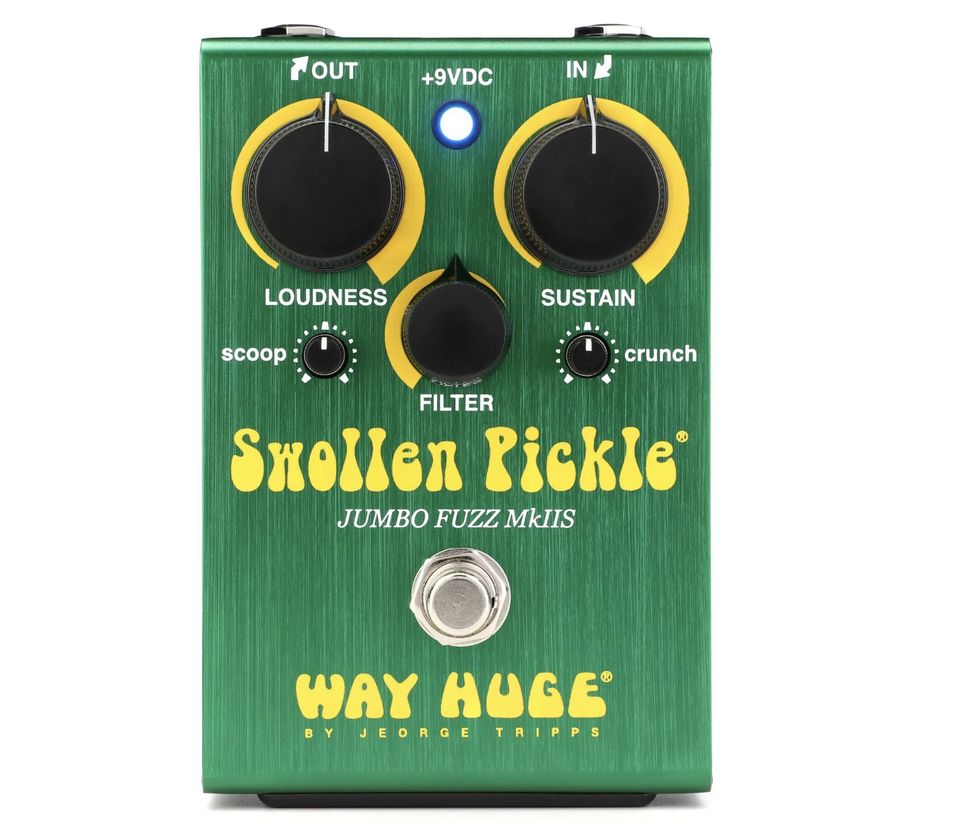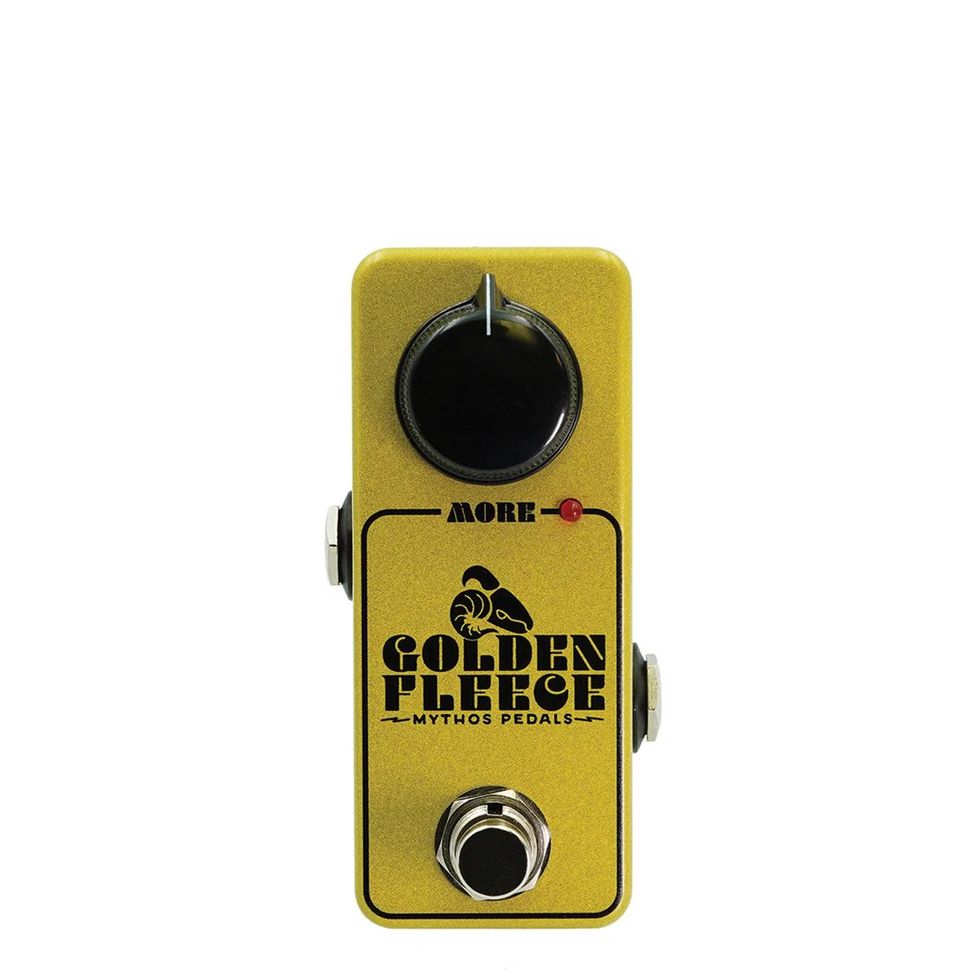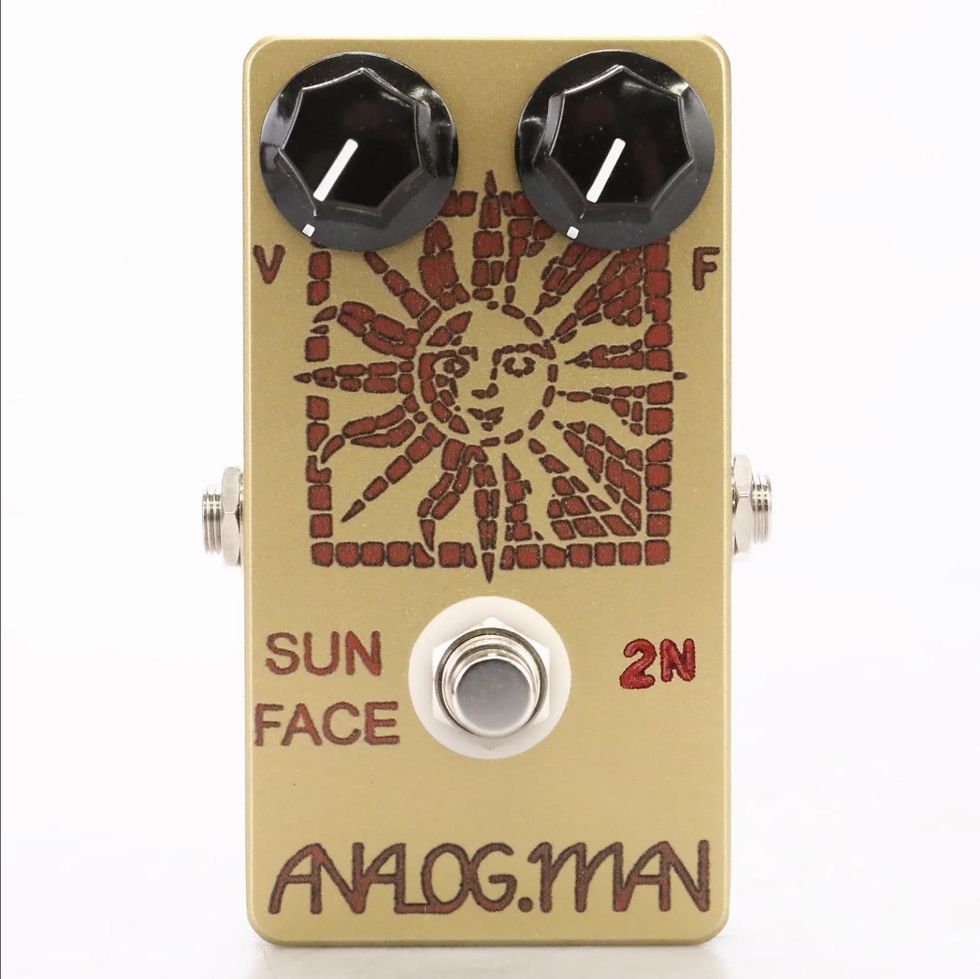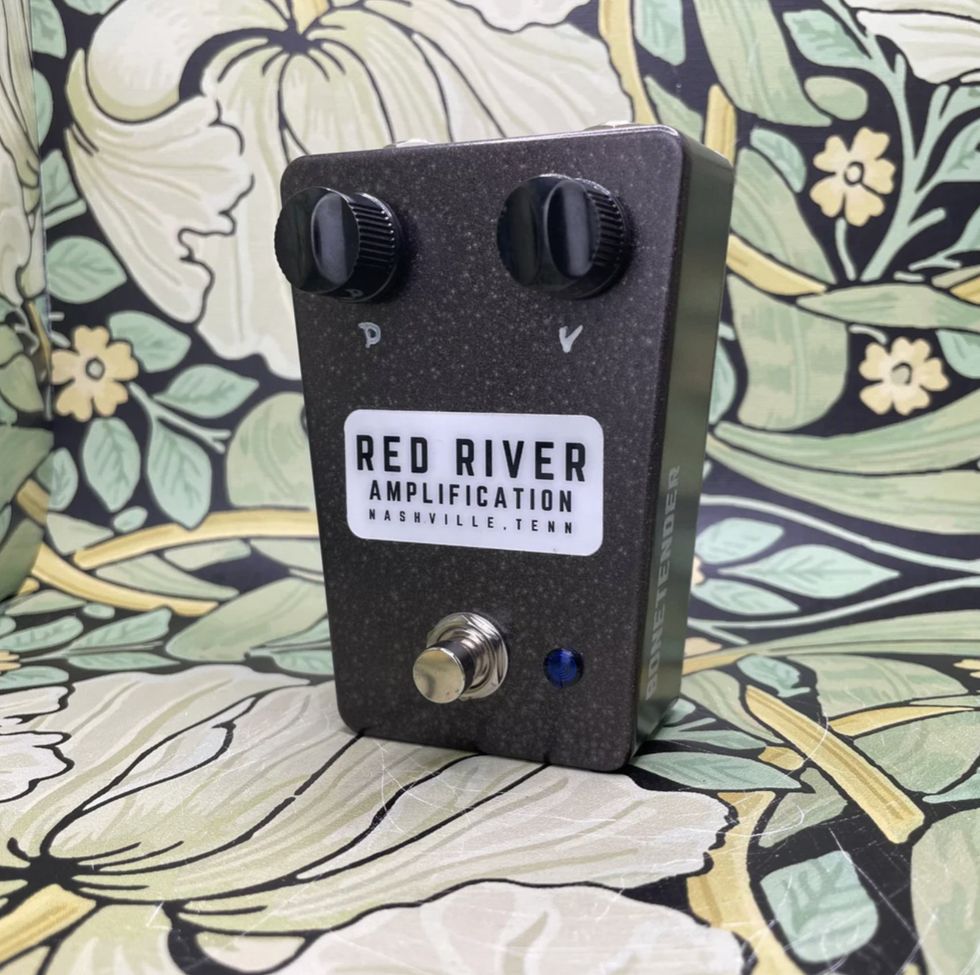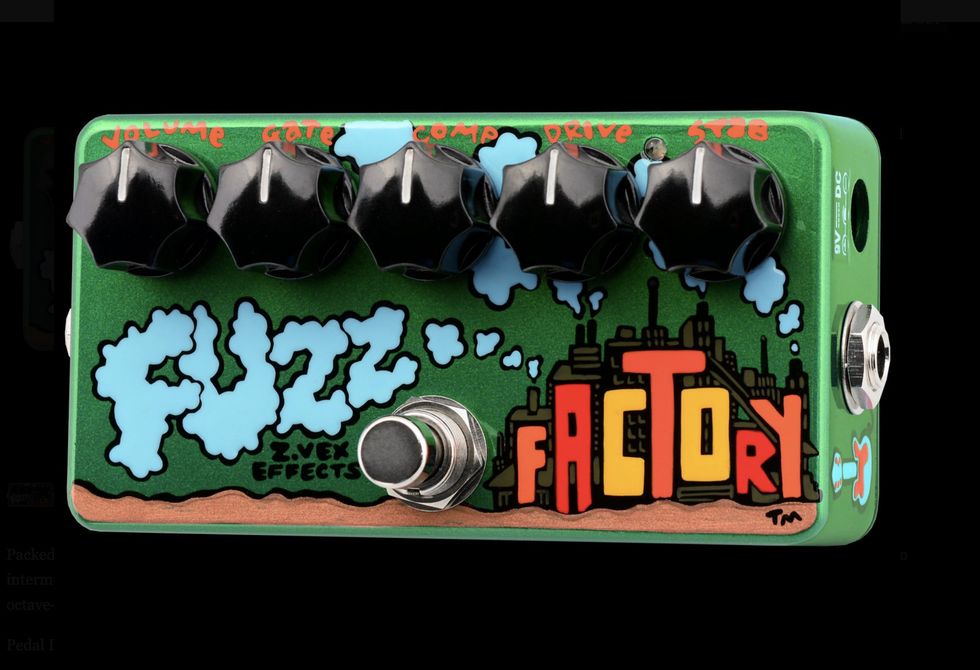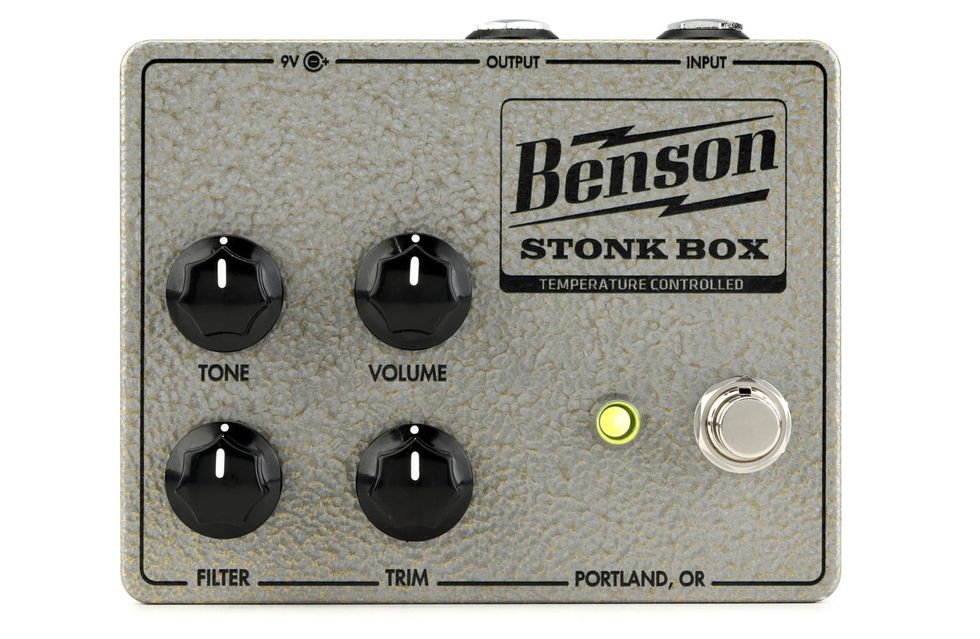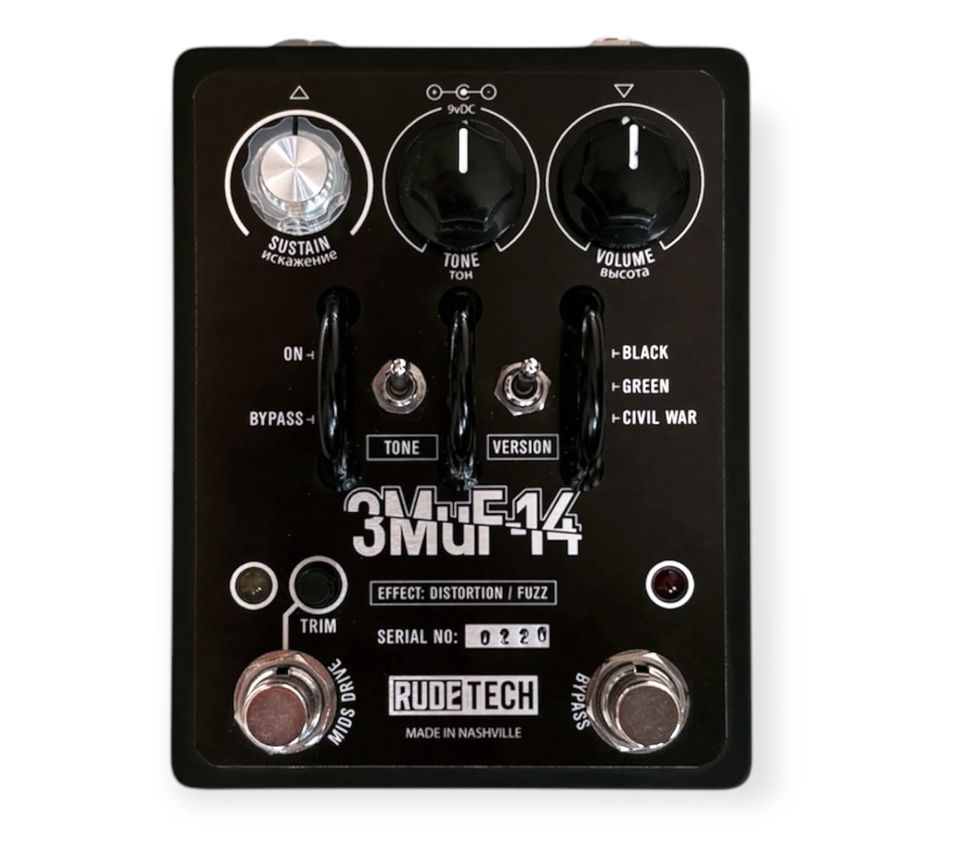Here’s how 21 killer players from the past year of Rig Rundowns—including Justin Chancellor, Zakk Wylde, MonoNeon, Carmen Vandenberg, Sturgill Simpson, Jason Isbell, and Grace Bowers—use stomps to take their sounds outside the box.
TOOL'S JUSTIN CHANCELLOR
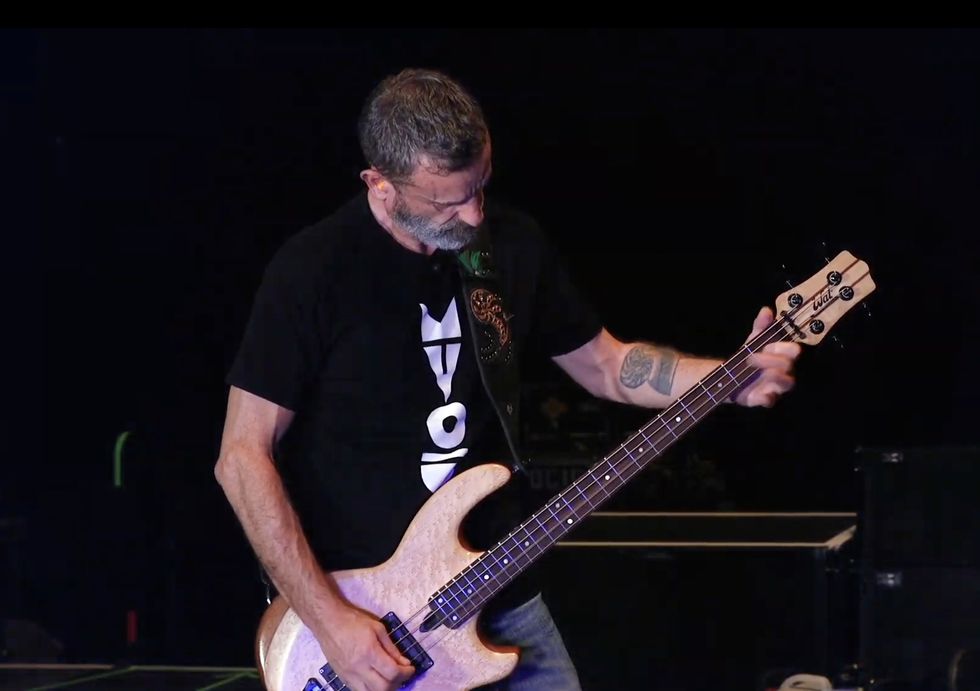
Justin Chancellor’s Pedalboard

If you ever catch yourself playing air guitar to Tool, you’re probably mimicking Justin Chancellor’s parts. “Schism,” “The Pot,” “Forty Six & 2,” “H.,” “Fear Inoculum,” “Descending,” “The Grudge,” and plenty of others feature his buoyant bass riffs.
What stomps does he run his Wal, StingRay, and Fender basses through? Glad you asked. His setup is either a bass player’s dream or nightmare, but for someone as adventurous as Chancellor, this is where the party starts.
You’ll notice many of his pedals are available at your favorite guitar store, including six Boss boxes, an Ernie Ball Volume Pedal, and MXR Micro Amp. Crucial foot-operated pedals are in blue: the Dunlop JCT95 Justin Chancellor Cry Baby Wah with a Tone Bender-style fuzz circuit (far left) and DigiTech Bass Whammy (middle). He really likes using the Tech 21 SansAmp GT2 for distortion and feedback when the Whammy is engaged or he’s playing up the neck. Covering delays are three pedals—he has the pink Providence DLY-4 Chrono Delay programmed to match drummer Danny Carey’s BPMs in “Pneuma,” which slightly increase during the song from 113 ms to 115 ms. The Boss DD-3s are set for different speeds with the one labeled “Faster” handling “The Grudge” and the other one doing more steady repeats. There’s a pair of vintage Guyatone pedals—the Guyatone VT-X Vintage Tremolo Pedal (Flip Series) and Guyatone BR2 Bottom Wah Rocker (a gift from guitarist Adam Jones). The Gamechanger Audio Plus pedal is used to freeze moments and allow Justin to grab onto feedback or play over something. The Boss GEB-7 Bass Equalizer and Pro Co Turbo RAT help reinforce his resounding, beefy backbone of bass tone, while the MXR Micro Amp helps goose his grimy rumbles. The Boss LS-2 Line Selector is a one-kick escape hatch out of the complicated signal chain for parts of “Schism.” The Wal and Music Man stay in check with the TU-3S tuner, a pair of Voodoo Lab Pedal Power 2 Pluses help bring things to life, and everything is wired up with EBS patch cables.
STURGILL SIMPSON AND LAUR JOAMETS
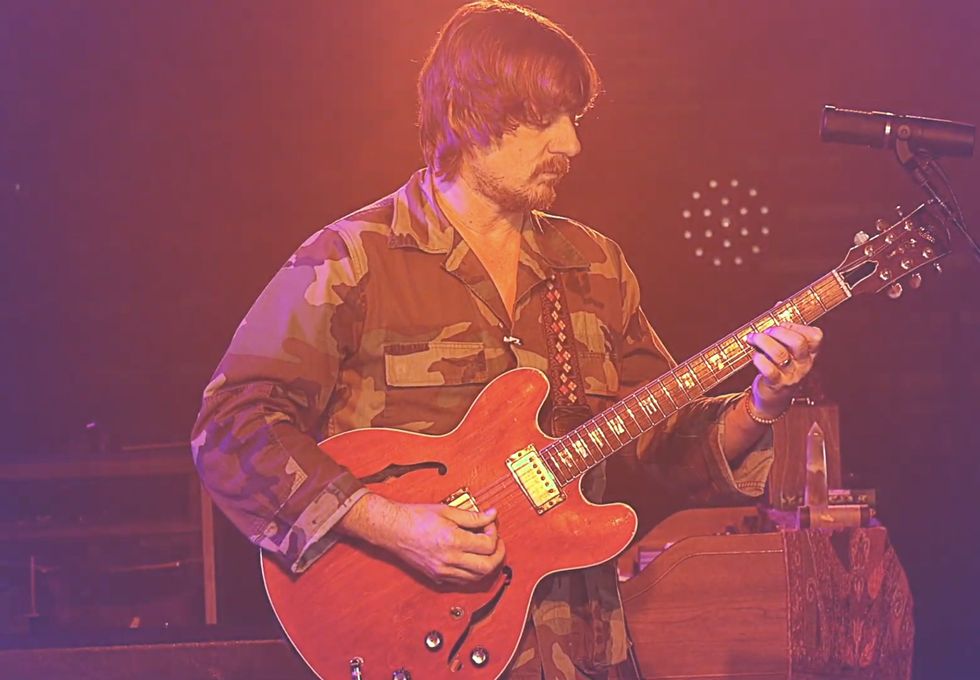
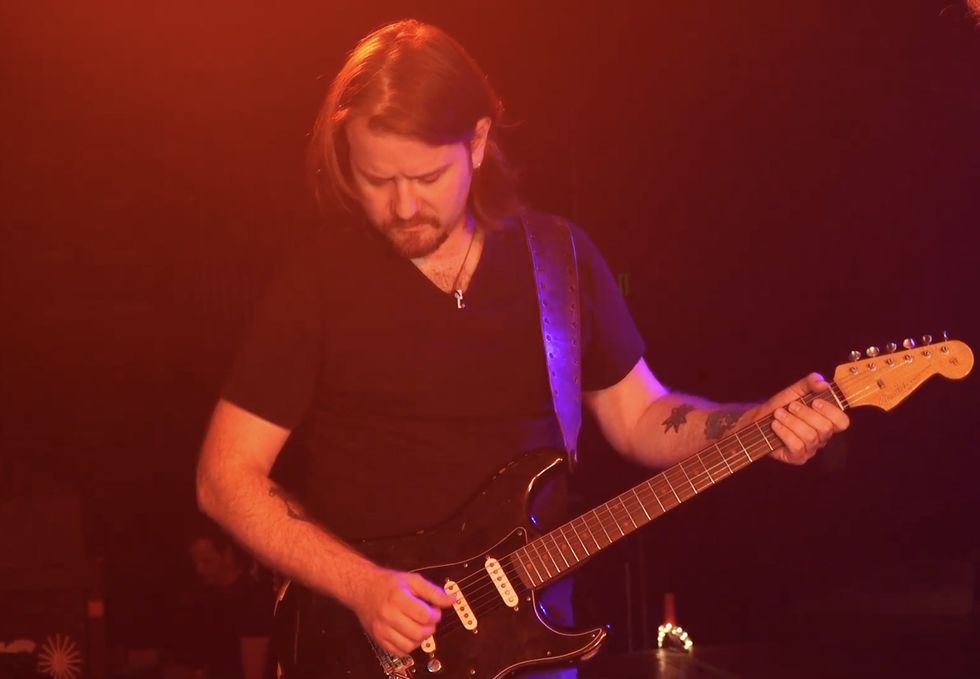
Sturgill Simpson’s Pedalboard
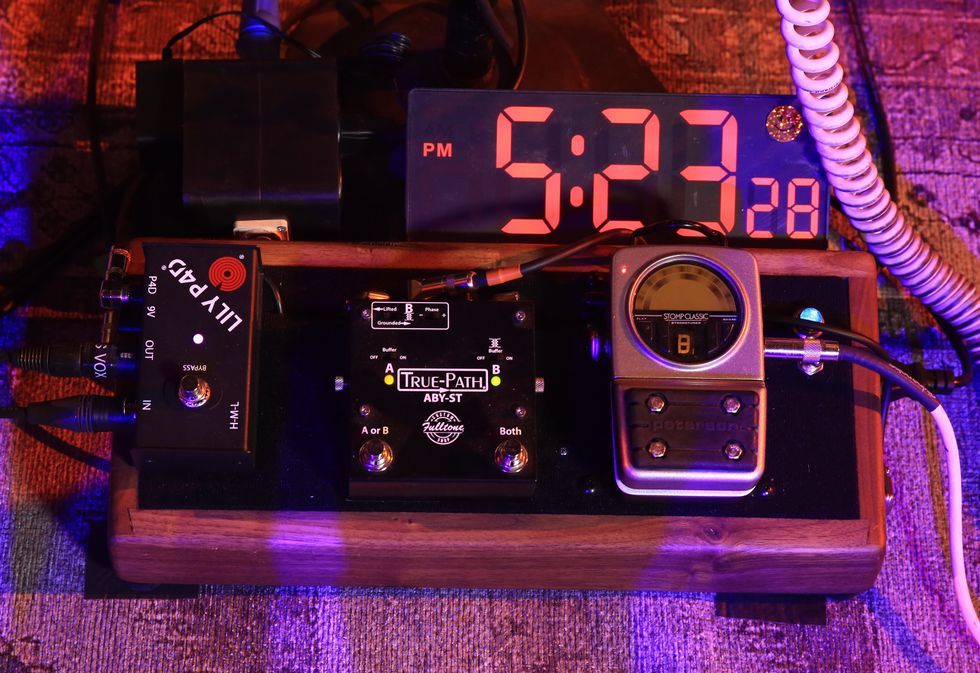
Alt-country veteran Sturgill Simpson packed light for his latest run. His board bears just a Peterson Stomp Classic tuner running into a Fulltone True-Path ABY-ST, which splits his signal to his two Magnatone Panoramic Stereo amps. “I wouldn’t use a tuner if I didn’t have to,” he chuckles. The LILY P4D beside the splitter lets him control his mic signal to cut interference from onstage noise.
Laur Joamets’ Pedalboard
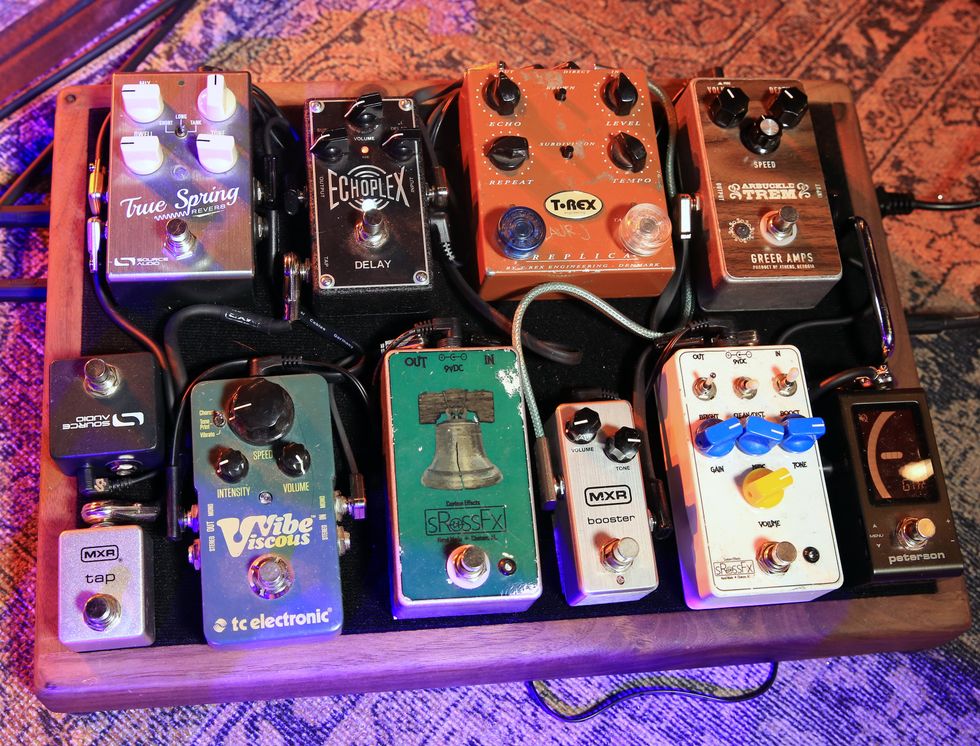
For his main board, Laur Joamets packs a little heavier than his boss. The platform, made by West Coast Pedal Board, carries a Peterson StroboStomp, Greer Amps Arbuckle Trem, sRossFX fuzz/overdrive, MXR Booster, T-Rex Replica, sRossFX germanium octave pedal, TC Electronic Viscous Vibe, Dunlop EP103 Echoplex, and Source Audio True Spring Reverb. An MXR Tap lets him tap in delay tempos. He has a second pedalboard, as well, for his Stage One steel guitar. It goes into a Peterson StroboStomp HD, then on to a Greer Black Tiger and Goodrich Sound Company volume pedal, before hitting his Magnatone Varsity Reverb and a custom-built Fender brown-panel Deluxe clone he calls “the Charmer.”
PANTERA’S ZAKK WYLDE AND REX BROWN
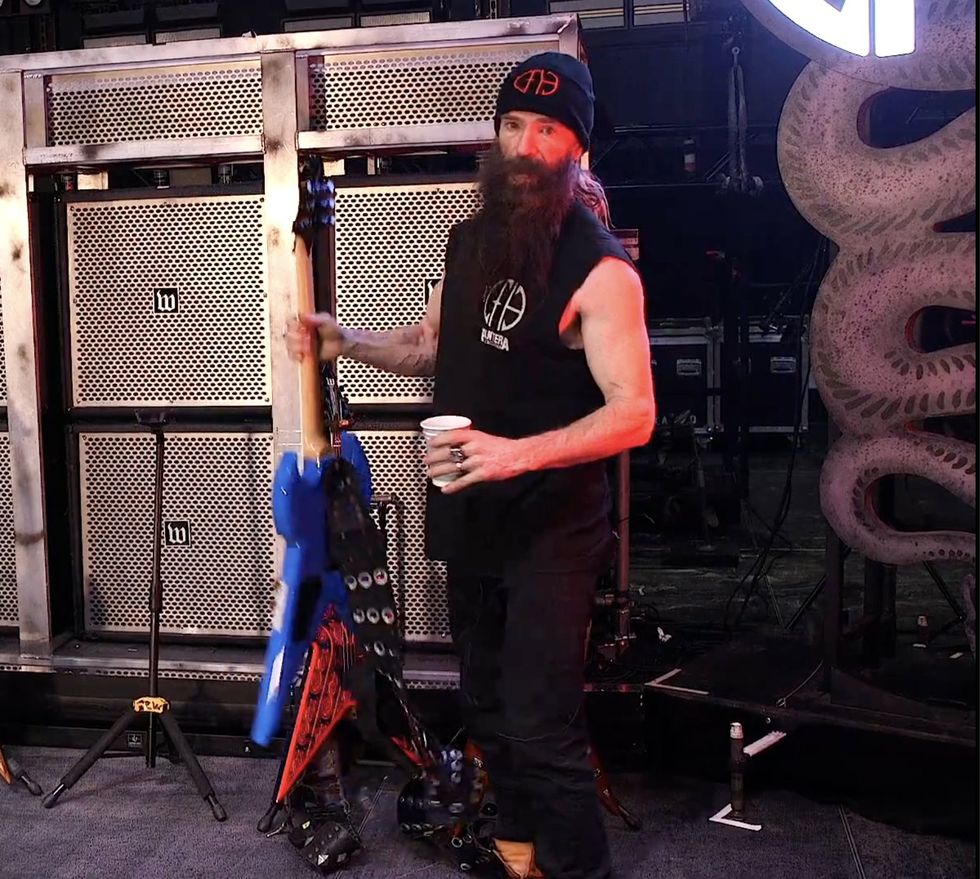
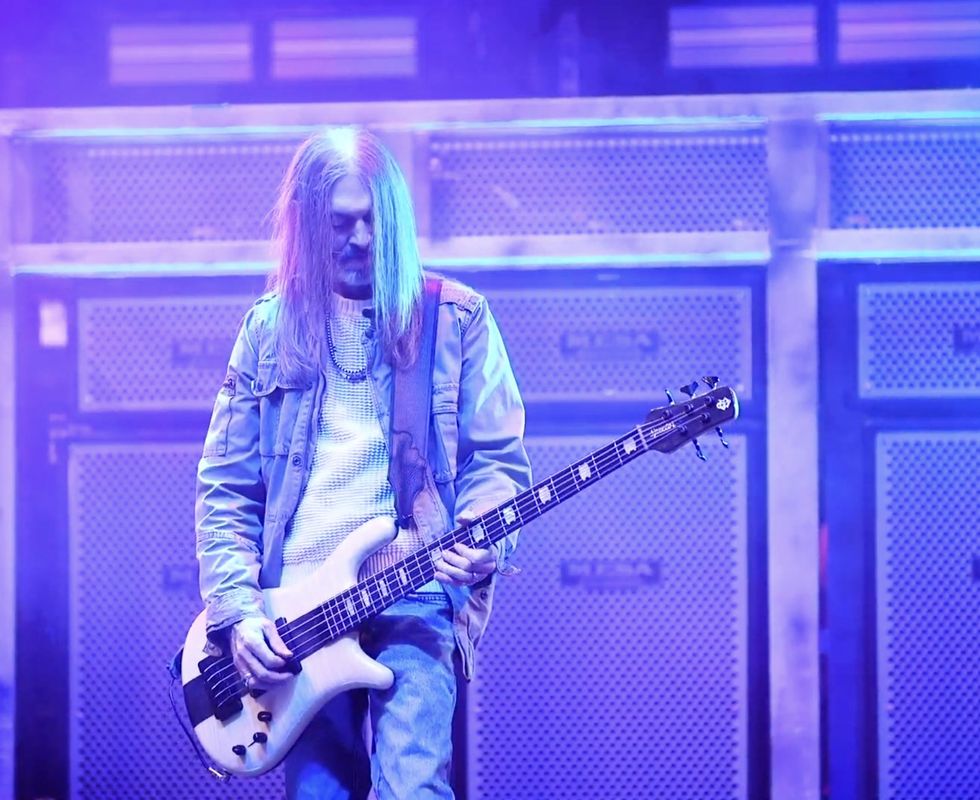
Zakk Wylde’s Pedalboard

When Pantera’s bassist Rex Brown and singer Phil Anselmo decided to fire the band up again, the choice of fellow road dog Zakk Wylde on guitar seemed perfect. Here’s what Wylde had on the floor and in the racks for the band’s February date at Nashville’s Bridgestone Arena.
His signature arsenal of effects seen here includes a MXR Wylde Audio Overdrive, MXR Wylde Audio Phase, Wylde Audio Cry Baby wah, and a Dunlop ZW357 Zakk Wylde Signature Rotovibe. The lone box that isn’t branded Wylde is a standard fare MXR Carbon Copy. Offstage, his rack is home to a MXR Smart Gate and MXR Wylde Audio Chorus that’s always on. Both are powered by a Voodoo Lab Pedal Power 3 Plus. Another drawer holds a Radial BigShot I/O True-bypass Instrument Selector, Lehle Little Dual II Amp Switcher, and a Radial BigShot EFX Effects Loop Switcher.
Rex Brown’s Pedalboard
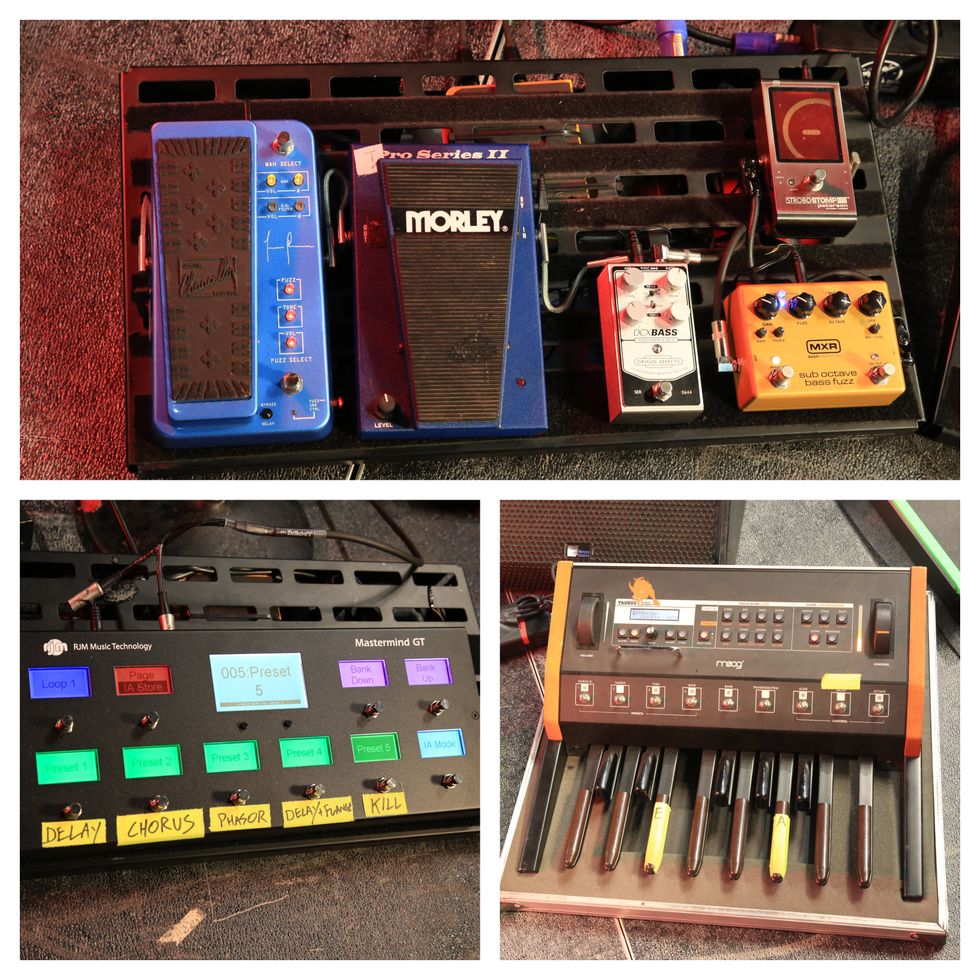
This tour was the first time Rex Brown used a switching system. His stage board sported a Dunlop JCT95 Justin Chancellor Cry Baby Wah, a 2000s Morley Pro Series II Bass Wah, Origin Effects DCX Bass Tone Shaper & Drive, a MXR M287 Sub Octave Bass Fuzz, and a Peterson StroboStomp HD. The brain of everything in the rack and onstage is the RJM Mastermind GT. And to help “move mountains,” Rex has a Moog Taurus III.
MSSV’S MIKE BAGGETTA AND MIKE WATT
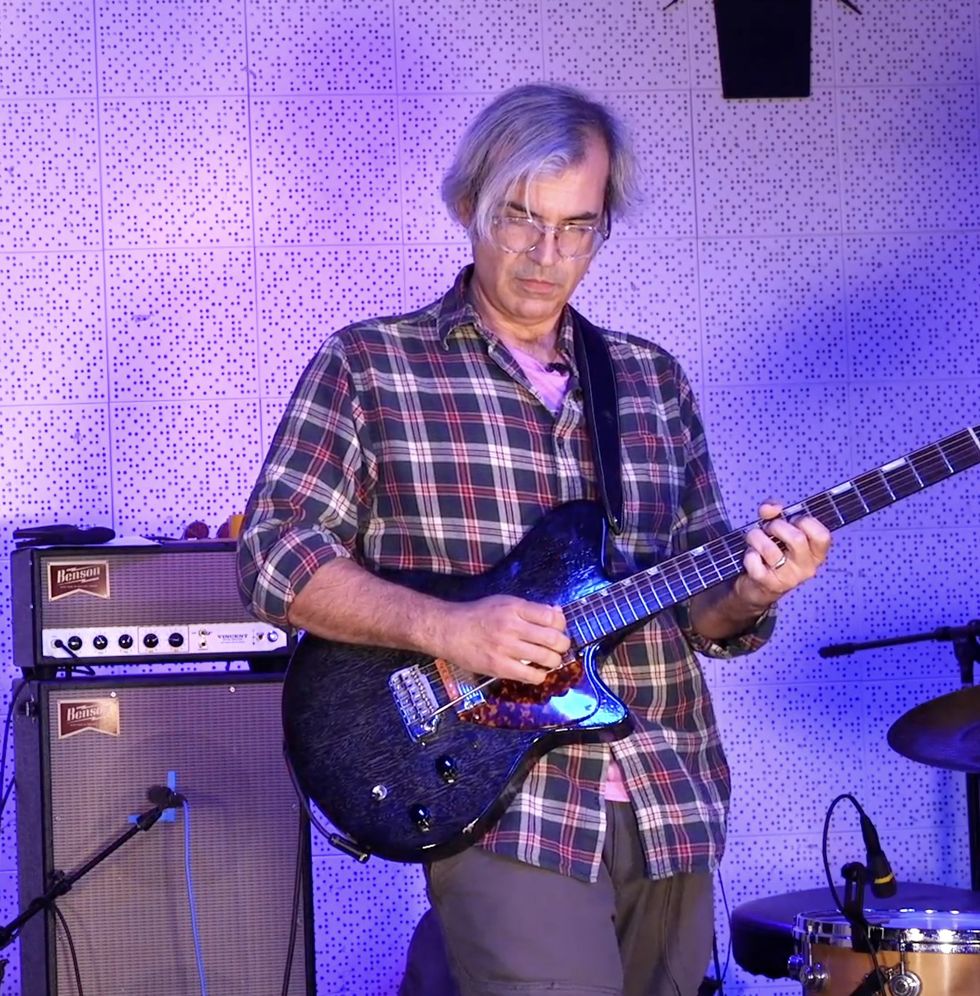

Mike Baggetta’s Pedalboard
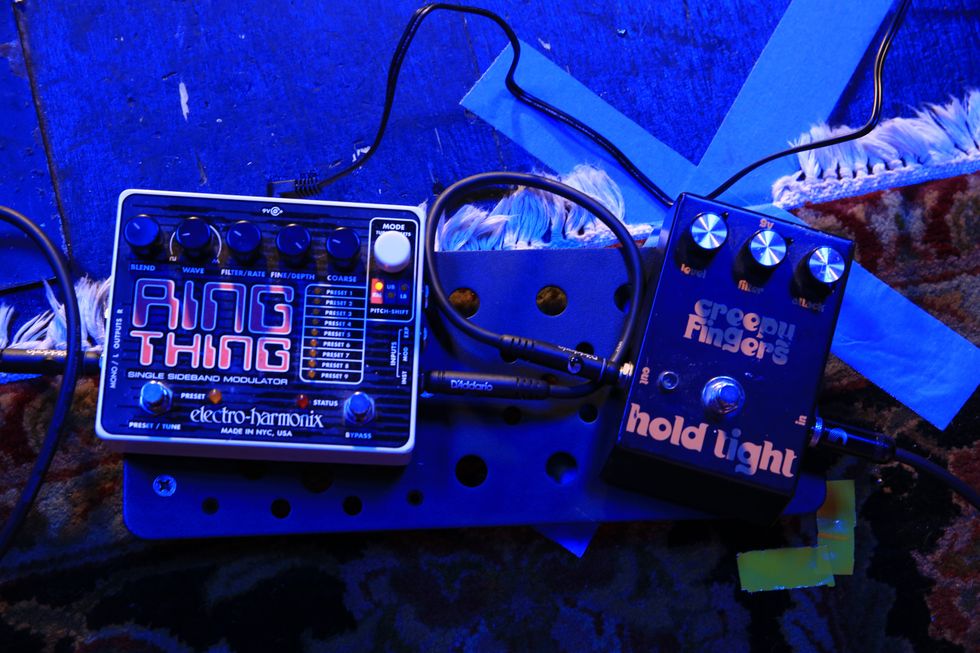
Mike Baggetta has some core pedals in MSSV, his indie supergroup with legendary bassist Mike Watt and drummer Stephen Hodges. His arsenal includes a Creepy Fingers Hold Tight fuzz, an Electro-Harmonix Ring Thing, a Wilson Effects Freaker Wah V2, an EHX Deluxe Memory Man, and a Red Panda Tensor. The signal flows from his Benson amp into the Tensor, which he uses for glitch sounds, harmonizing, and overdub mode, among other feats. His Memory Man adds space—the final frontier.
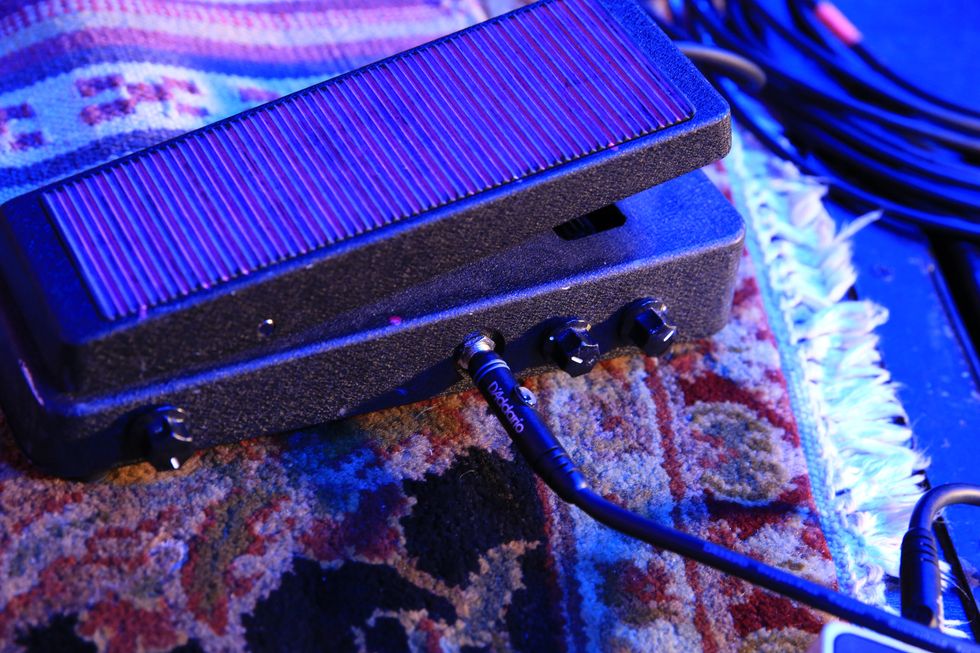

Mike Watt’s Pedalboard
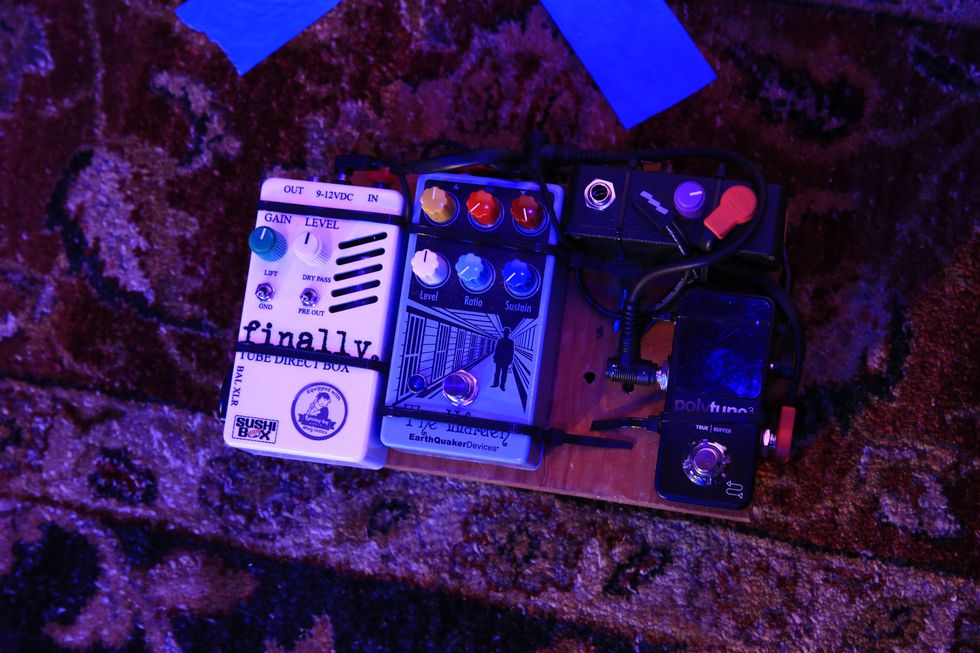
Mike Watt puts his signature Reverend Wattplower bass into a Broughton Audio high-pass filter, an EarthQuaker Devices The Warden optical compressor, and a Sushi Box Effects Finally tube DI that functions as a preamp. There’s also a TC Electronic PolyTune.
MONONEON
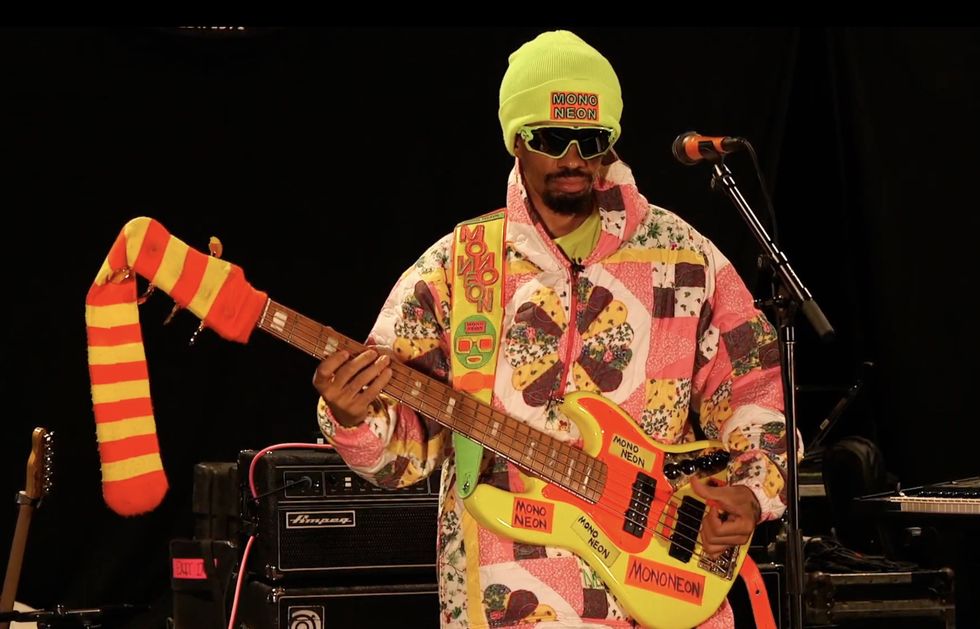
MonoNeon’s Pedalboard
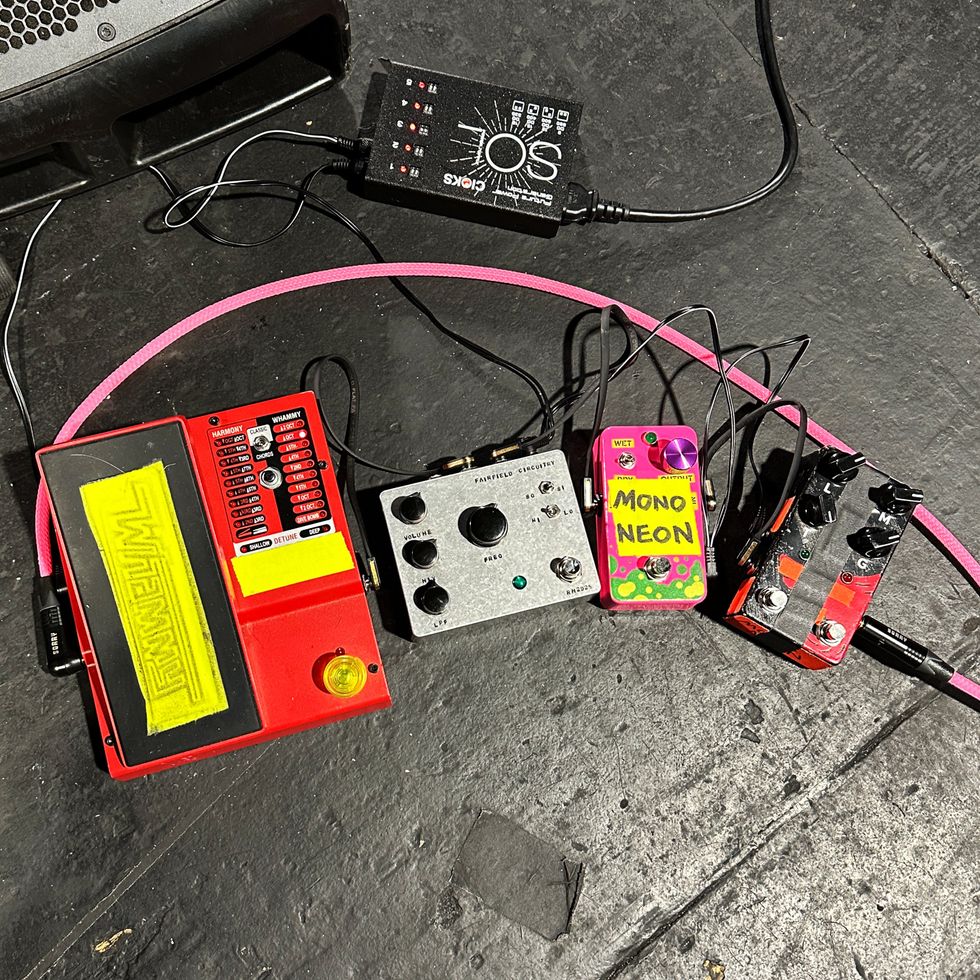
The Memphis-born avant-funk bassist keeps it simple on the road with a signature 5-string, a tried-and-true Ampeg stack, and just four stomps. Almost all of his stomps have been zhuzhed up in his eye-popping palette. He’d used a pitch shifting DigiTech Whammy for a while, but after working with Paisley Park royalty, the pedal became a bigger part of his playing. “When I started playing with Prince, he put the Whammy on my pedalboard,” Thomas explains. “After he passed, I realized how special that moment was.” MonoNeon also uses a Fairfield Circuitry Randy’s Revenge, a Fart Pedal (in case the Fairfield ring mod isn’t weird enough, we guess), and a JAM Pedals Red Muck covers fuzz and dirt needs. A CIOKS SOL powers the whole affair.
GRACE BOWERS
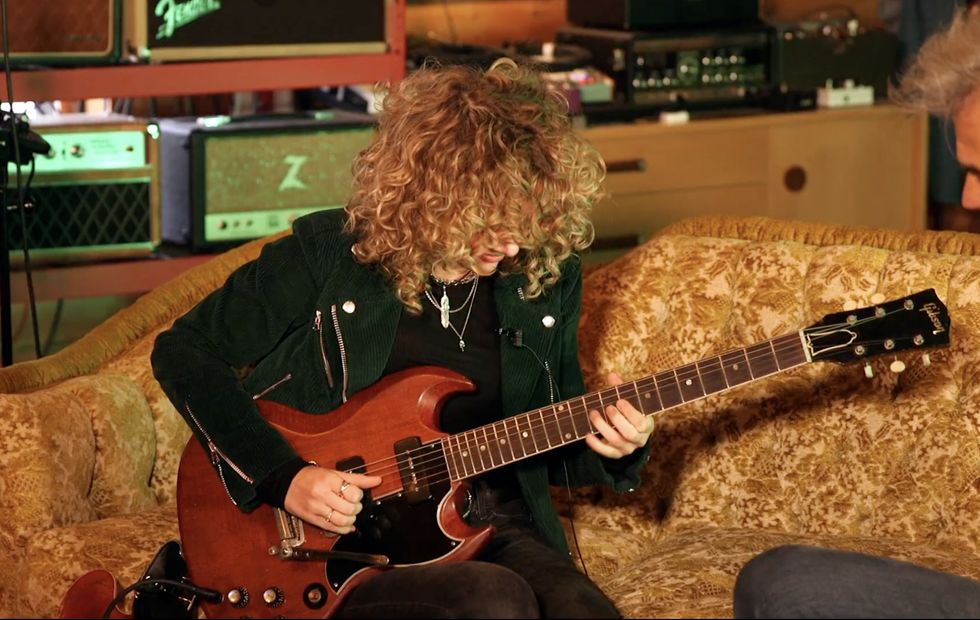
Grace Bowers’ Pedalboard
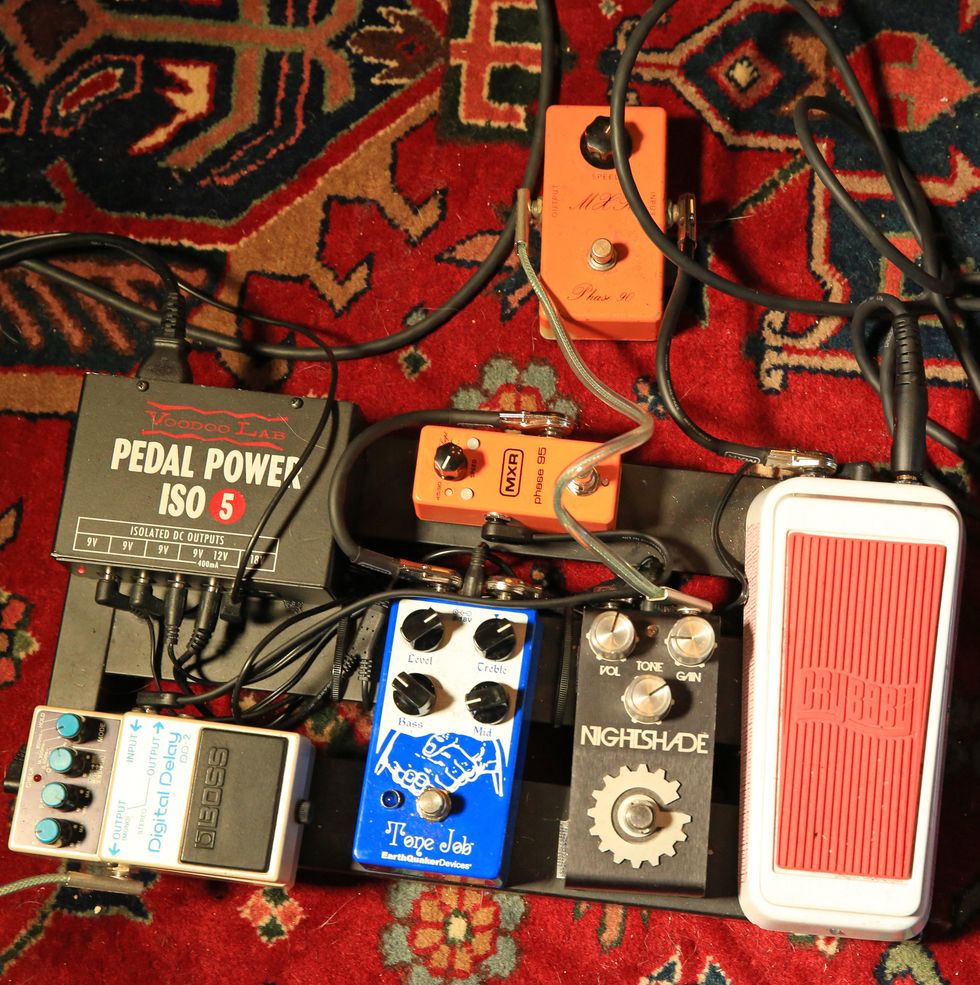
Grace Bowers is one of the freshest new guitar stars to emerge in the past year. She has the essential fixin’s for her classic rock tones: a Dunlop Crybaby Wah, Grindstone Audio Solutions Night Shade Drive, EarthQuaker Devices Tone Job, MXR Phase 90, MXR Phase 95, and Boss DD-2. Bowers powers them with a Voodoo Labs Pedal Power ISO-5.
GREEN DAY’S JASON WHITE
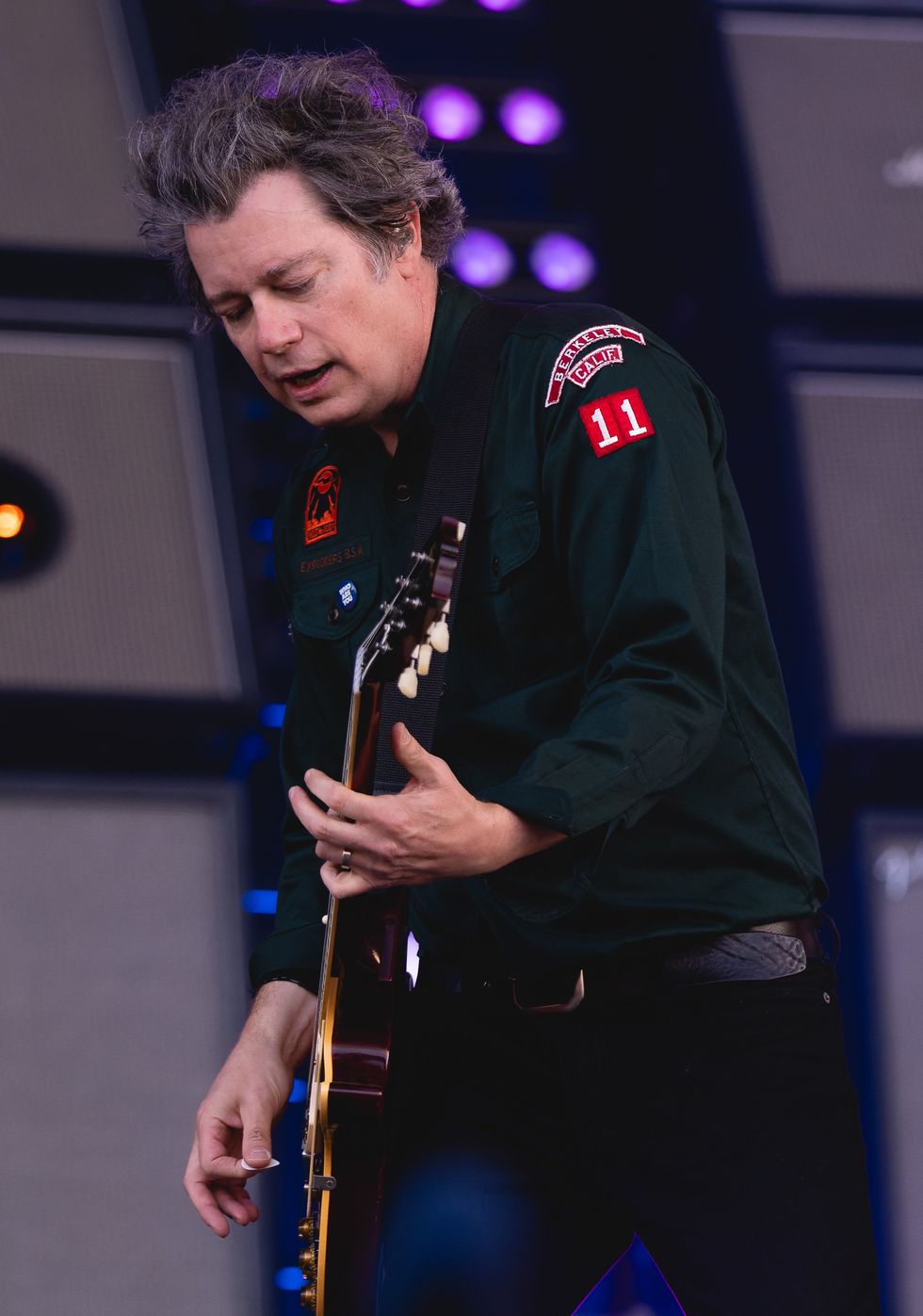
Photo by Raph Pour-Hashemi
Jason White’s Pedalboard
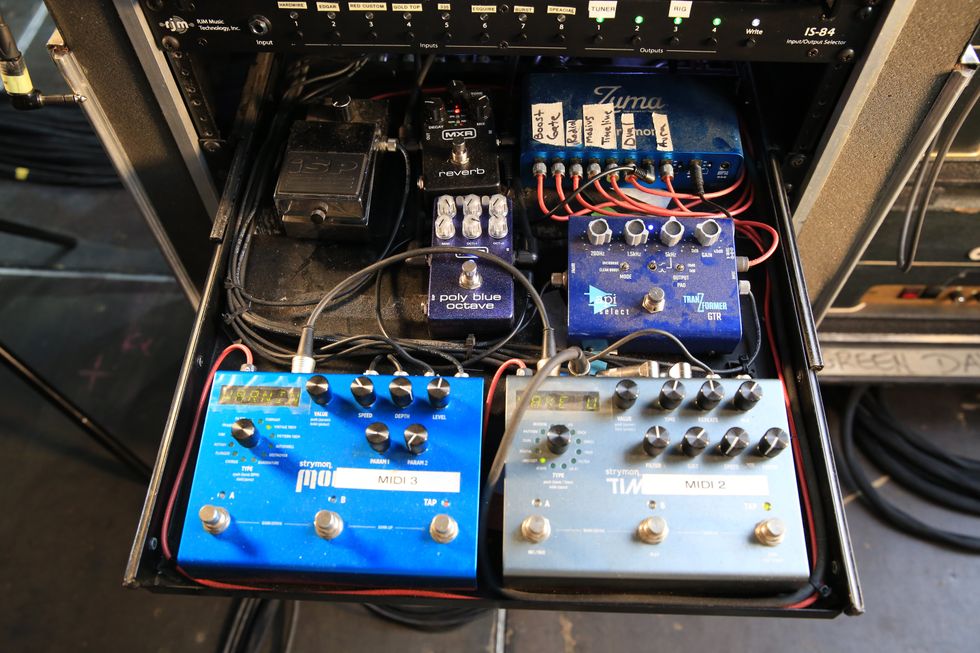
Long-time touring member Jason White’s stable is dominated by his Gibson Les Pauls and ES-335s. A Shure wireless system sends his signal to a rack set-up with an ISP noise gate, just in case White’s P-90s are picking up a lot of noise. From there, it hits a Dunlop Cry Baby and DVP1XL, then a MIDI-controllable RJM Effect Gizmo, which handles White’s effects: an MXR Reverb and Poly Blue Octave, Strymon TimeLine and Mobius, API Select TranZformer GTR, and a Custom Audio Electronics 3+SE Guitar Preamp, which gets engaged for clean tones and small combo sounds. A Lehle Dual SGoS Switcher and Fishman Aura DI Preamp handle changes with the piezo-equipped guitars. A Strymon Zuma provides the juice.
BONES UK’S CARMEN VANDENBERG
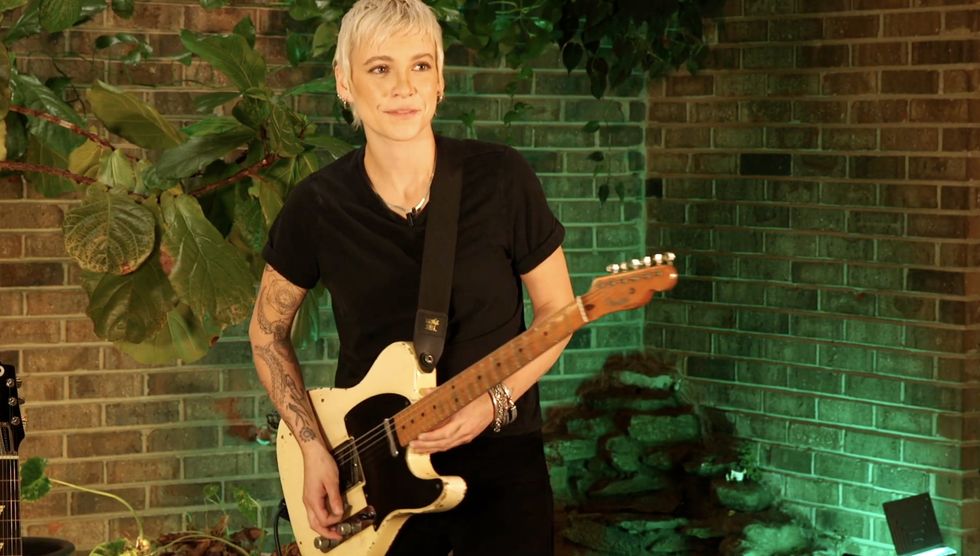
Carmen Vandenberg’s Pedalboard
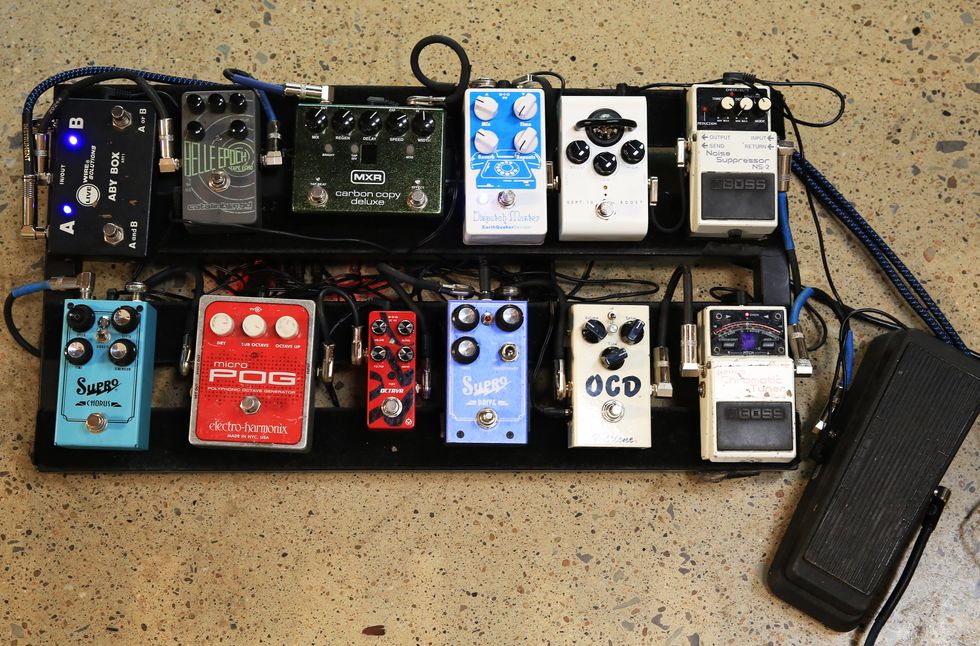
Carmen Vandenberg covers a lot of ground with her Bones UK guitar sounds, and she’s got a carefully curated collection of stomps to span the territory. Her guitar first hits an Ernie Ball Cry Baby before running through the rest of the pedals: a Boss TU-3, Fulltone OCD, Supro Drive, Pigtronix Octava, EHX Micro POG, Supro Chorus, Blackstar Dept. 10 Boost, EarthQuaker Devices Dispatch Master, MXR Carbon Copy Deluxe, Catalinbread Belle Epoch, and Boss NS-2. A Live Wire Solutions ABY manages the signals on their way to her signature Blackstar CV30s.
BLACK PUMAS’ ADRIAN QUESADA, BRENDAN BOND, AND ERIC BURTON
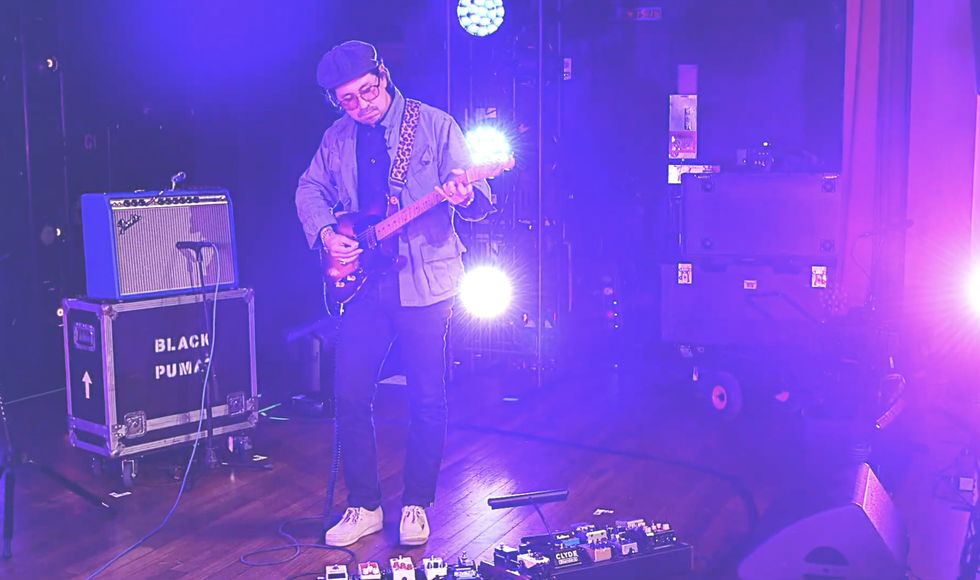
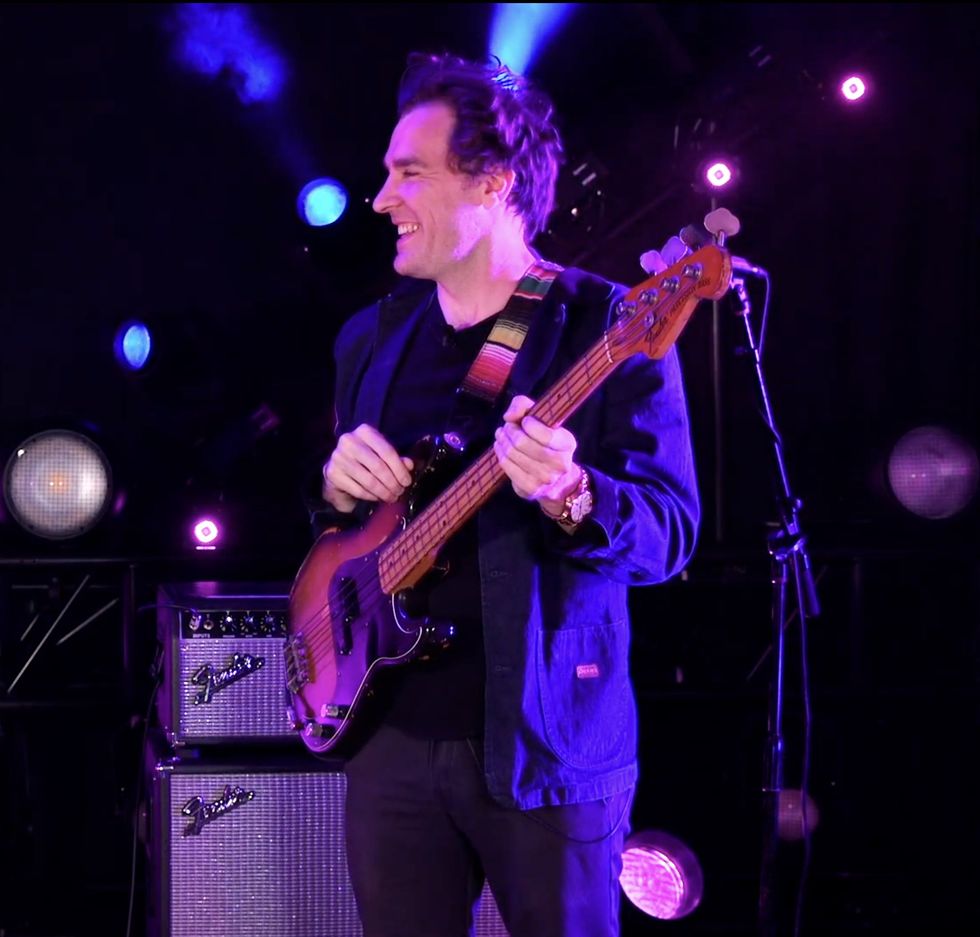
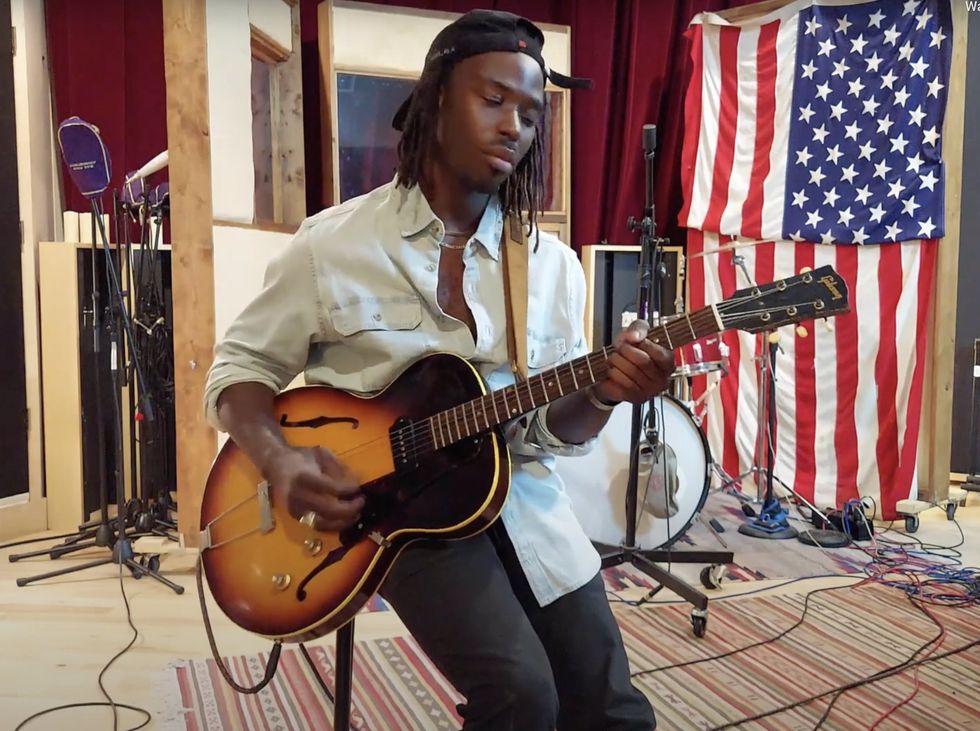
Adrian Quesada’s Pedalboards
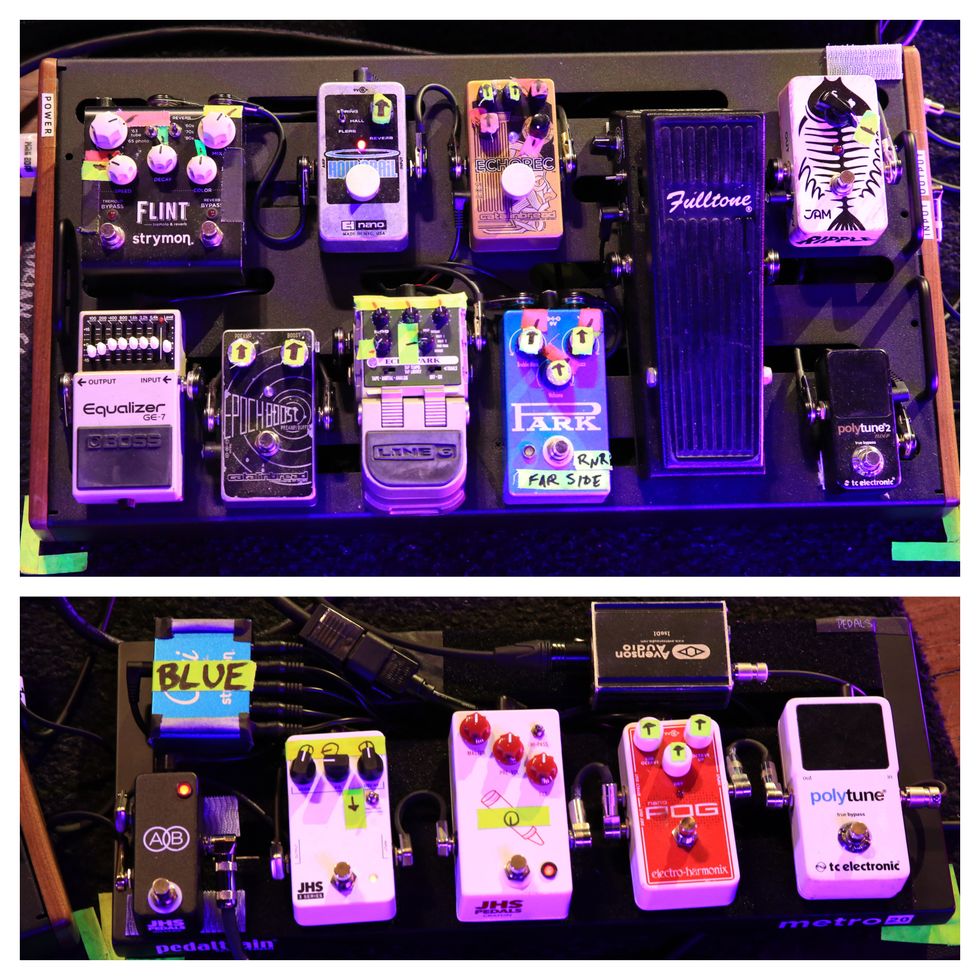
Adrian Quesada loves tremolo and reverb, and uses a Strymon Flint for both. His other main stomp is the Electro-Harmonix Holy Grail that provides a healthy dose of spring reverb. Also along for the tour: a Line 6 Echo Park, a Catalinbread Echorec, a Boss GE-7 Equalizer, a Catalinbread Belle Epoch, and an EarthQuaker Devices. The Fulltone Clyde Wah Deluxe has stepped in for a different filter sweeper. There’s also a JAM Pedals Ripple two-stage phaser, and a TC Electronic PolyTune2 Noir keeps his guitars in check. That’s all on board one.
His second board includes a JHS 3 Series Delay, a JHS Crayon, and an Electro-Harmonix Nano POG. Utility boxes on here—Strymon Ojai, JHS Mini A/B, and TC Electronic PolyTune—handle switching, tuning, and power.Brendan Bond’s Pedalboard
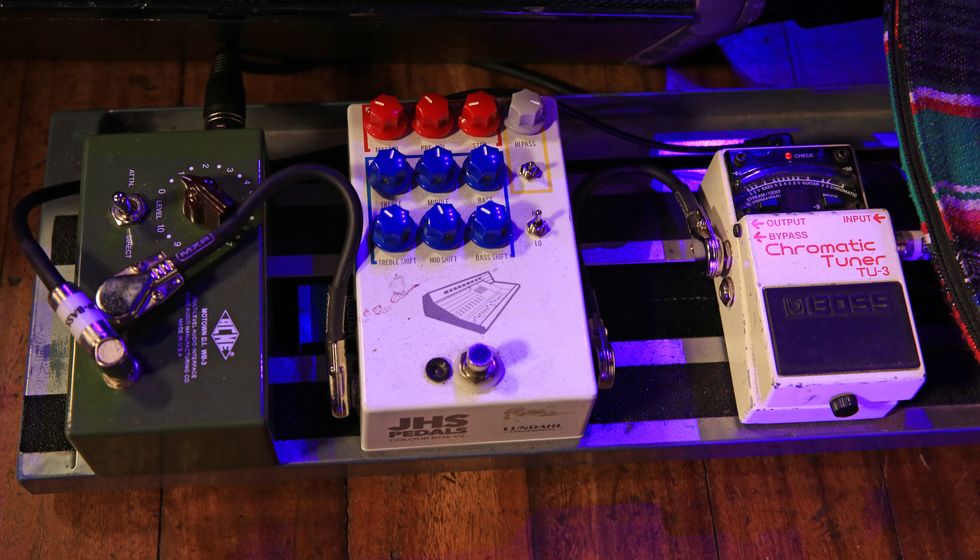
Three pedals get the job done for Mr. Bond: an Acme Audio Motown D.I. WB-3 passive D.I., a JHS Colour Box, and a Boss TU-3 Chromatic Tuner.
Eric Burton’s Pedalboard
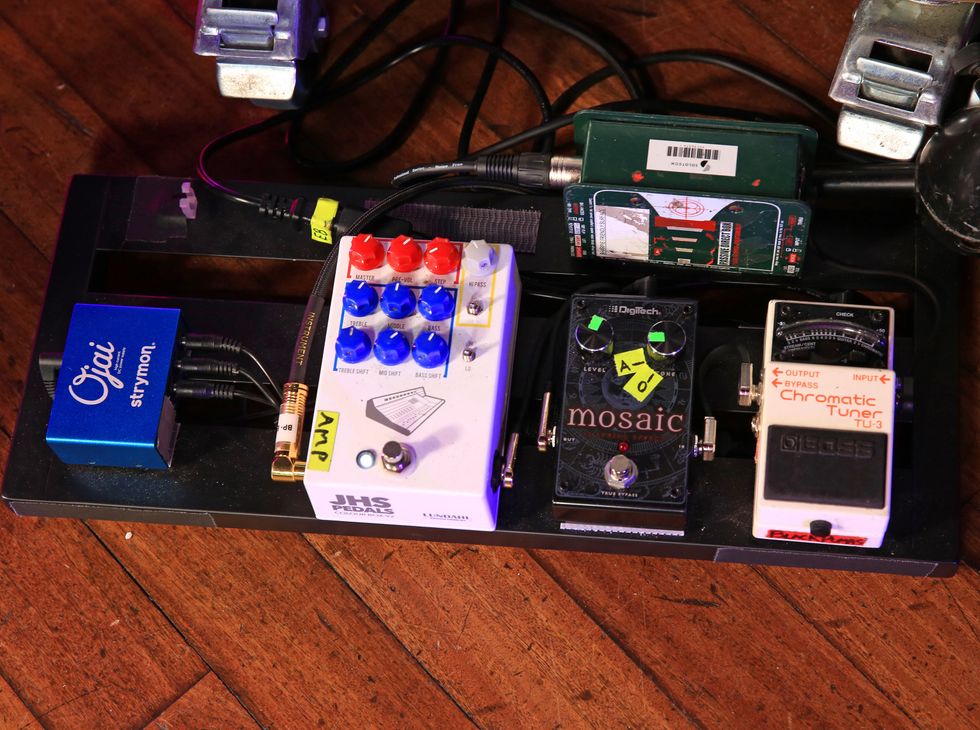
Frontman and guitarist Eric Burton is the band’s lone wireless member. To accommodate his onstage prowling, tech Bryan Wilkinson uses a Radial JDI passive direct box that takes in the XLR from the audio subsnake wireless rackmount and routes it into the first pedal: a Boss TU-3 Chromatic Tuner. From there, Burton only has a couple pedals—a DigiTech Mosaic to mimic a 12-string for “OCT 33” and a JHS Colour Box for any required heat. A Strymon Ojai turns everything on.
JASON ISBELL AND SADLER VADEN
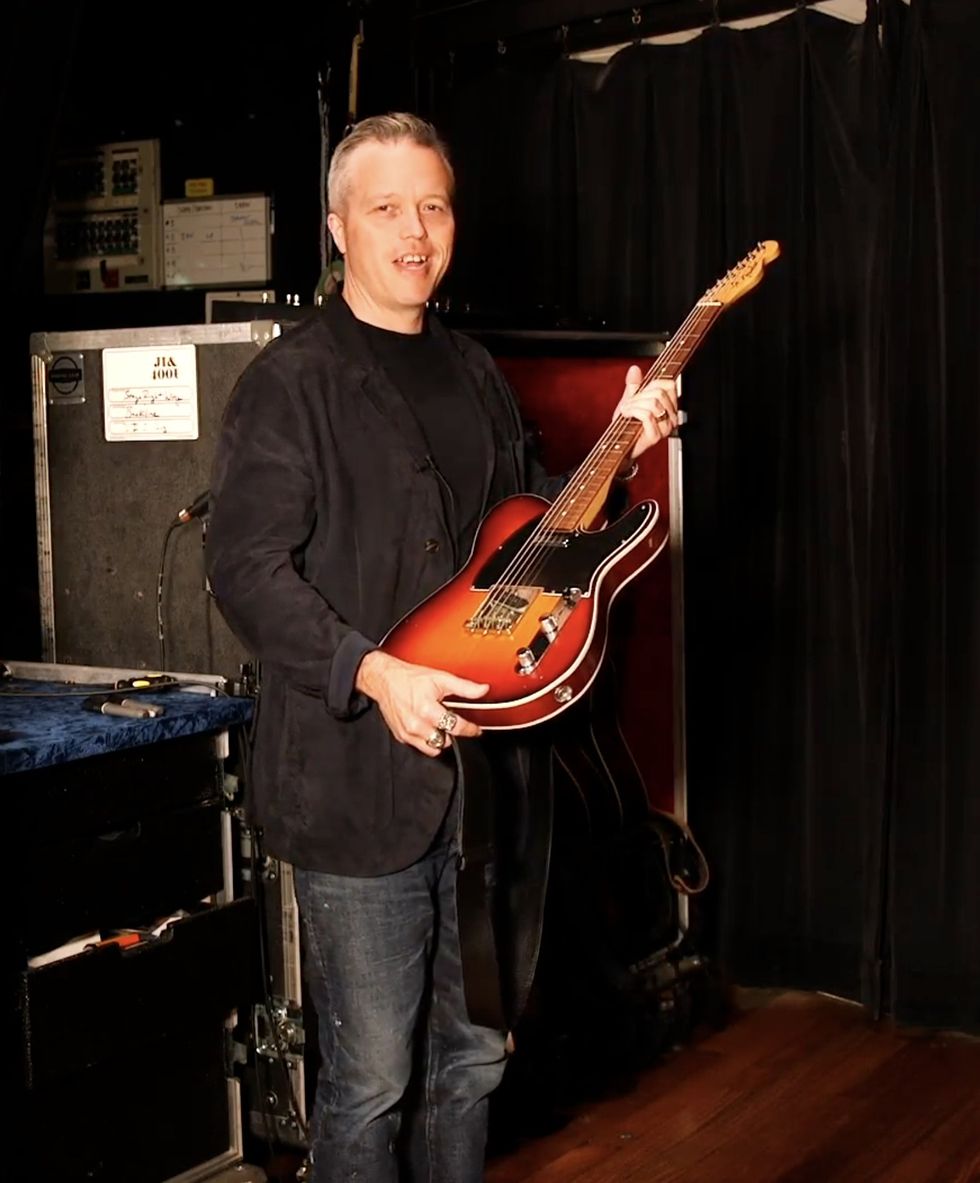
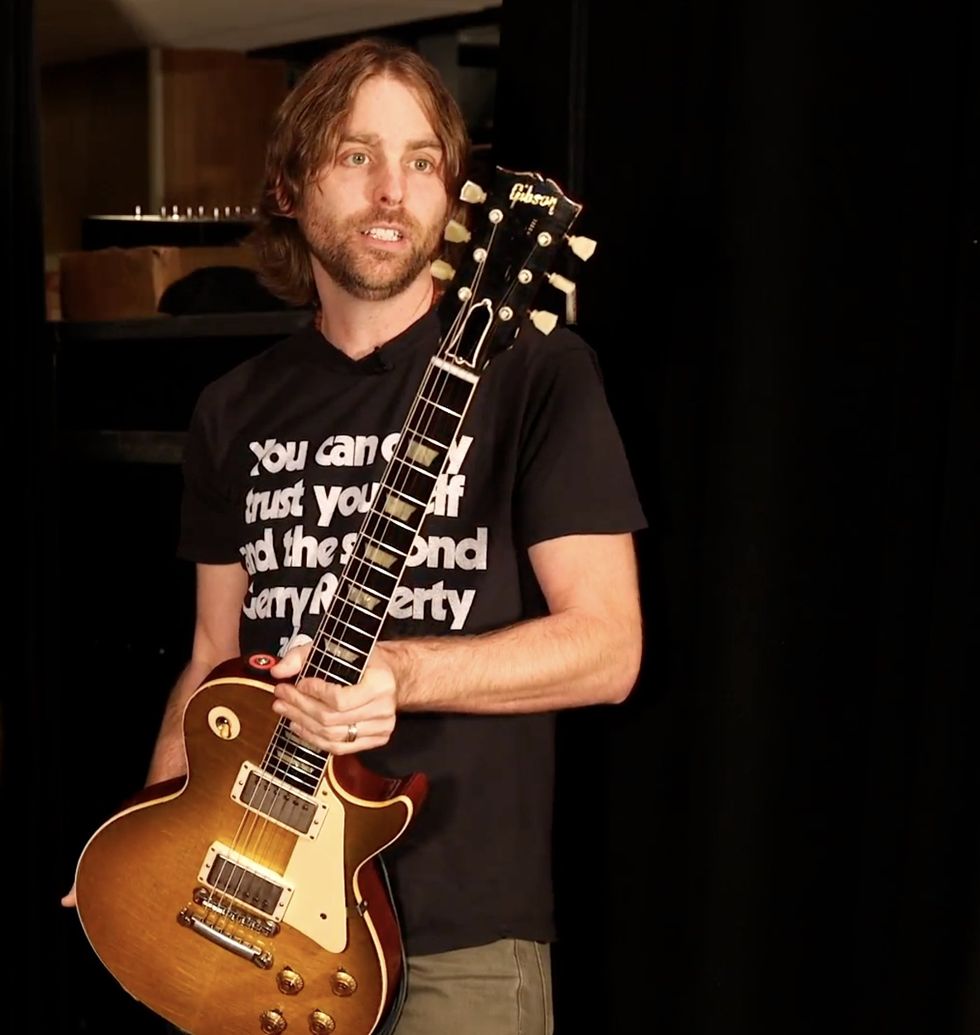
Jason Isbell’s Pedalboards
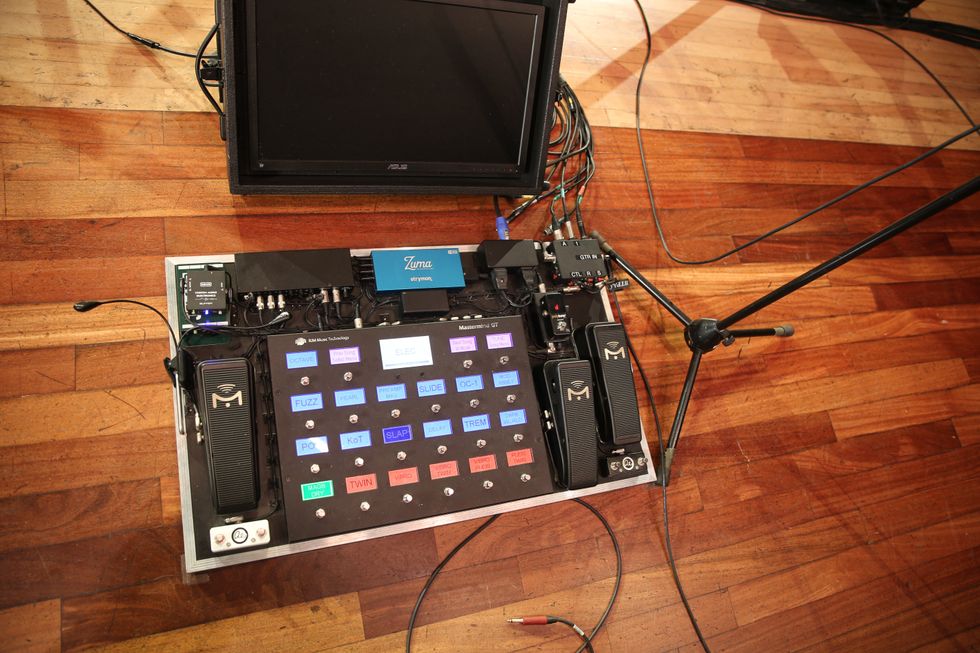
Jason Isbell could open a huge gear shop just by clearing off his boards and racks. First off, he has a complex wet/dry/wet setup that is parsed out via a RJM Mastermind, with two Magnatone Twilight Stereo combos carrying the all-wet effects. There’s also a Radial JX44v2, which serves as the core signal manager. Above it, on the rack, is an Echo Fix Chorus Echo EF-X3R. Moving up the rack, one drawer includes an Ibanez DML10 Modulation Delay II, EarthQuaker Devices Tentacle, and a trio of stereo-field-only effects: a Boss MD-500, Strymon Volante, and Hologram Electronics Microcosm. Another level up, you’ll find a Chase Bliss Preamp Mk II, Chase Bliss Tonal Recall Delay, Chase Bliss Dark World Reverb, Chase Bliss Condor EQ/Filter, Chase Bliss Gravitas Tremolo, Chase Bliss CXM-1978 Reverb (stereo-field only), Keeley 30ms Automatic Double Tracker, gold Klon Centaur, Analog Man Sun Lion Fuzz/Treble Booster, Analog Man King of Tone with 4-jack mod, Keeley 4-knob CompROSSor, Pete Cornish OC-1 Optical Compressor, EHX Micro POG, Analog Man ARDX20 Delay, and a trio of Fishman Aura Spectrum DIs.

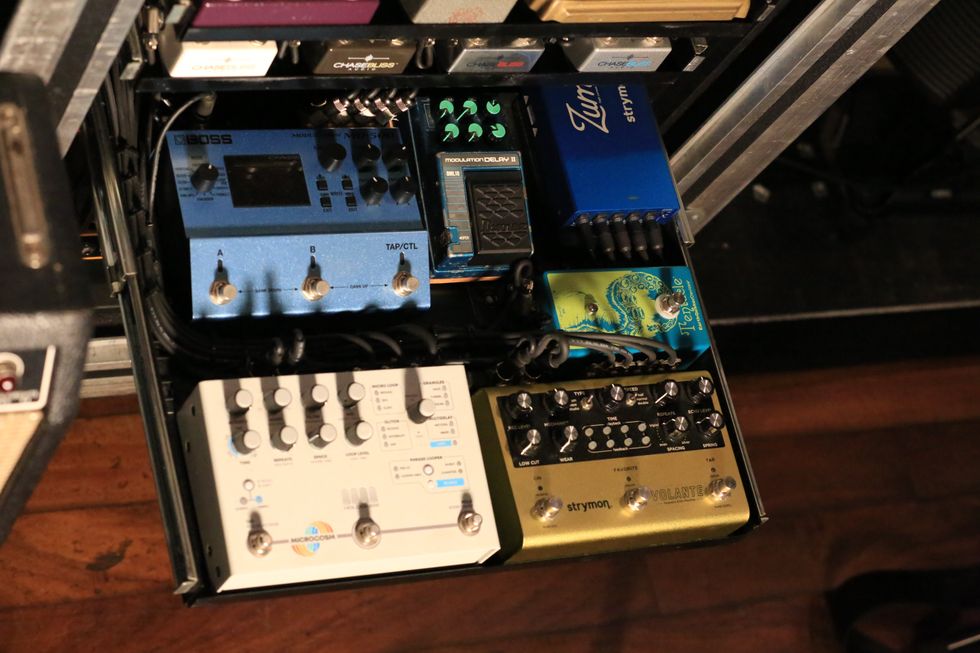
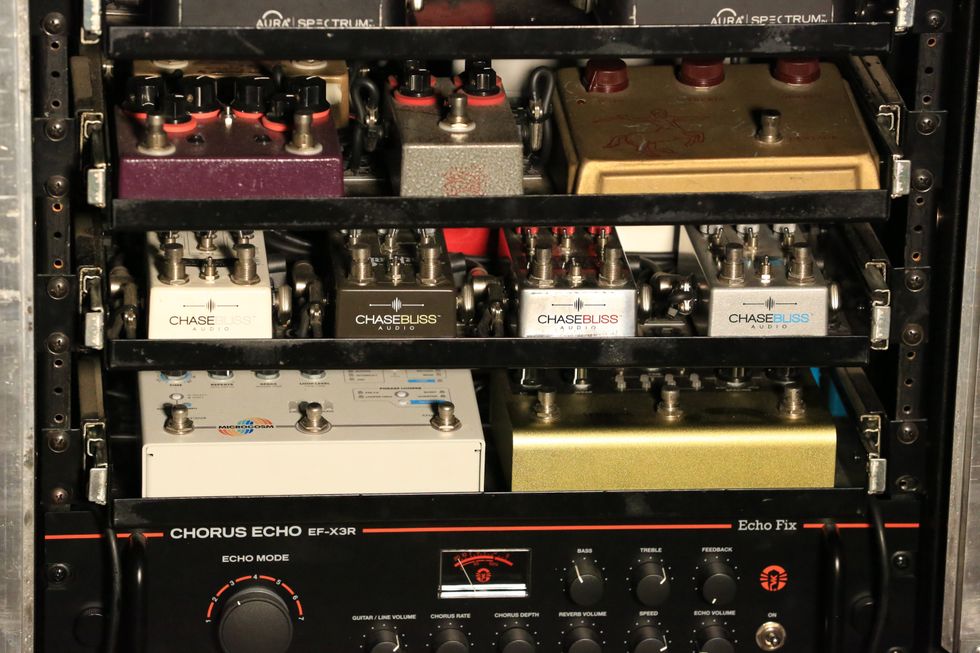
Sadler Vaden’s Pedalboard
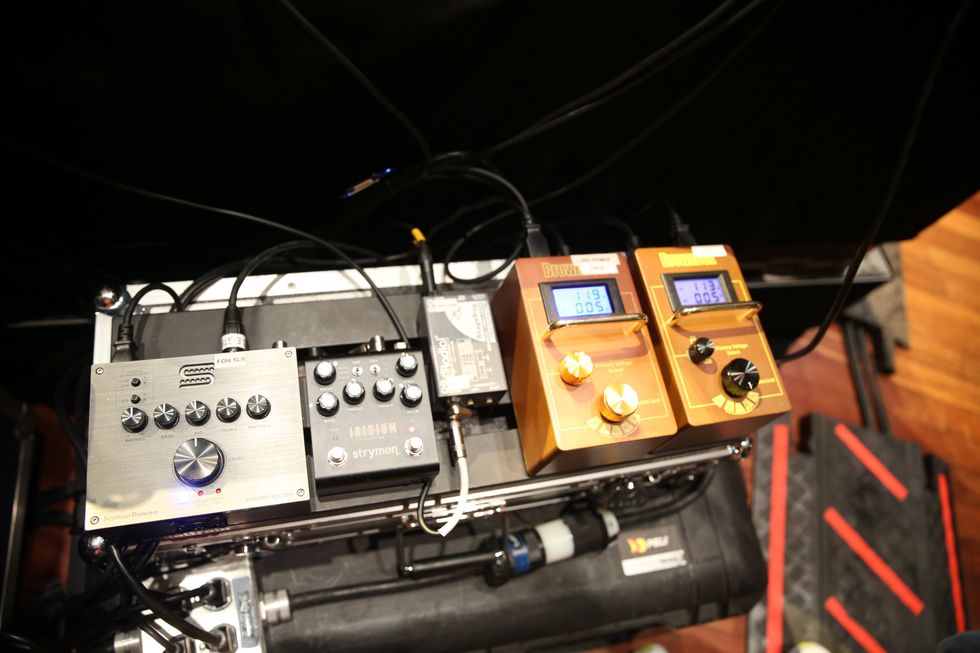
Isbell’s 6-string sparring partner Sadler Vaden’s pedalboard chain starts with a Dunlop Clyde McCoy Wah, then a Lehle volume pedal, which feeds the Gig Rig. He uses a Line 6 M5 with a Dunlop expression pedal for a lot of modulation effects. Other pedals include a Crowther Prunes & Custard, Nordvang No.1, an Analog Man Dual Analog Delay, Comp, and King of Tone, a Strymon BlueSky, and a Greer Lightspeed. Every effect is isolated into the Gig Rig. The board has four outputs, two for each side of his 3rd Power British Dream, one for a Marshall plexi, and one that goes to an aux line and splits to a Vox Pacemaker. The auxiliary line is as a backup in case Sadler’s amps go down. It consists of a Strymon Iridium into a Seymour Duncan Power Stage that goes to FOH. And finally, his acoustic pedalboard sports a Shure wireless running into an ART Tube MP/C preamp into a L.R. Baggs Venue DI, with a Radial Engineering Bigshot selector.
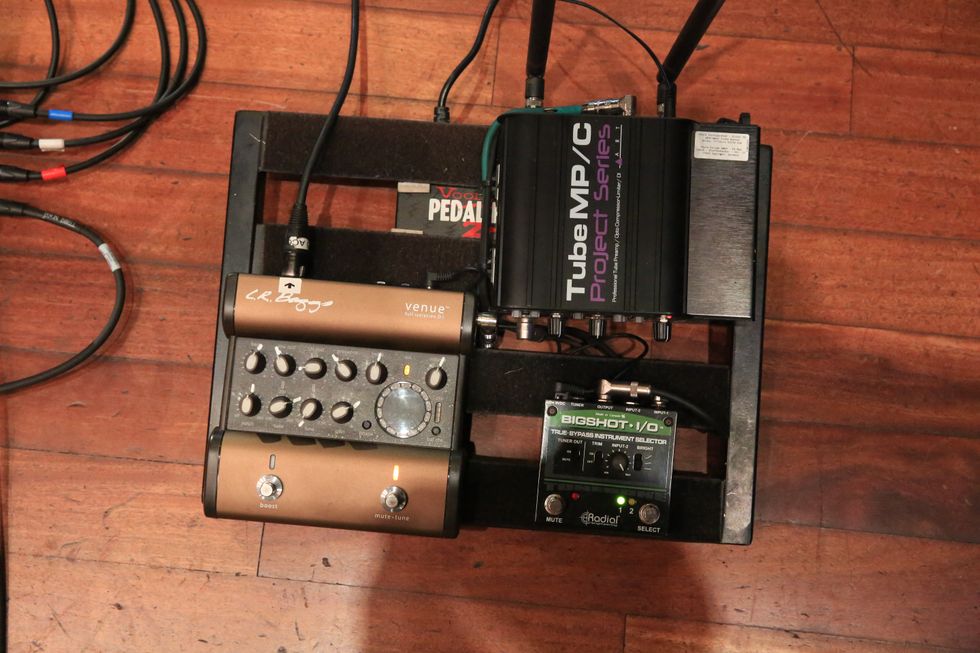
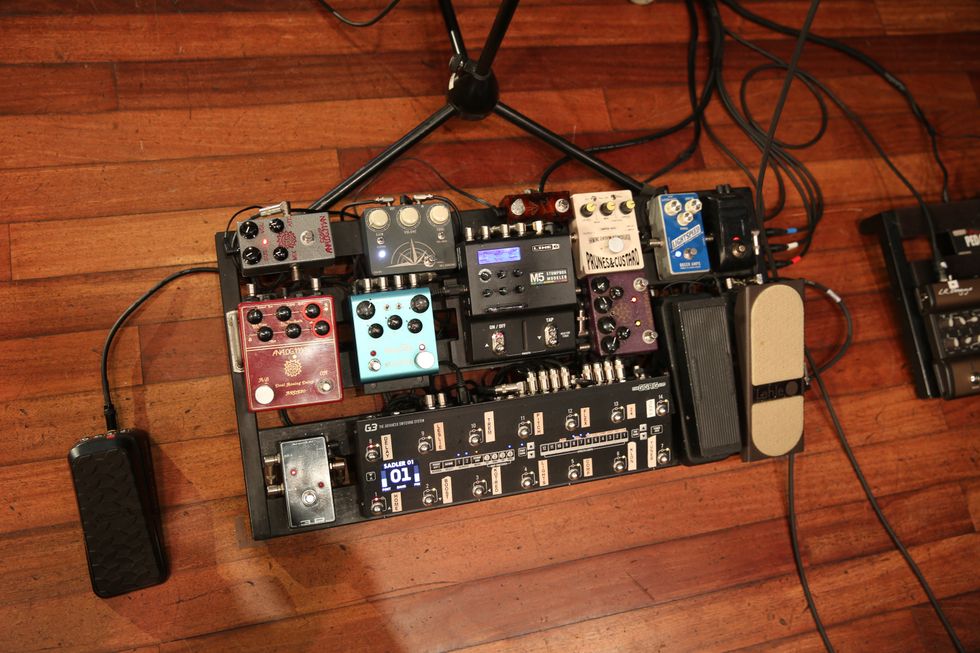
MICHAEL LEMMO
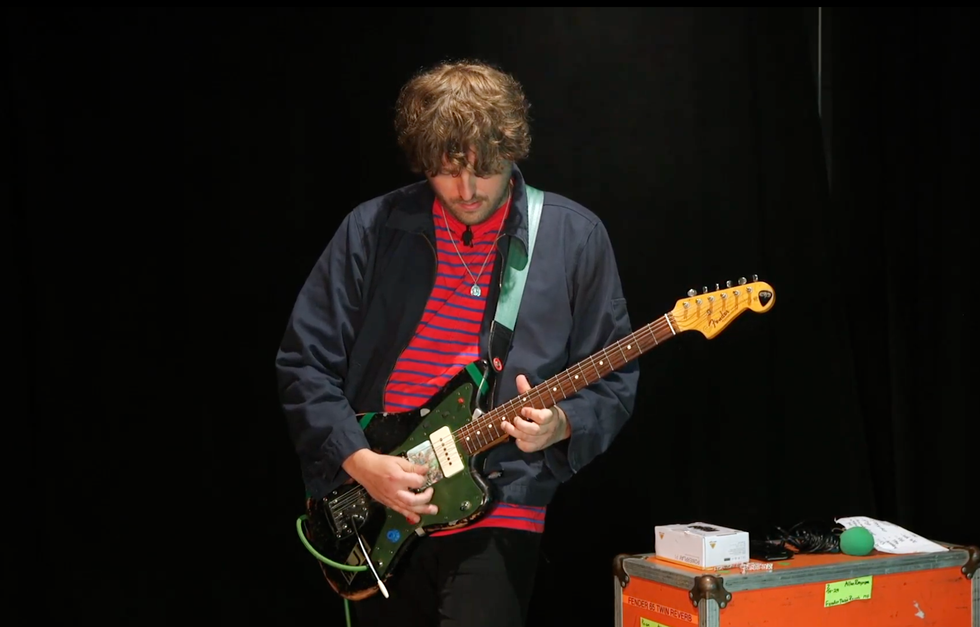
Michael Lemmo’s Pedalboard
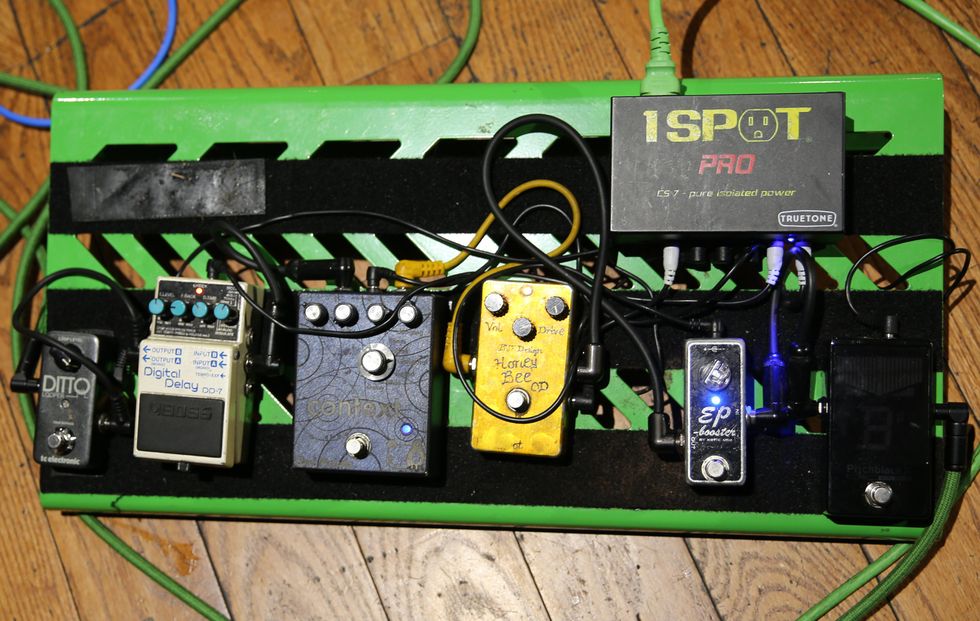
Rising star player Michael Lemmo relies on his stomps for tone sculpting, but he doesn’t need much to get the job done. His signal hits a Korg tuner, followed by an Xotic EP Booster, Bearfoot FX Honey Bee OD, Red Panda Context, Boss DD-7, and TC Electronic Ditto. They’re all juiced by a Truetone 1 Spot Pro CS7.
HELMET’S PAGE HAMILTON

Page Hamilton’s Pedalboard
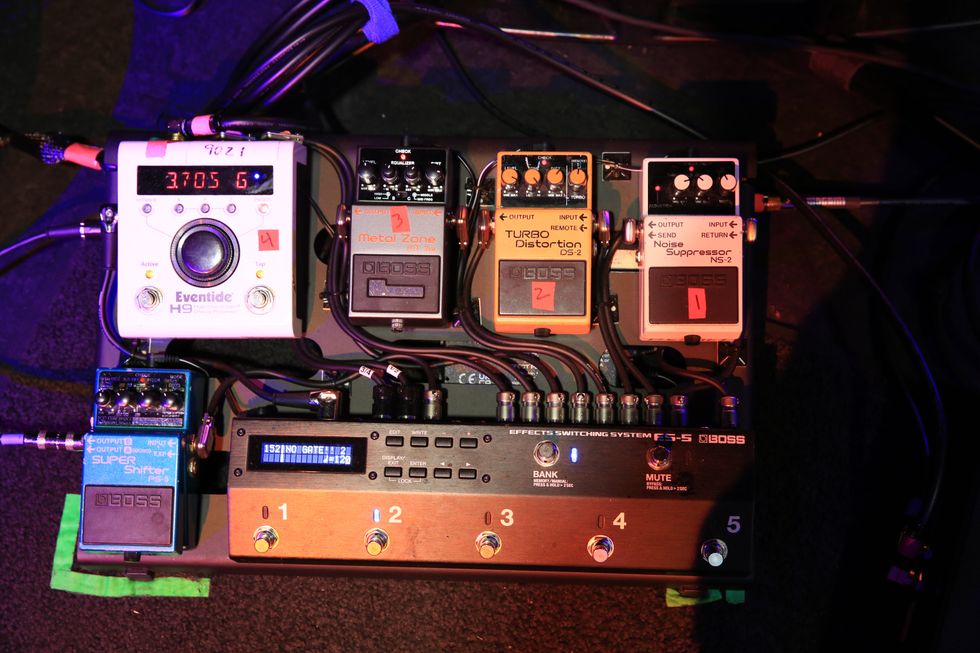
Page Hamilton used to travel with a full Bradshaw rig with rack gear, but he’s reduced things to a pair of Eventide H9 units and a handful of Boss boxes—a PS-5 Super Shifter, a MT-2W Metal Zone Waza Craft, a TS-2 Turbo Distortion, a NS-2 Noise Suppressor, and a FB-2 Feedbacker/Booster. A couple of Peterson Stomp Classic tuners keep his ESP Horizons ready, and a Boss ES-5 Effects Switching System organizes all his sounds and settings.
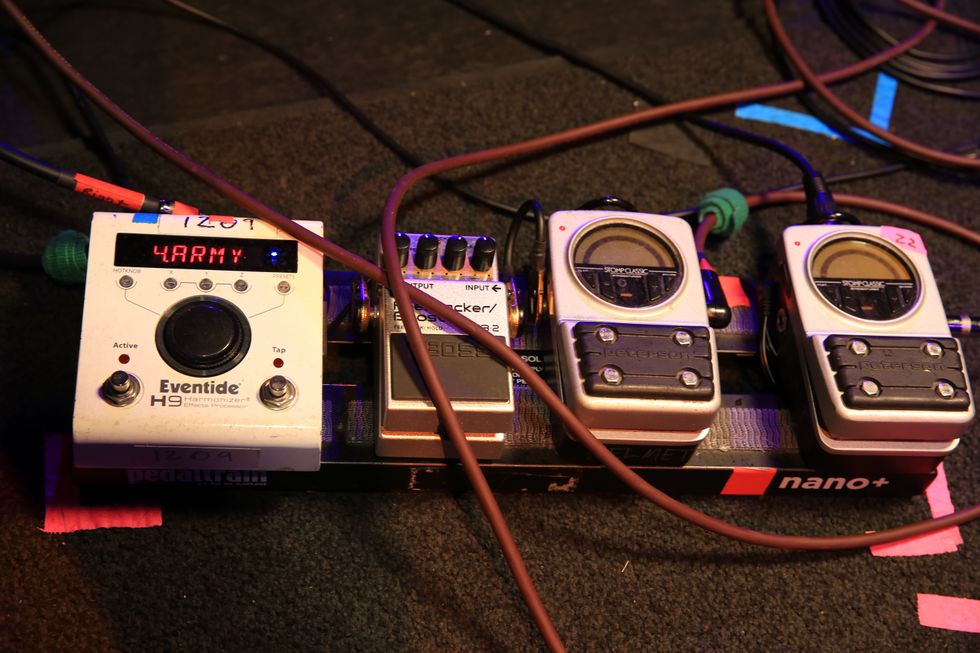
BARONESS’ JOHN BAIZLEY, GINA GLEASON, AND NICK JOST
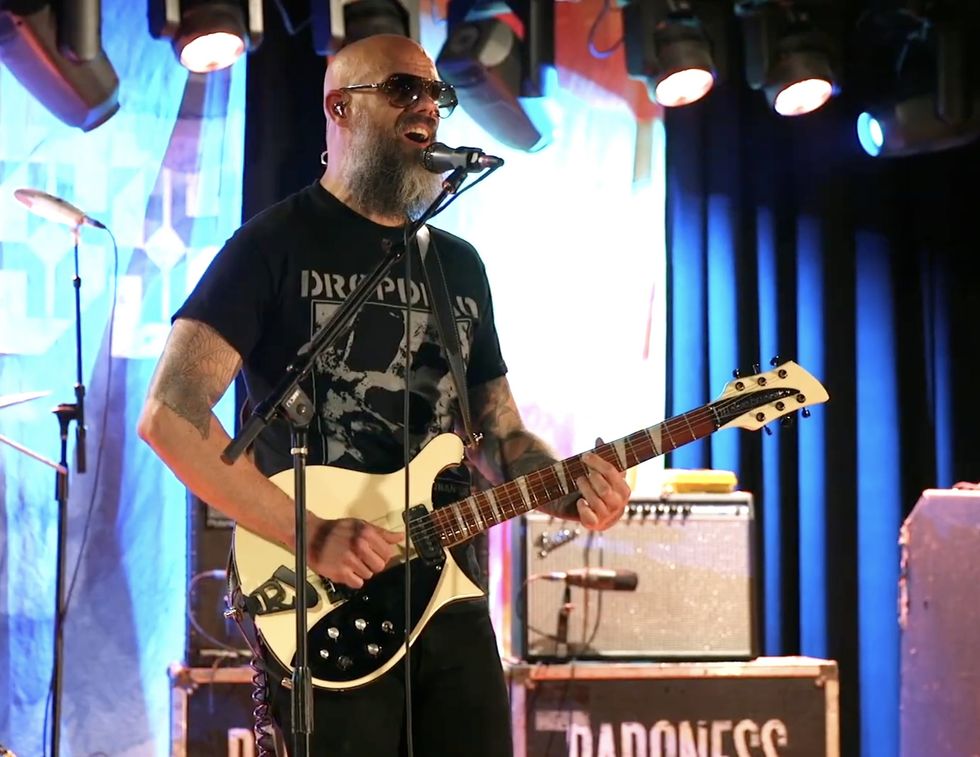
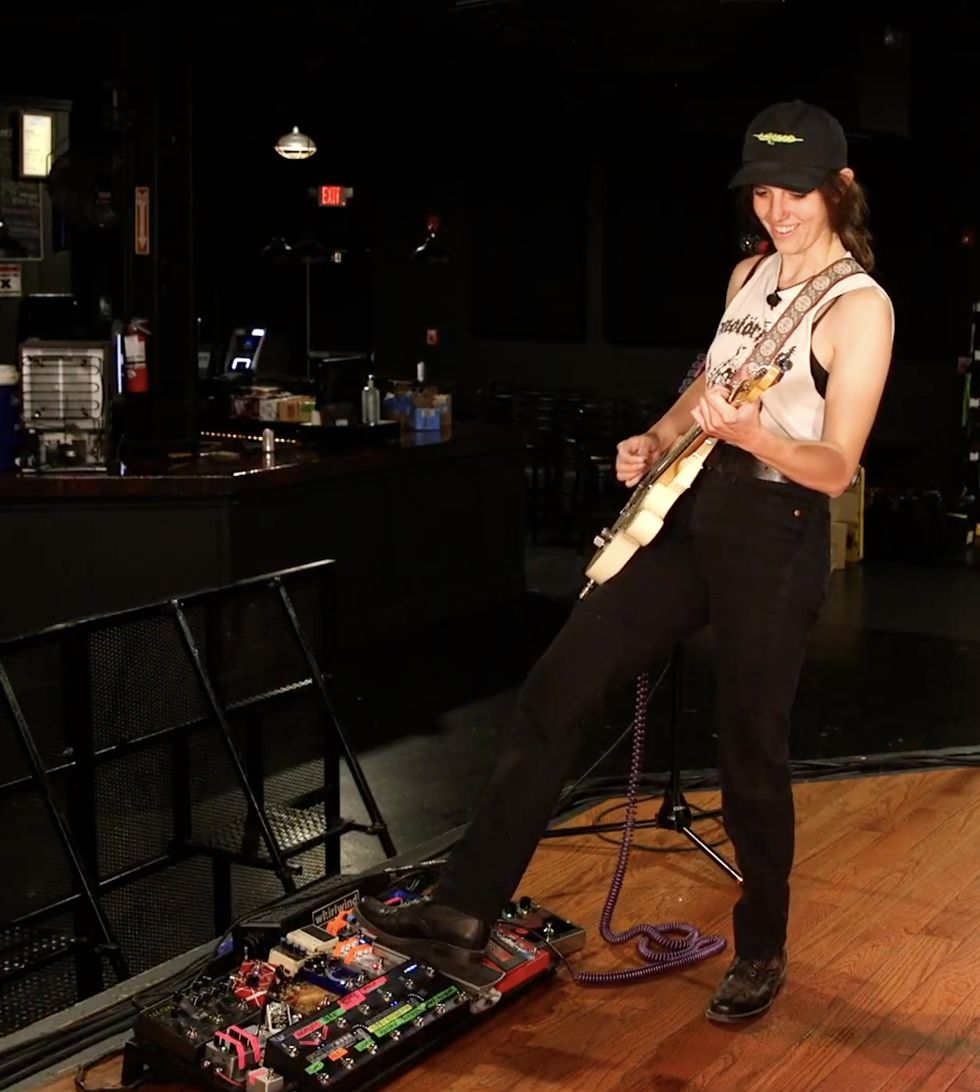
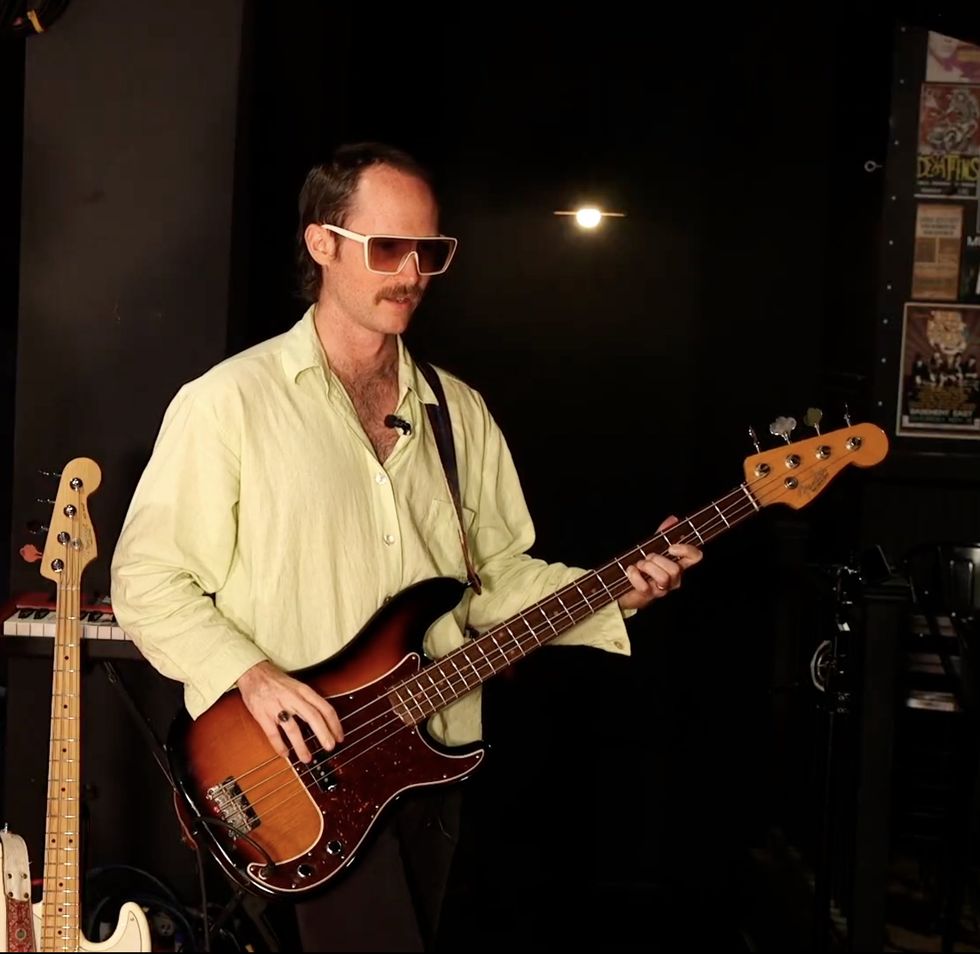
John Baizley’s Pedalboard
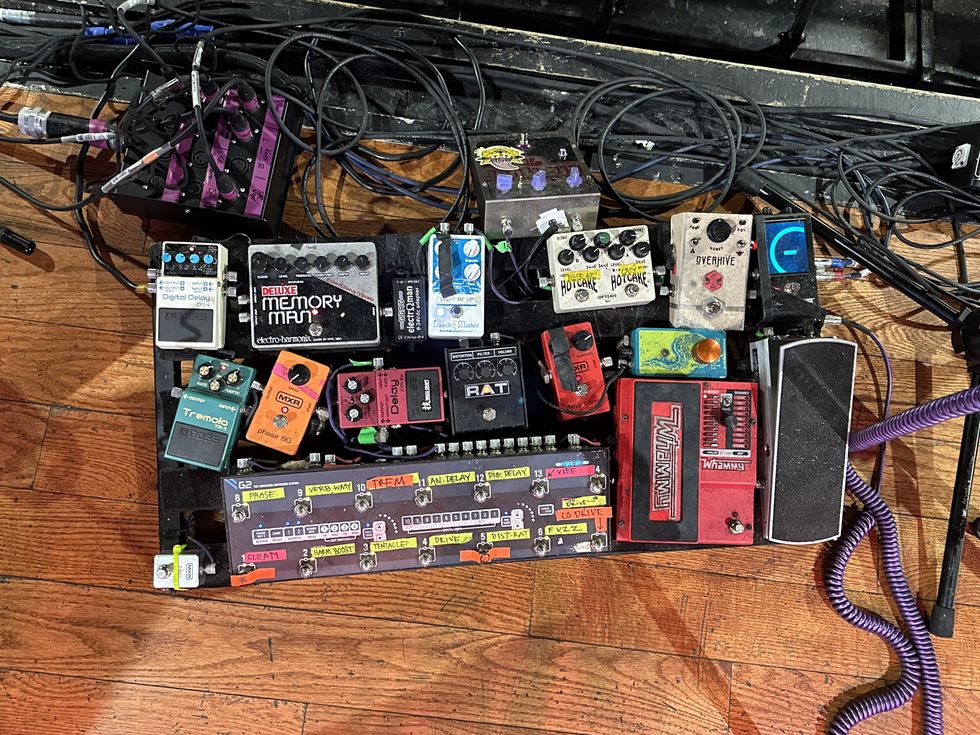
The Baroness frontman’s board is packed with staged dirt boxes and tasteful mod stomps, all held in check with a GigRig G2, Peterson StroboStomp, and Ernie Ball Volume Pedal. The crown drive jewels are a heavily modded EHX Big Muff and Crowther Double Hot Cake, but a Beetronics FX Overhive and Pro Co RAT add sizzle, too. A Boss DD-3, DM-2W, and TR-2, EarthQuaker Devices Dispatch Master and Tentacle, MXR Phase 90 and Dyna Comp, and EHX Deluxe Memory Man handle the rest, while a DigiTech Whammy lurks for its moment to blast off.
Gina Gleason’s Pedalboard

Gleason’s favorite drive these days is the EQD Zoar. Piling on top of that are a MXR Super Badass Distortion, MXR Timmy, modded EHX Big Muff, and a touchy Philly Fuzz Infidel prototype; an Xotic SP Compressor and UAFX 1176 Studio Compressor tighten things up when needed. Three time machines—the Strymon TimeLine, EQD Space Spiral, and Boss DD-3—handle delay, and a Walrus Slo dishes out reverb. The MXR EVH Phase 90 adds some color along with another DigiTech Whammy. The Ernie Ball Volume Pedal, Peterson StroboStomp, and GigRig G2 finish the line-up.
Nick Jost’s Pedalboard
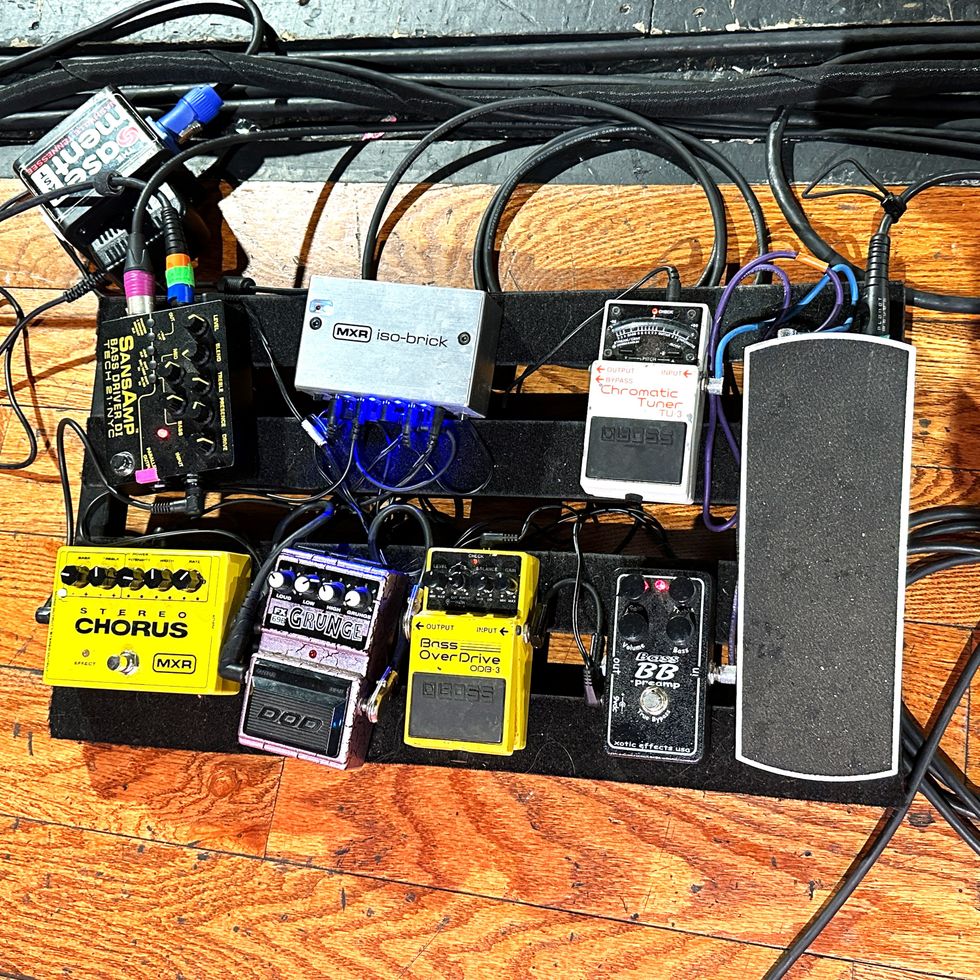
The bassist’s board is powered by an MXR Iso-Brick, with an Ernie Ball Volume Pedal and Boss TU-3 pulling utility duties before an Xotic Bass BB Preamp, Boss ODB-3, DOD FX69B Grunge, MXR Stereo Chorus, and Tech 21 SansAmp Bass Driver DI.
WOLFMOTHER’S ANDREW STOCKDALE
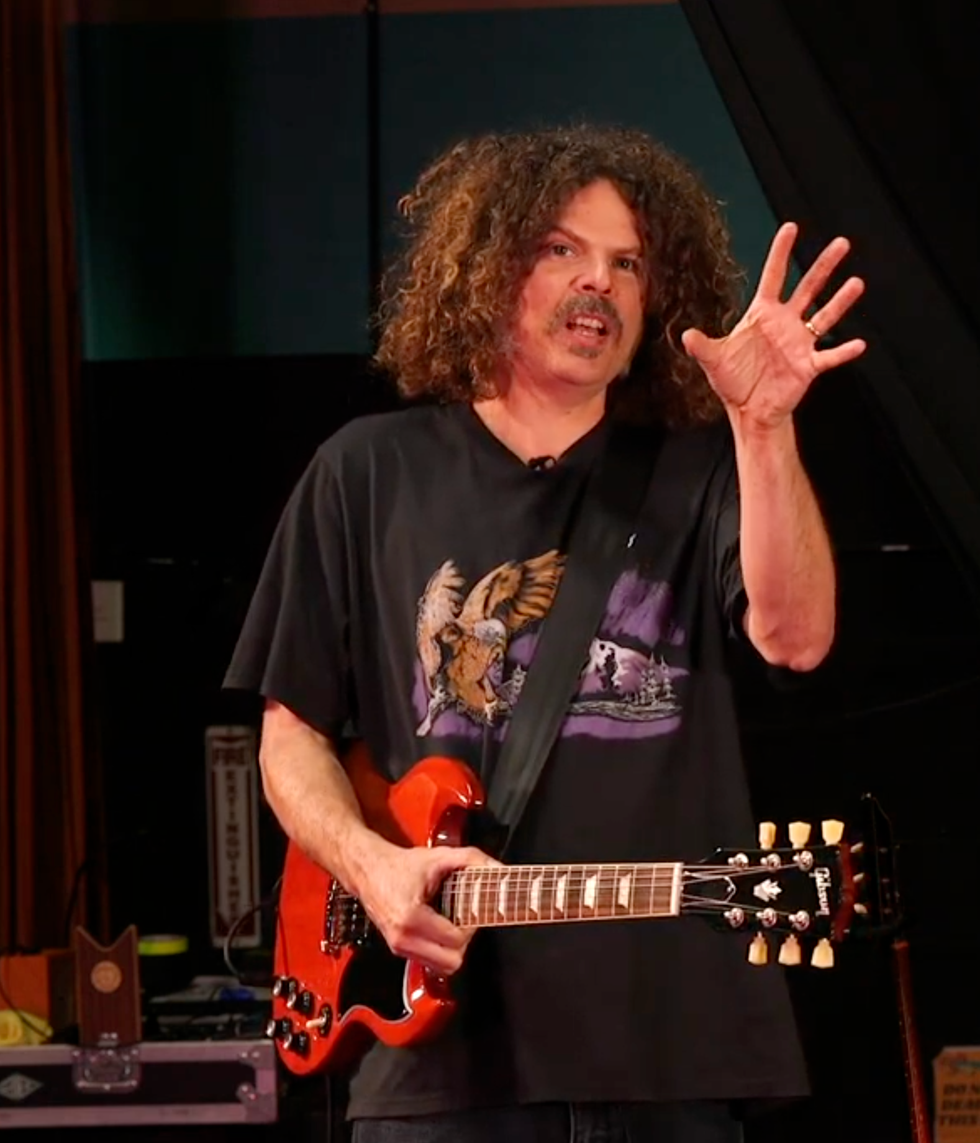
Andrew Stockdale’s Pedalboard
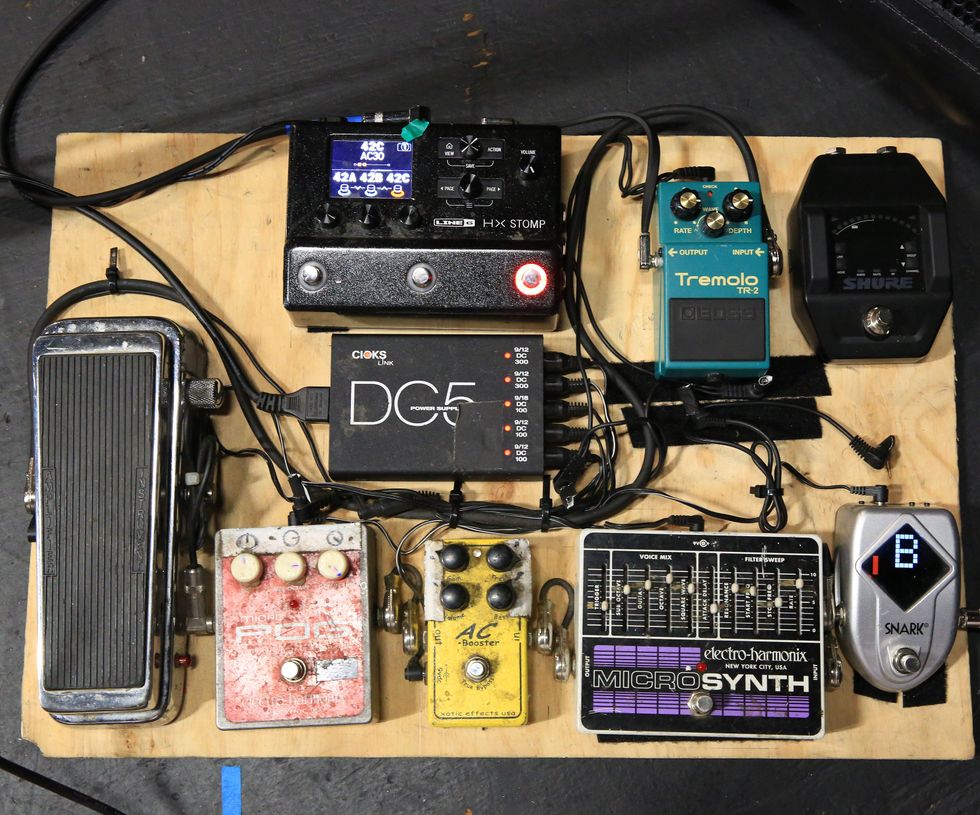
When we walked into Nashville’s Eastside Bowl for this Rig Rundown with Wolfmother’s alpha canine, Andrew Stockdale, it sounded like he was playing his SG through a Marshall stack at head-ripping volume. Nope! Stockdale was blasting skulls apart with a Line 6 HX Stomp doing the heavy tonal lifting. The rest of his board’s layout is a Snark floor tuner, an EHX Micro Synth (a Wolfmother staple), an Xotic AC Booster, an EHX Micro POG, a Dunlop Cry Baby 535Q Multi-Wah, a Boss TR-2 tremolo, a CIOKS DC5 power supply, and Shure GLXDC+ wireless.
FEARLESS FLYERS' CORY WONG AND MARK LETTIERI
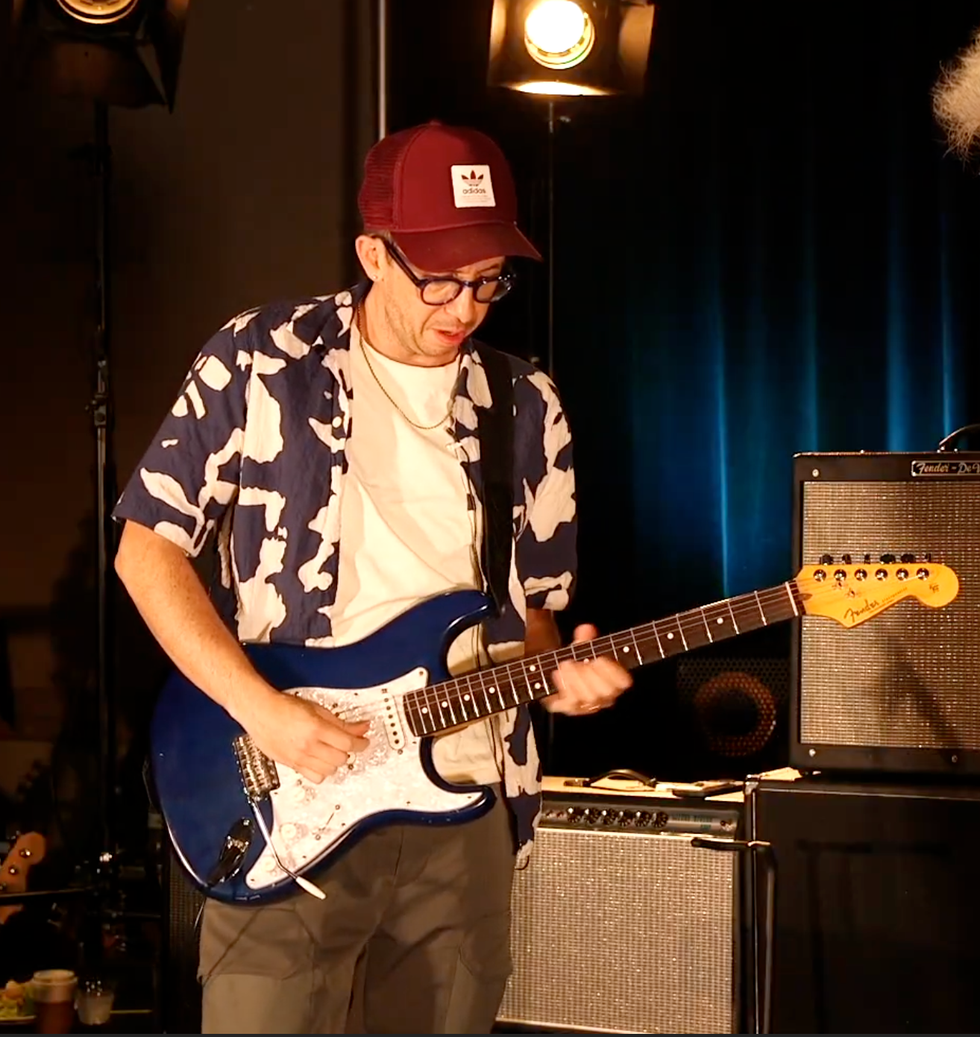
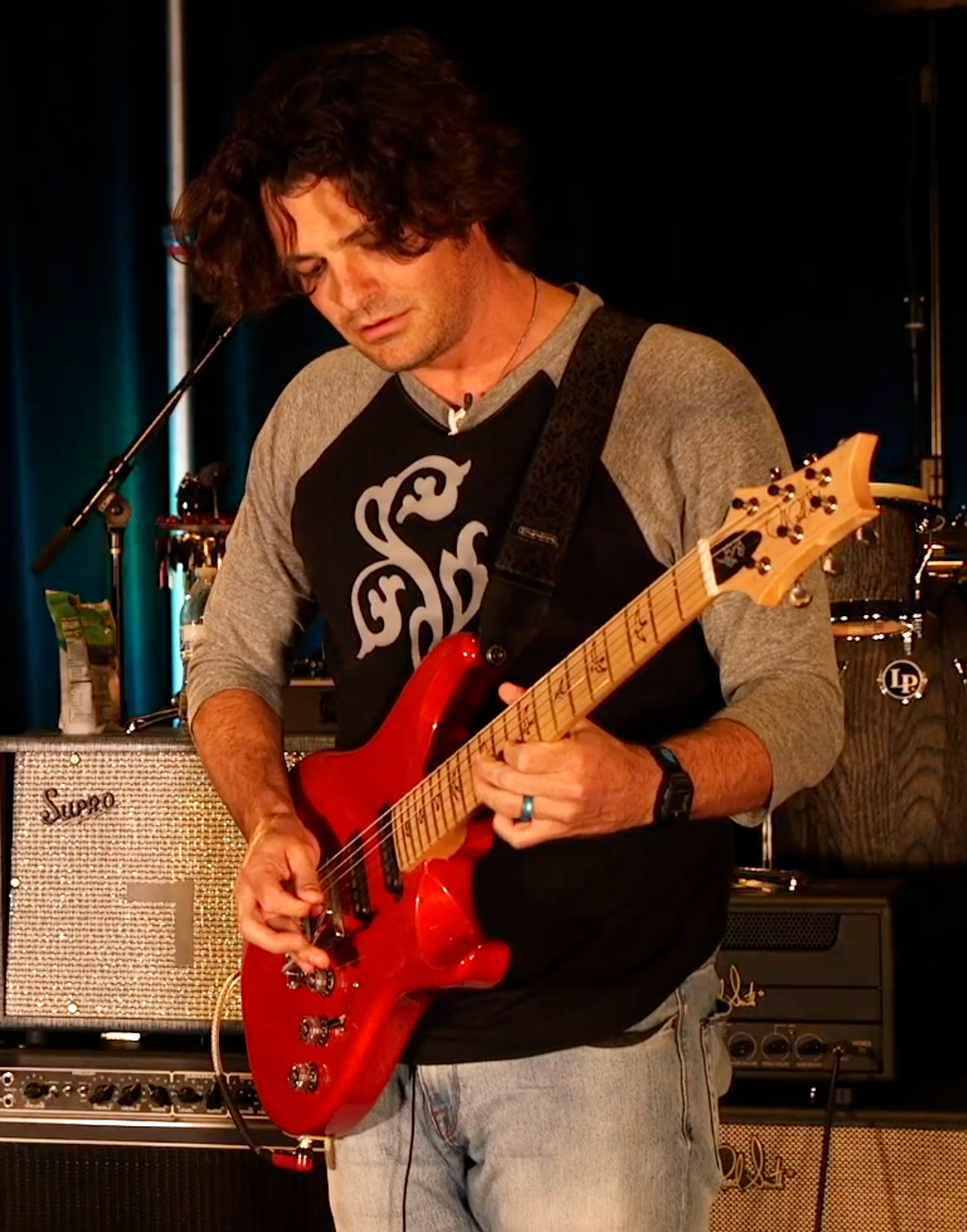
Cory Wong’s Pedalboard
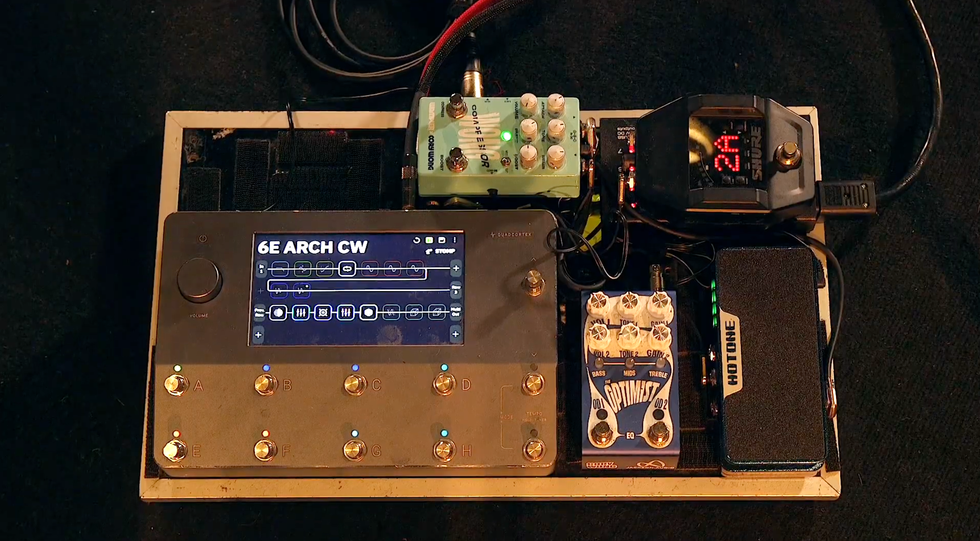
Through a Shure GLXD16 wireless system, Cory Wong flows his guitar into his Neural DSP Quad Cortex, which runs a beta version of his Archetype: Cory Wong plugin, based off of a melding of a Dumble and a Fender Twin. The signal hits an onboard envelope filter and rarely used pitch shifter, then exits out the effects loop into a Wampler Cory Wong Compressor, Jackson Audio The Optimist, and a Hotone Wong Press. The signal goes back into the Quad Cortex, where there’s a preset phaser, stereo tape delay, and modulated reverb, plus a freeze effect. Two XLR outs run to front of house, while two run to Wong’s Mission Engineering Gemini 2 stereo cabinet.
Mark Lettieri’s Pedalboard
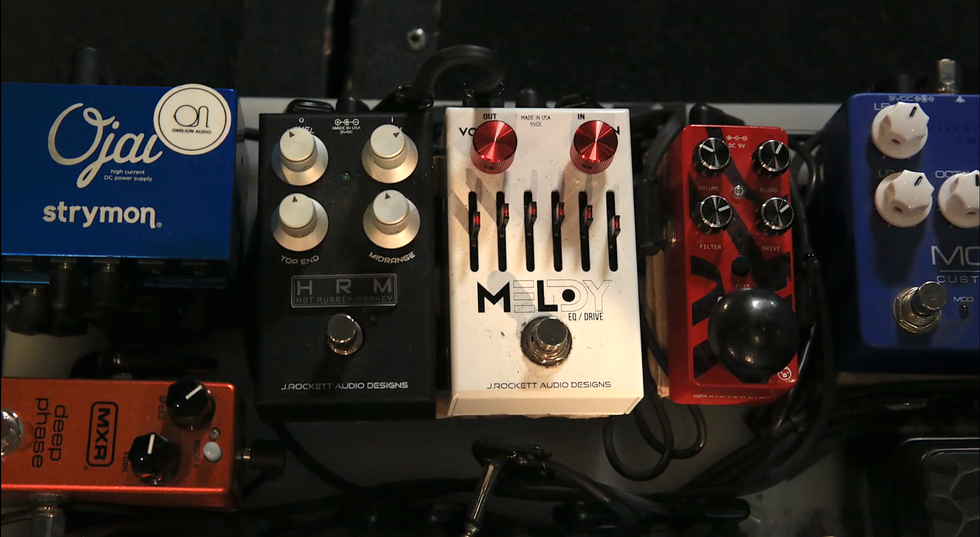
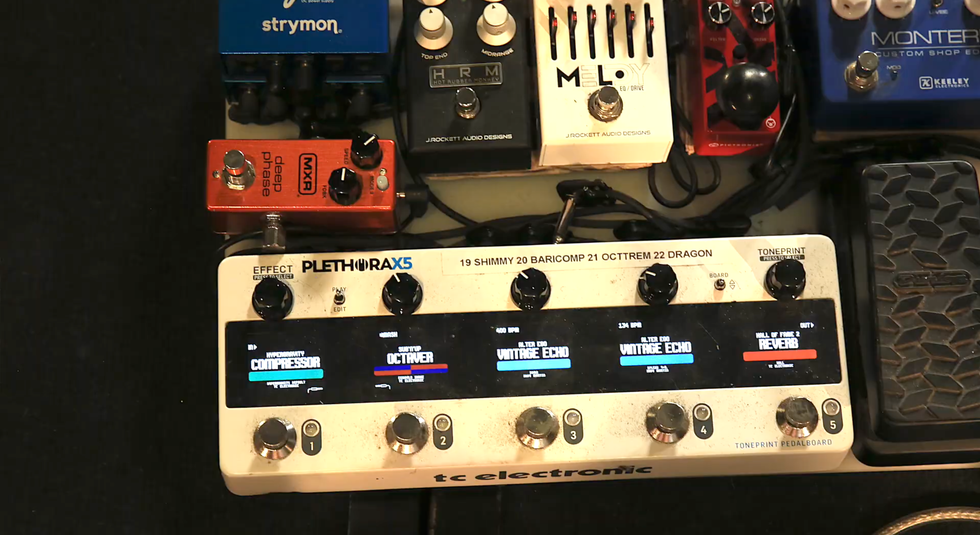
Mark Lettieri’s signal first hits a Keeley Monterey Custom Shop Edition, followed by an MXR Deep Phase, J. Rockett HRM, J. Rockett Melody OD (Lettieri’s signature), Pigtronix Octava, and a Dunlop DVP4, all powered by a Strymon Ojai. A TC Electronic TonePrint Plethora X5 pedalboard handles coordination and switching between the devices.
SLASH’S BLUES BALL BAND
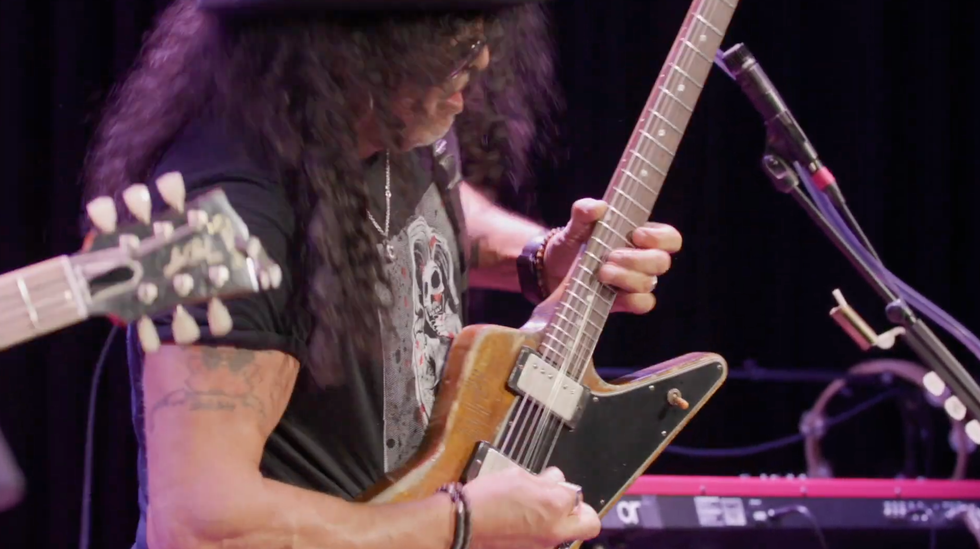
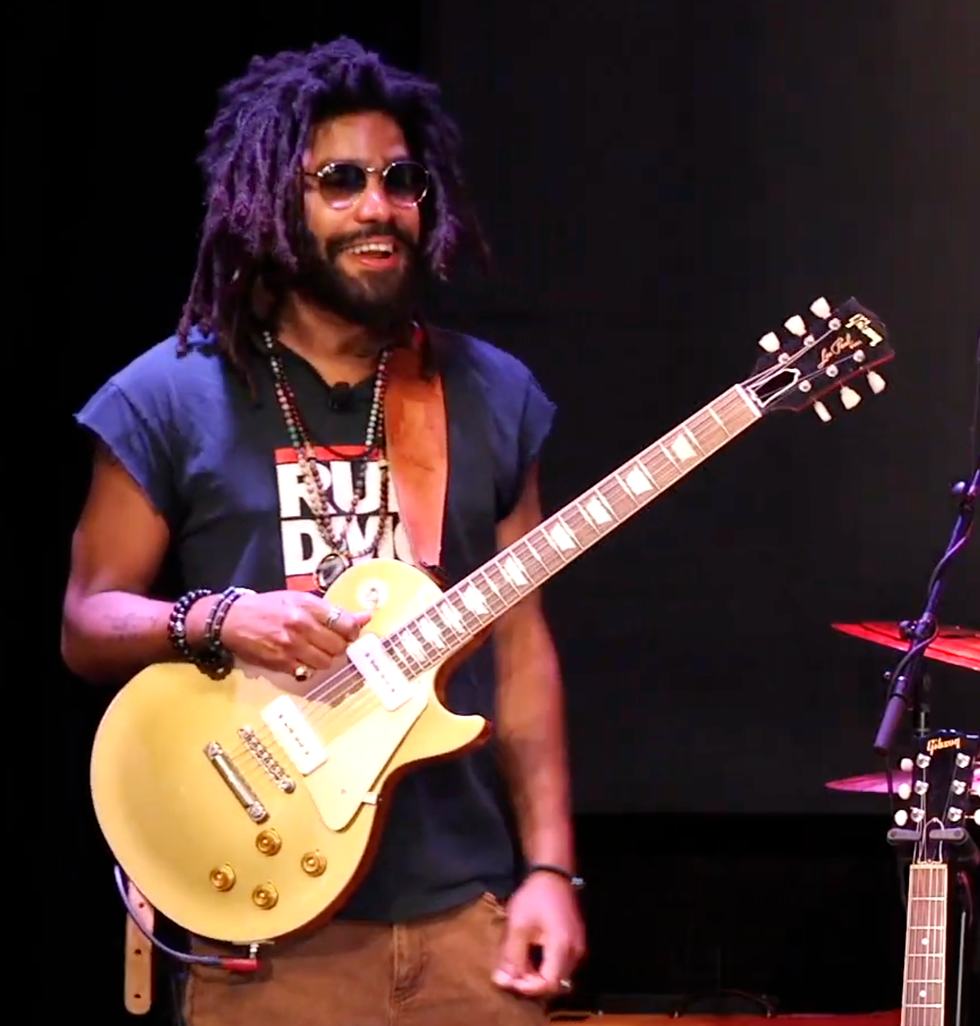
Slash’s Pedalboard

“I haven’t had a pedalboard in front of my feet since the ’80s,” Slash told us. But with the Blues Ball tour, he kept it simple, stomping his own boxes. His chain includes a Peterson StroboStomp, Dunlop Cry Baby, MXR CAE Boost/Line Driver, Ibanez TS9 Tube Screamer, MXR EVH90, BBE Soul Vibe Rotary Simulator, Boss DD-3 Digital Delay, and MXR Uni-Vibe, with everything powered by a Voodoo Lab Pedal Power 2 Plus. All pedals are taped down with their settings dialed in. When his signal leaves the board, it hits a Whirlwind Selector A/B box, where it splits off between his amps and his Talk Box rig.
Tash Neal’s Pedalboard

Tash Neal keeps a modest pedalboard at his feet: a D’Addario Chromatic Pedal Tuner, Dunlop Cry Baby, XTS Custom Pedals Precision Multi-Drive, EHX Green Russian Big Muff, and a Fender Waylon Jennings Phaser, powered by a T-Rex Fuel Tank.
RANCID’S MATT FREEMAN
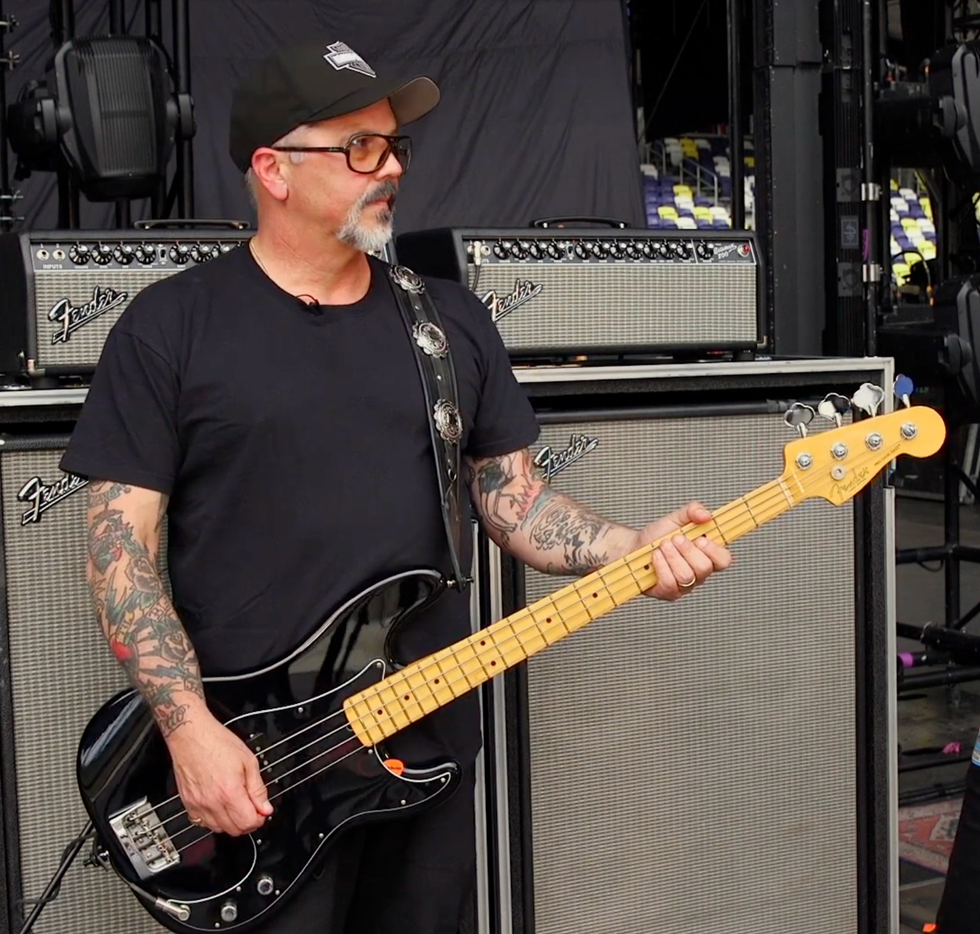
Matt Freeman’s Pedalboard
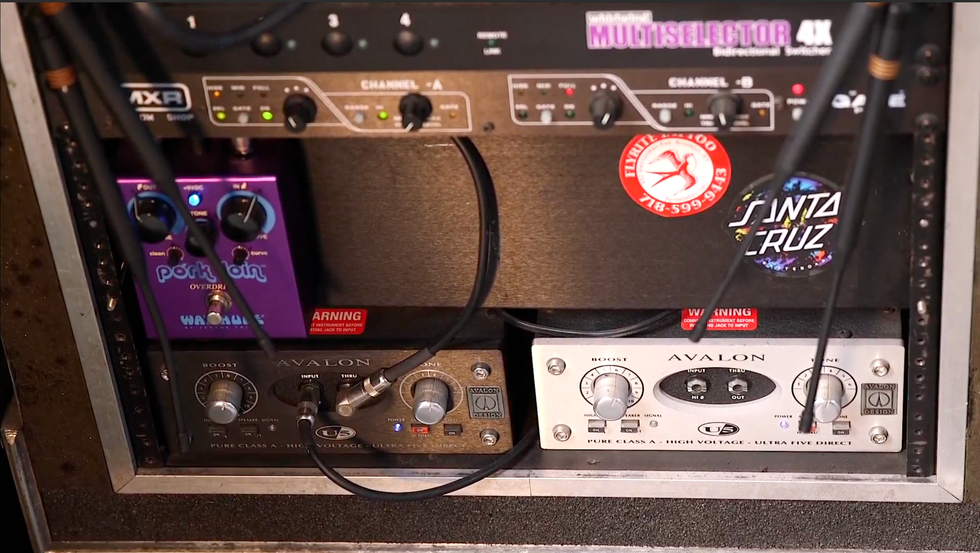
Bassist Matt Freeman’s signal goes wireless into one of his Avalon U5 Class A Active Instrument DI and Preamps, and then through a Way Huge Pork Loin Overdrive, set to give his Bassman a good push.
CHRISTONE “KINGFISH” INGRAM
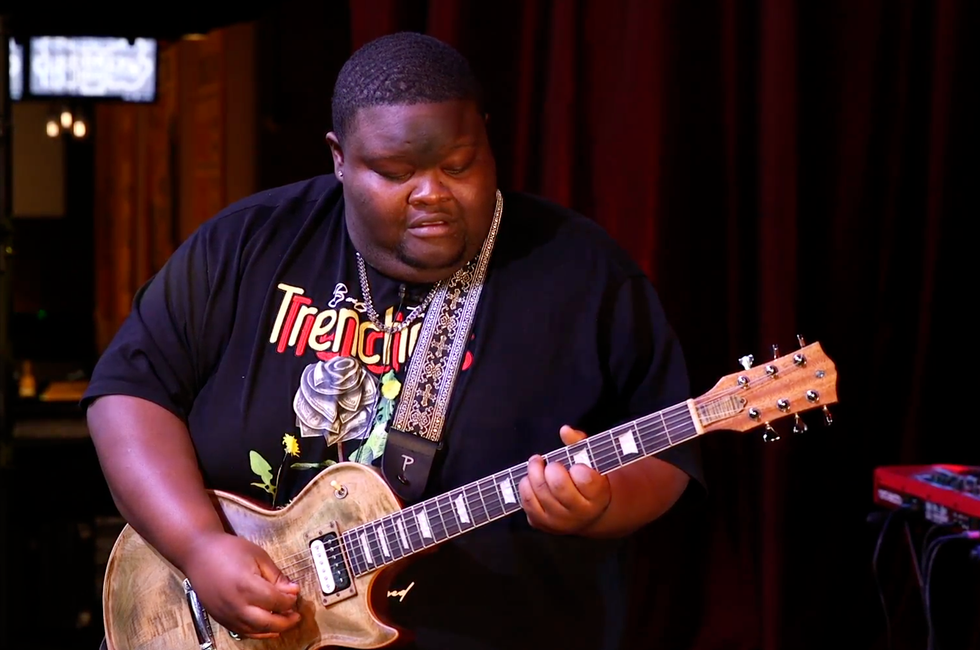
Kingfish’s Pedalboard
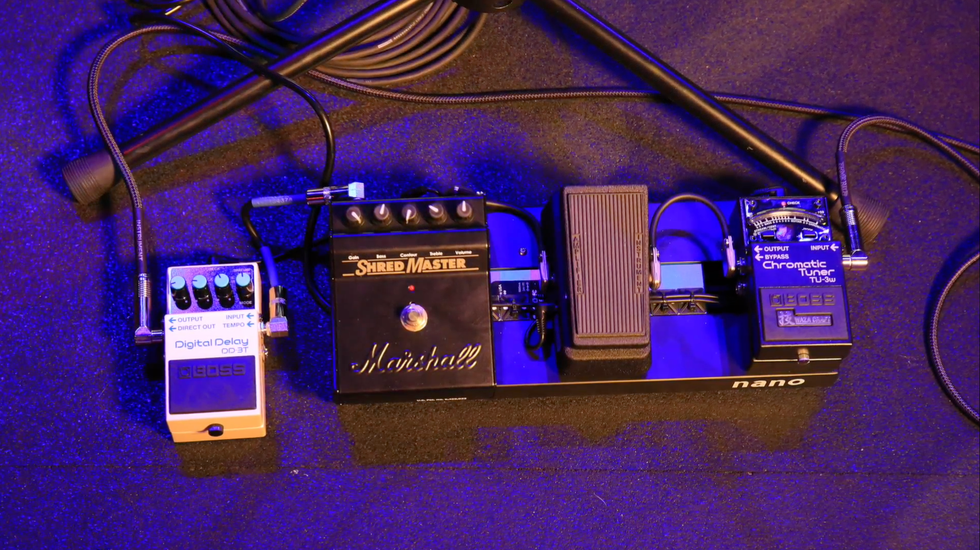
Kingfish’s signal starts with a Shure Wireless BLX4, which hits a Boss TU-3w Chromatic Tuner. From there, the route is a Dunlop Cry Baby Mini Wah, a Marshall ShredMaster, and a Boss DD-3 Delay. The pedals live on a Pedaltrain Nano board and were assembled by Barry O’Neal at XAct Tone Solutions.
DIXIE DREGS’ STEVE MORSE
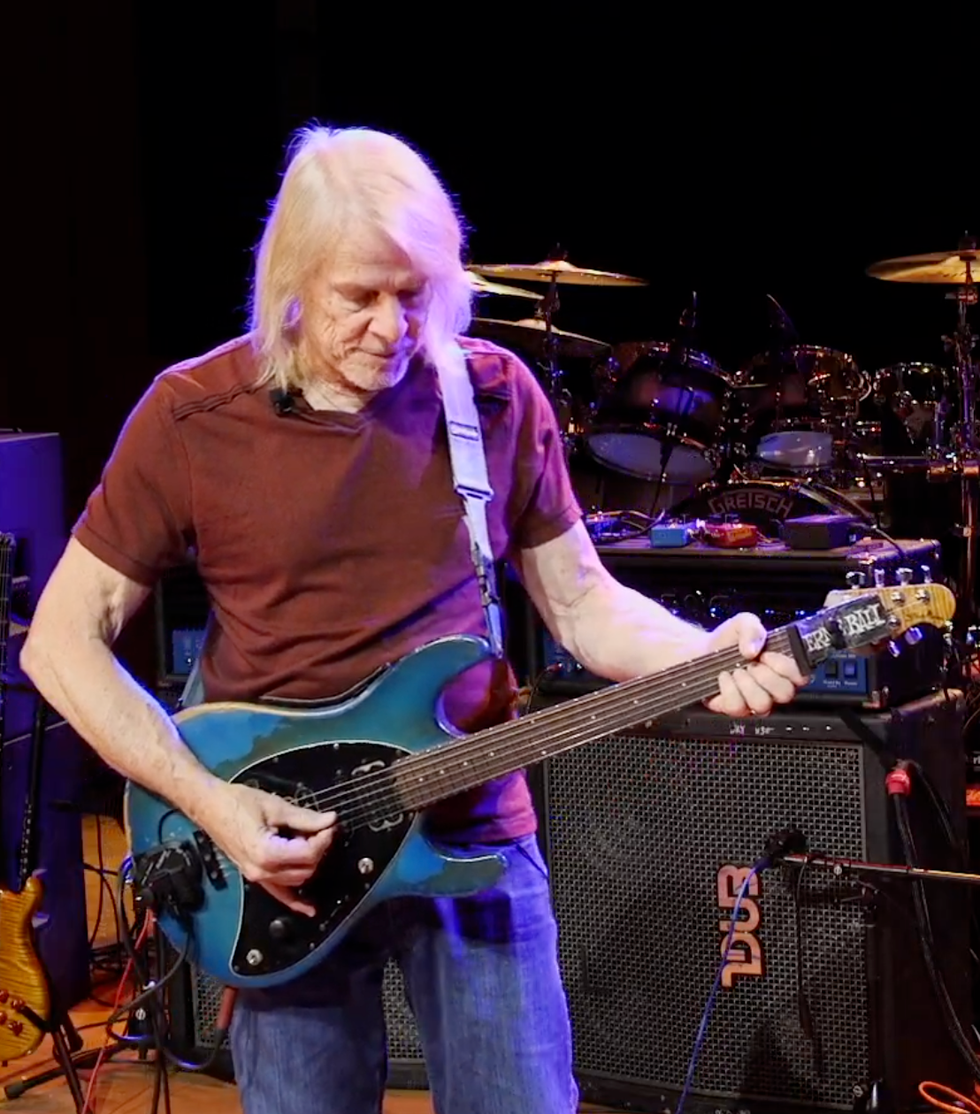
Steve Morse’s Pedalboard
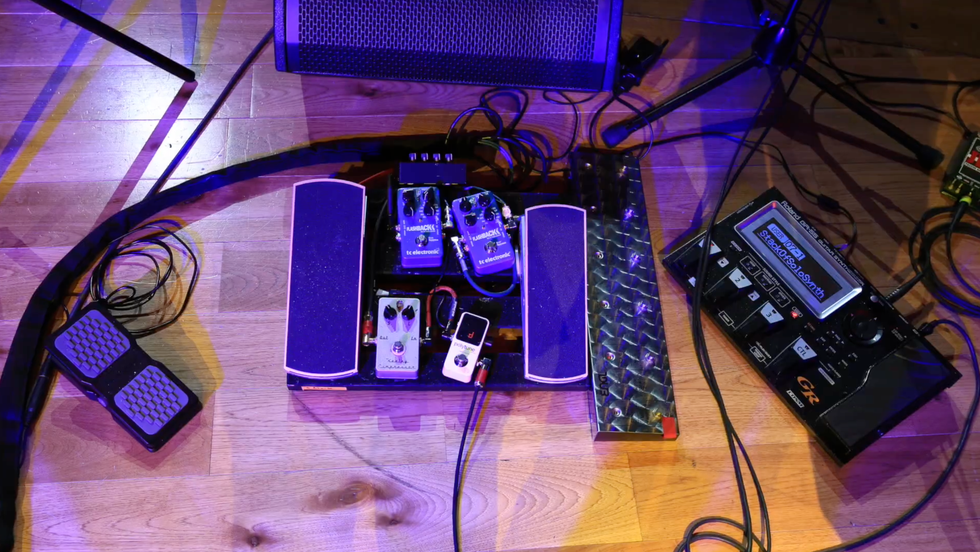
Steve plays through a pair of 3-channel Engl Steve Morse signature 100-watt amps—one wet, one dry—but his pedal chain is relatively simple: a Keeley Compressor, two Ernie Ball volume pedals, two TC Flashbacks, a TC Electronic Polytune, and a foot controller for his Engls.
